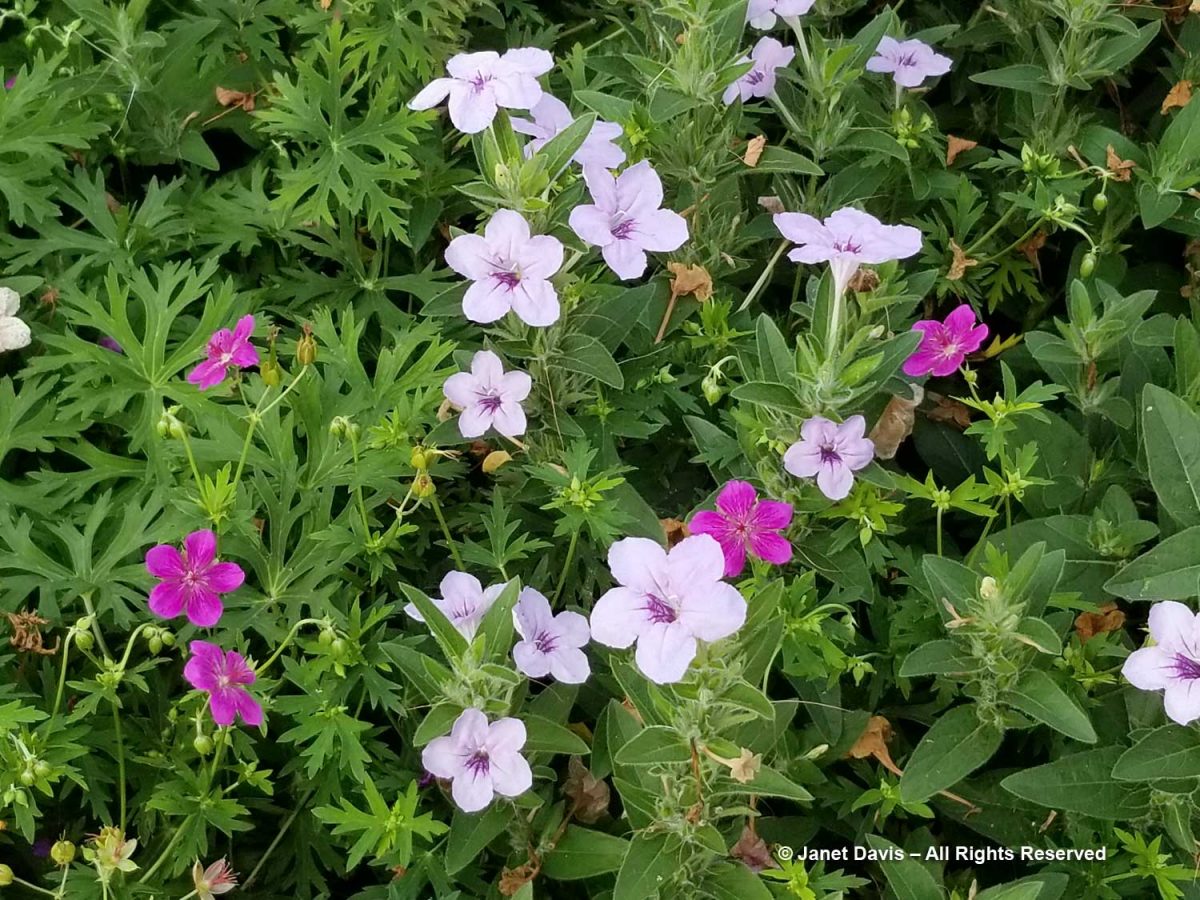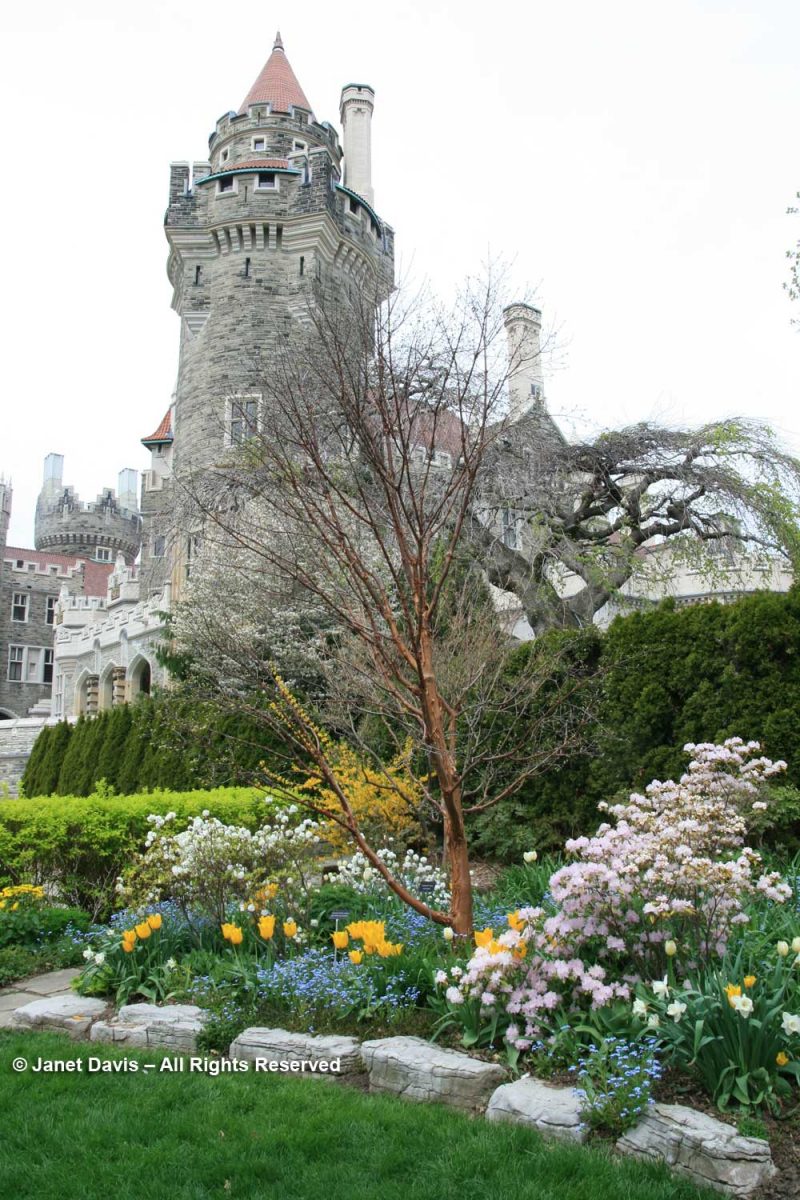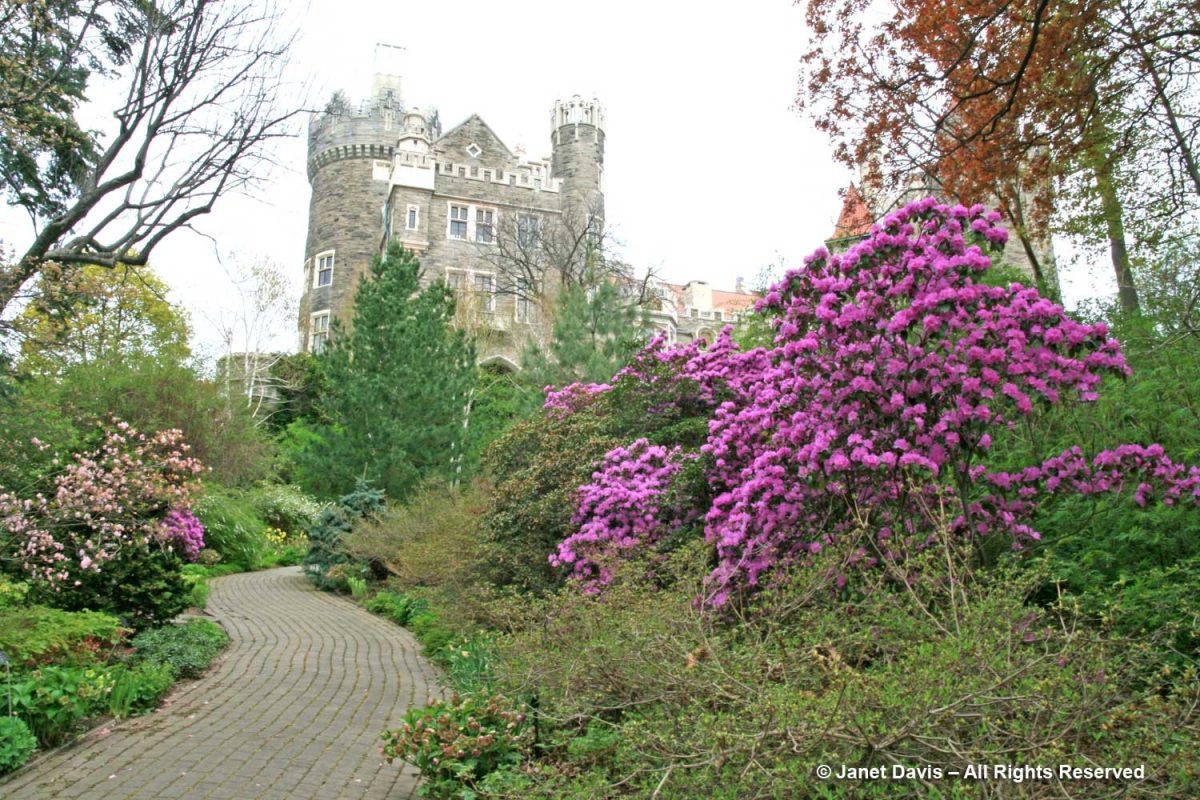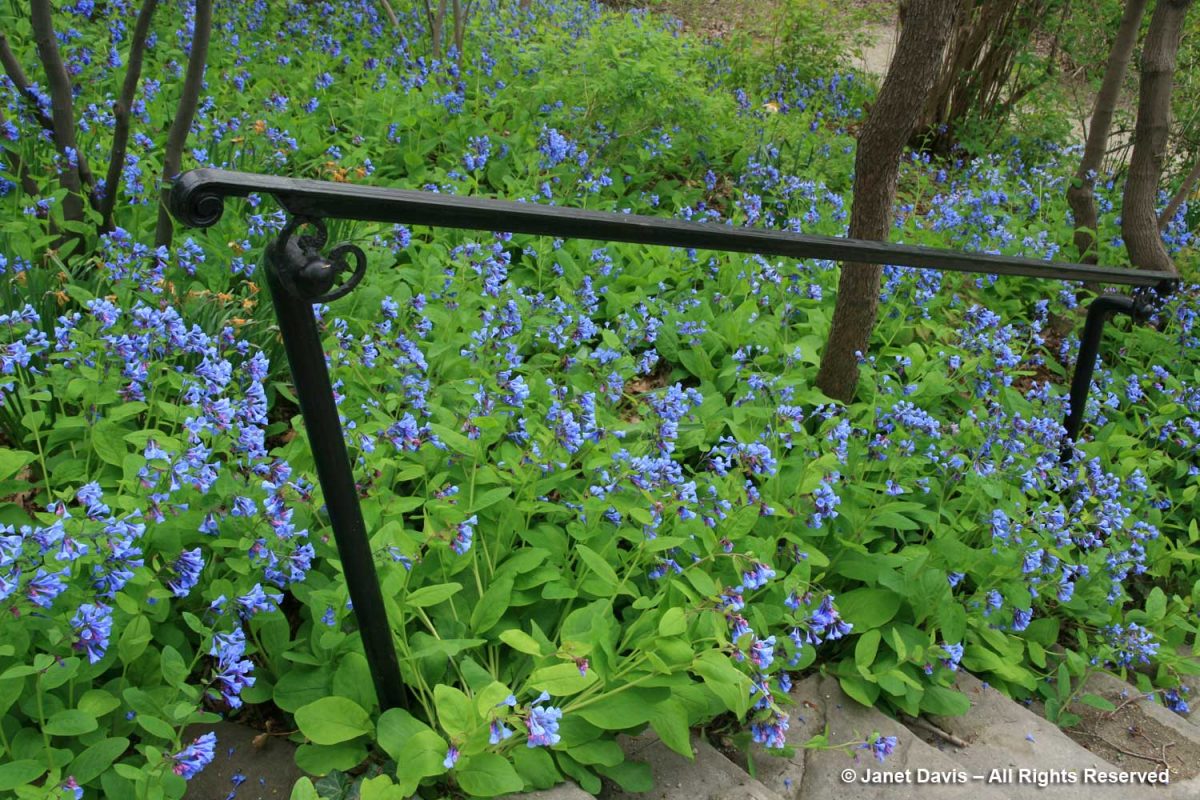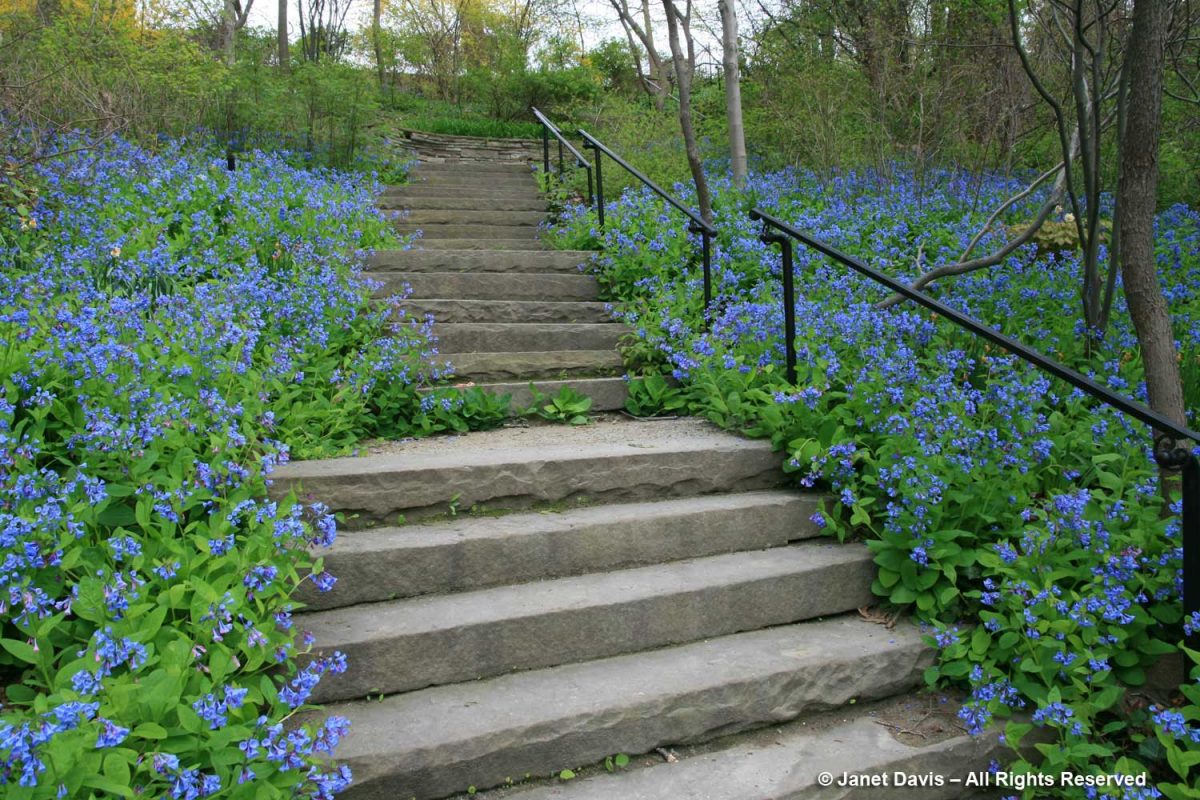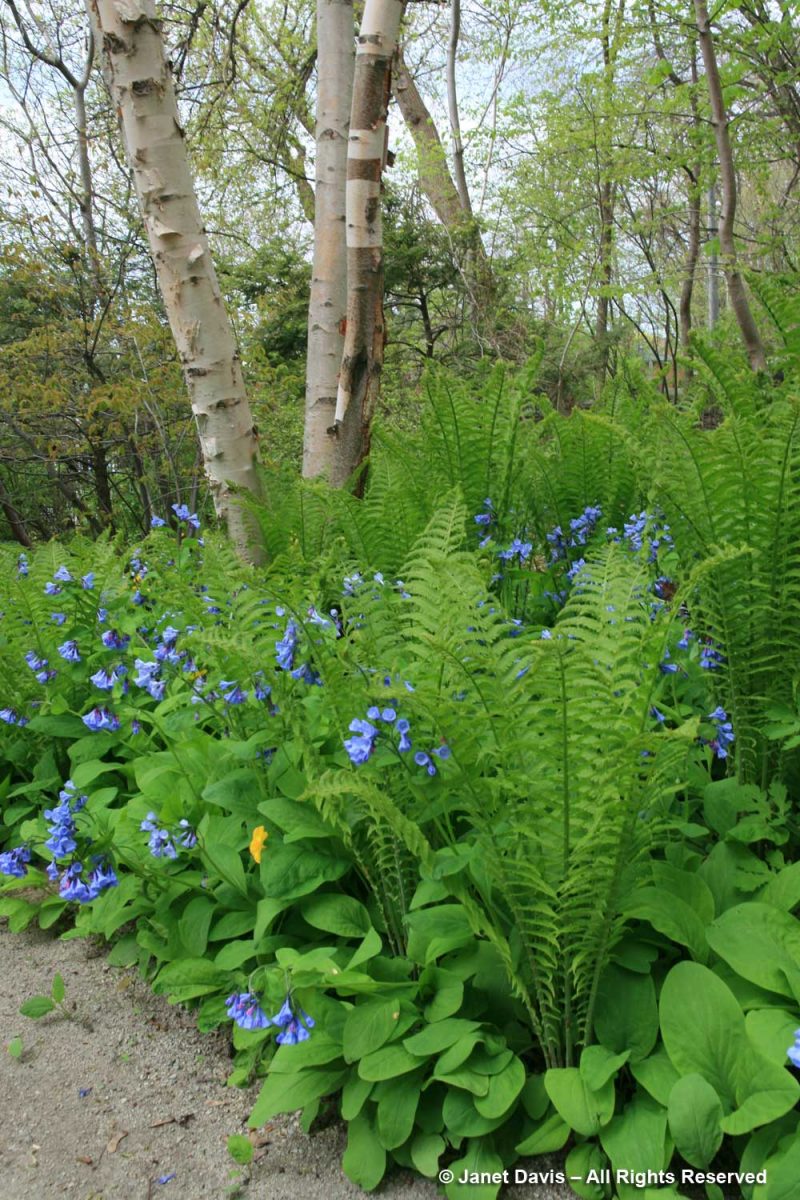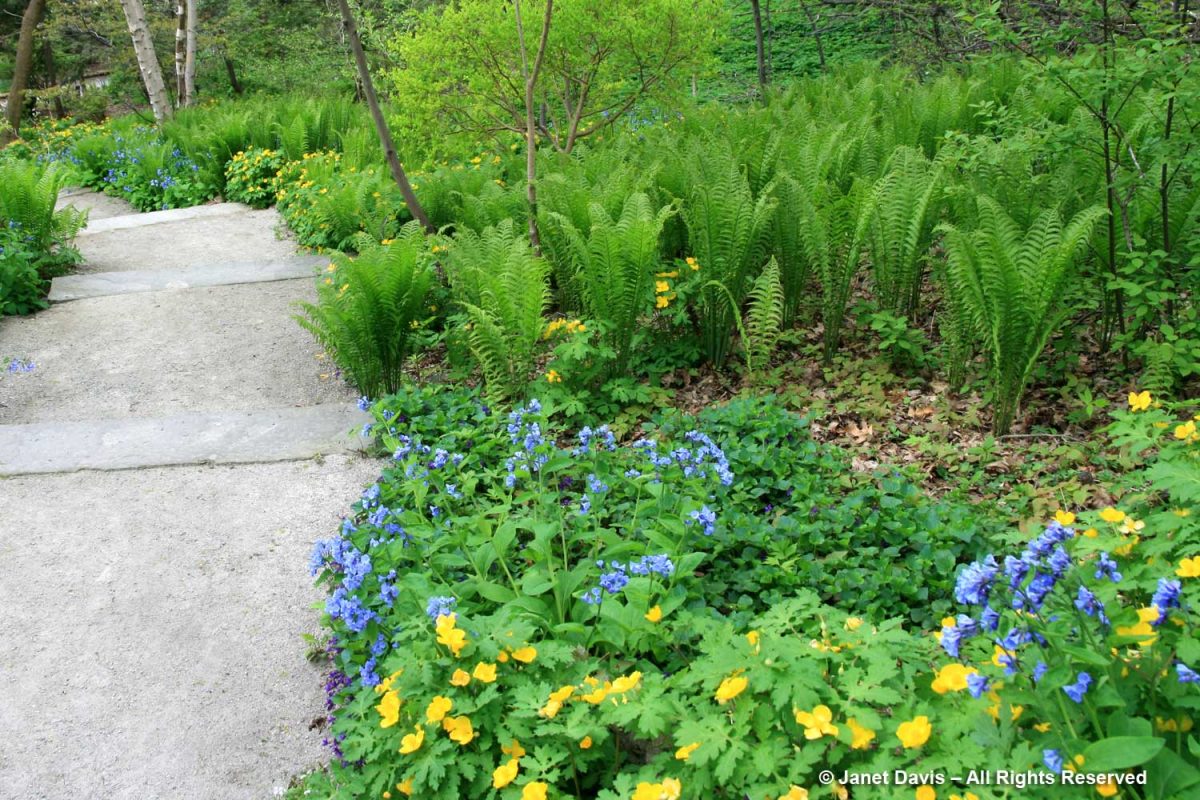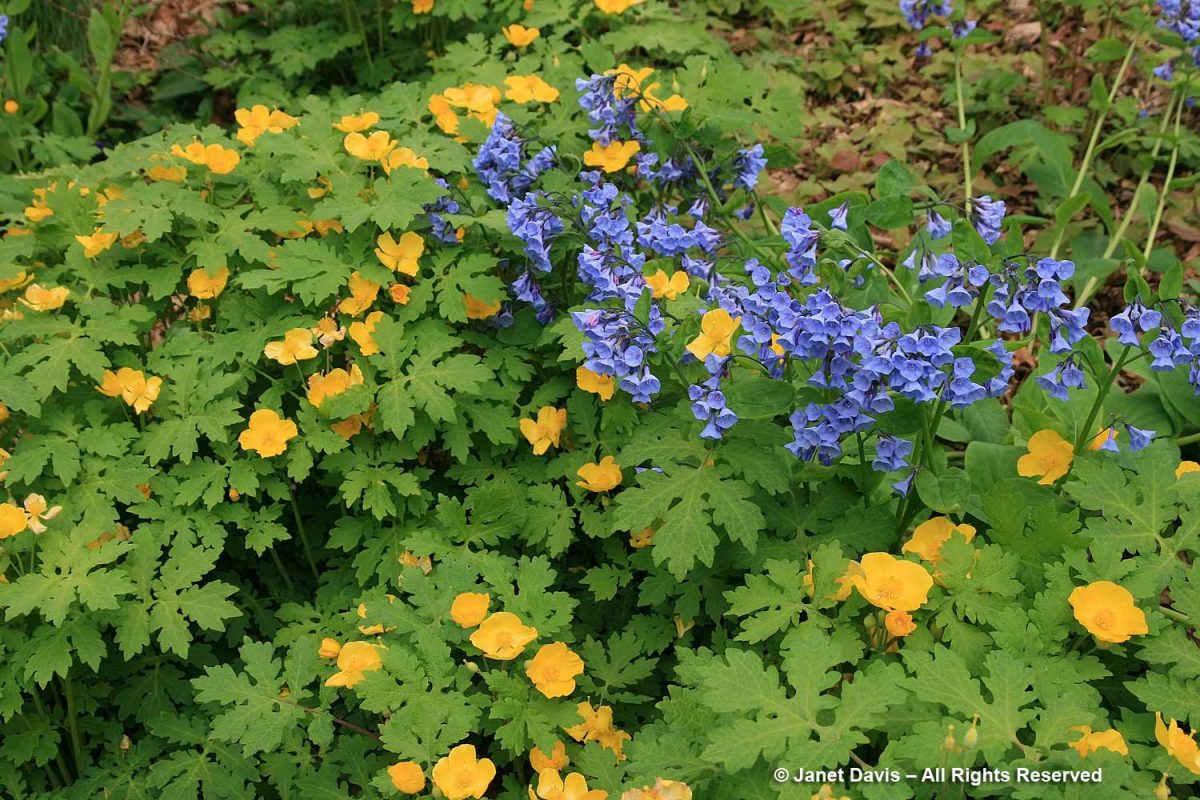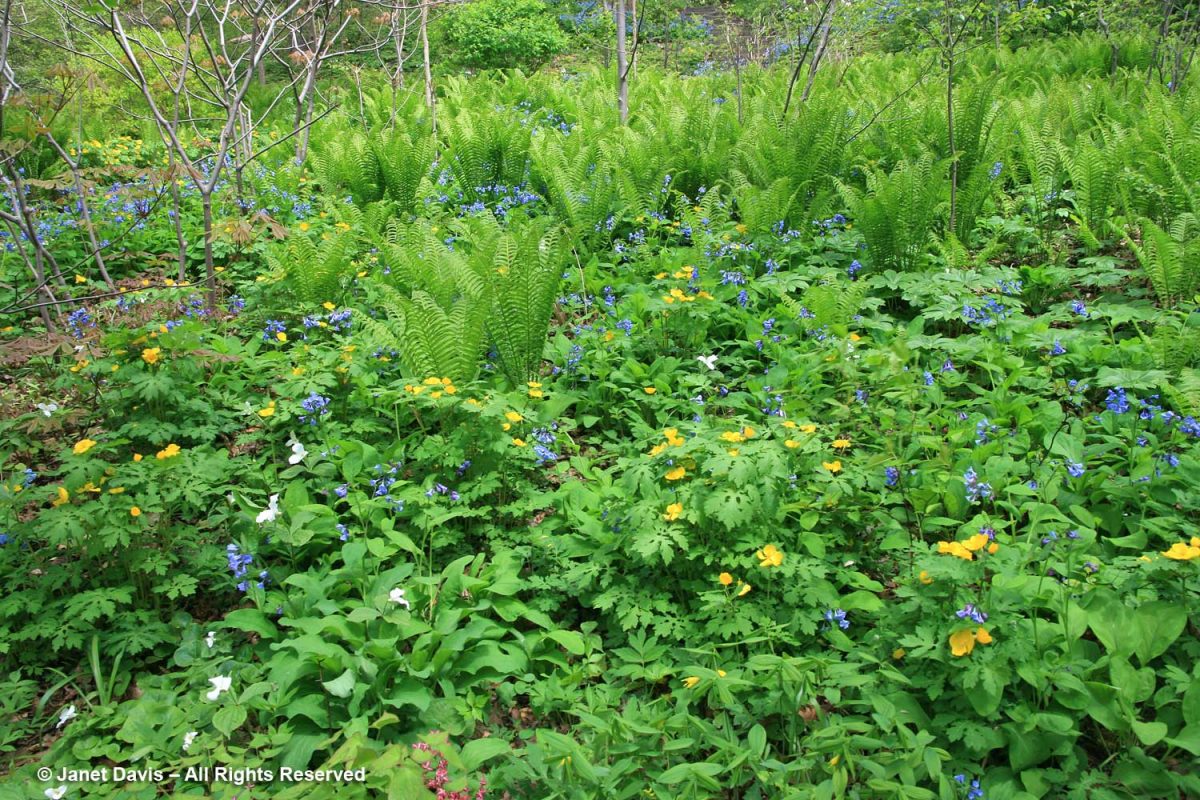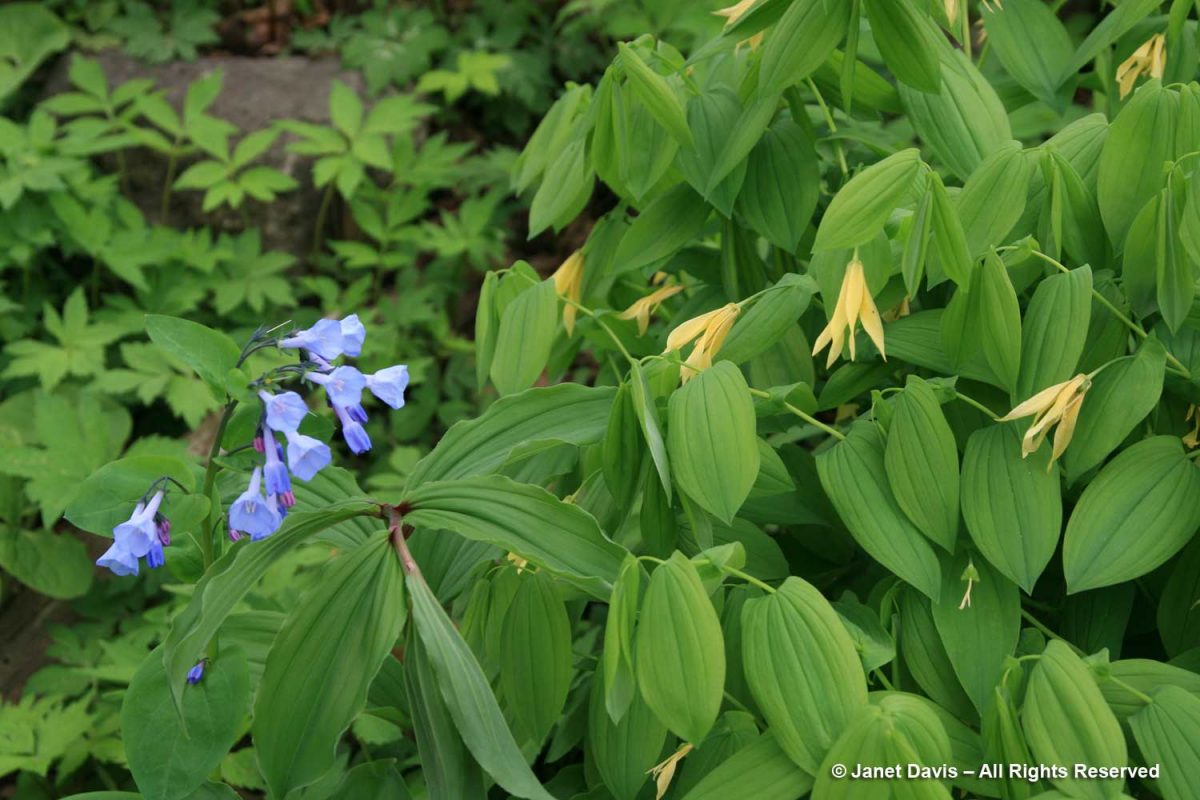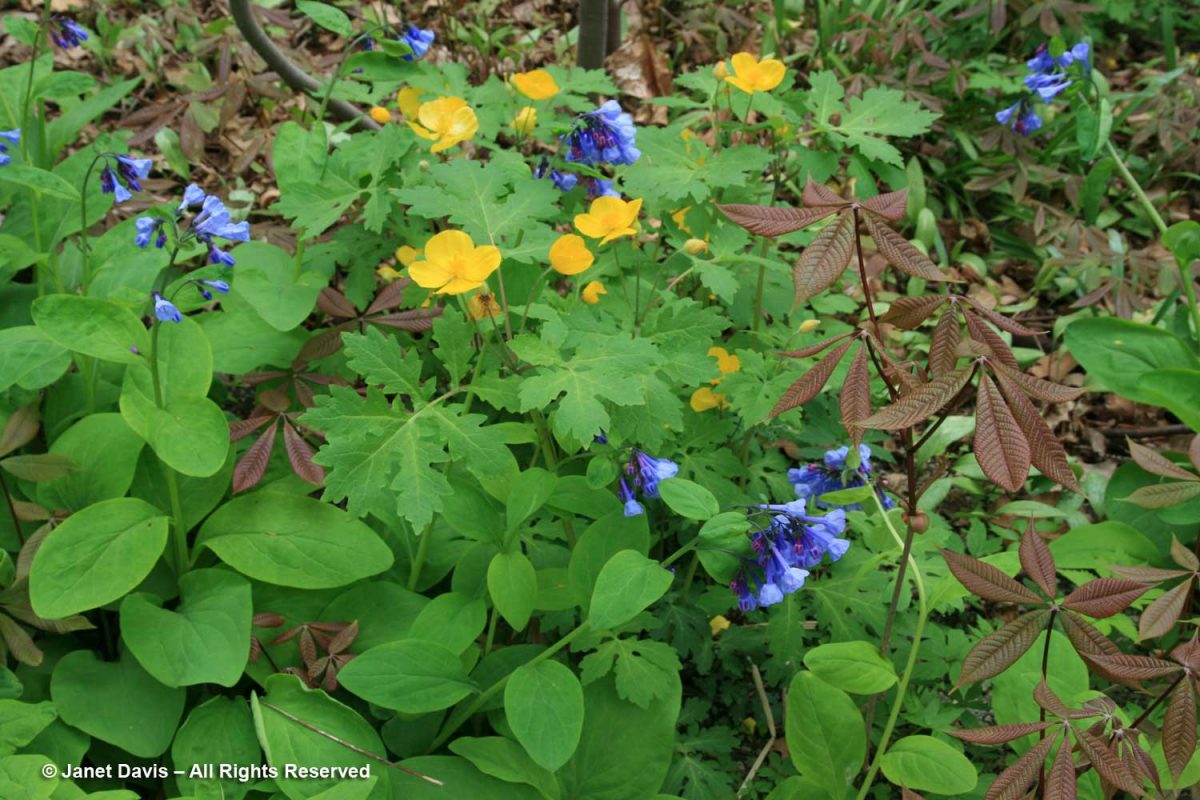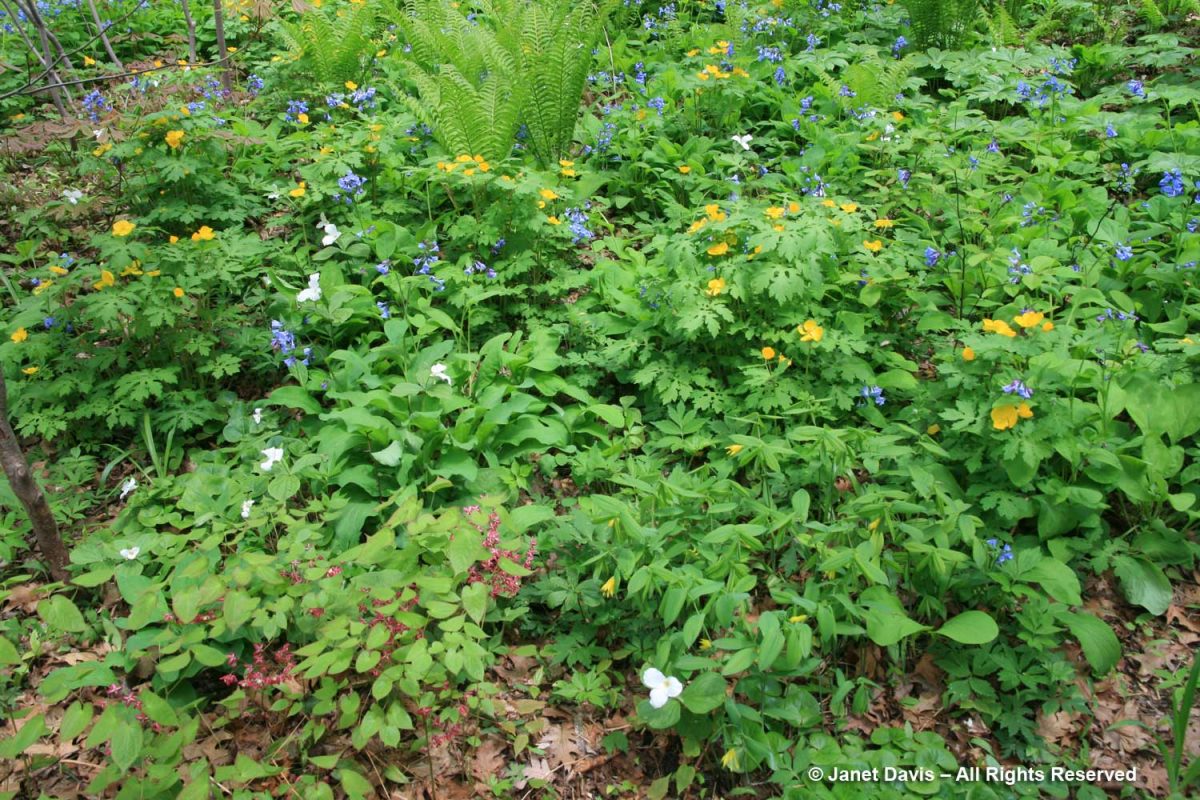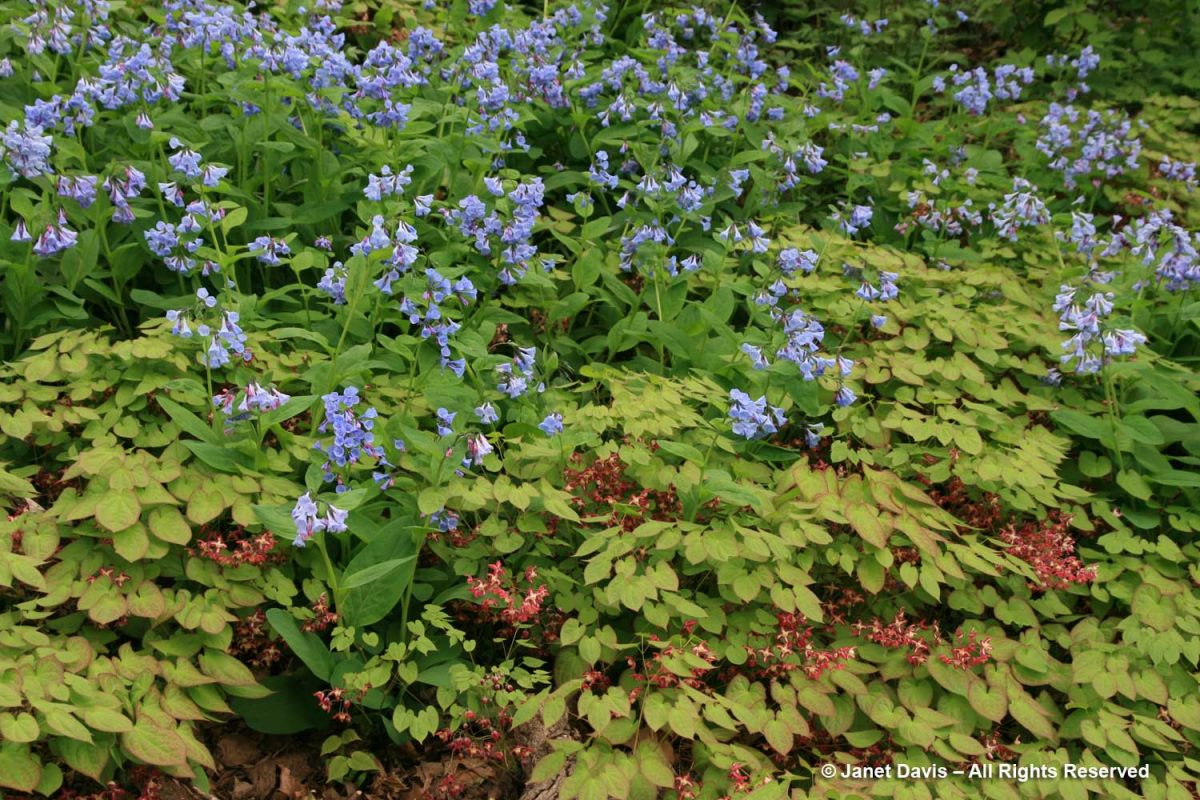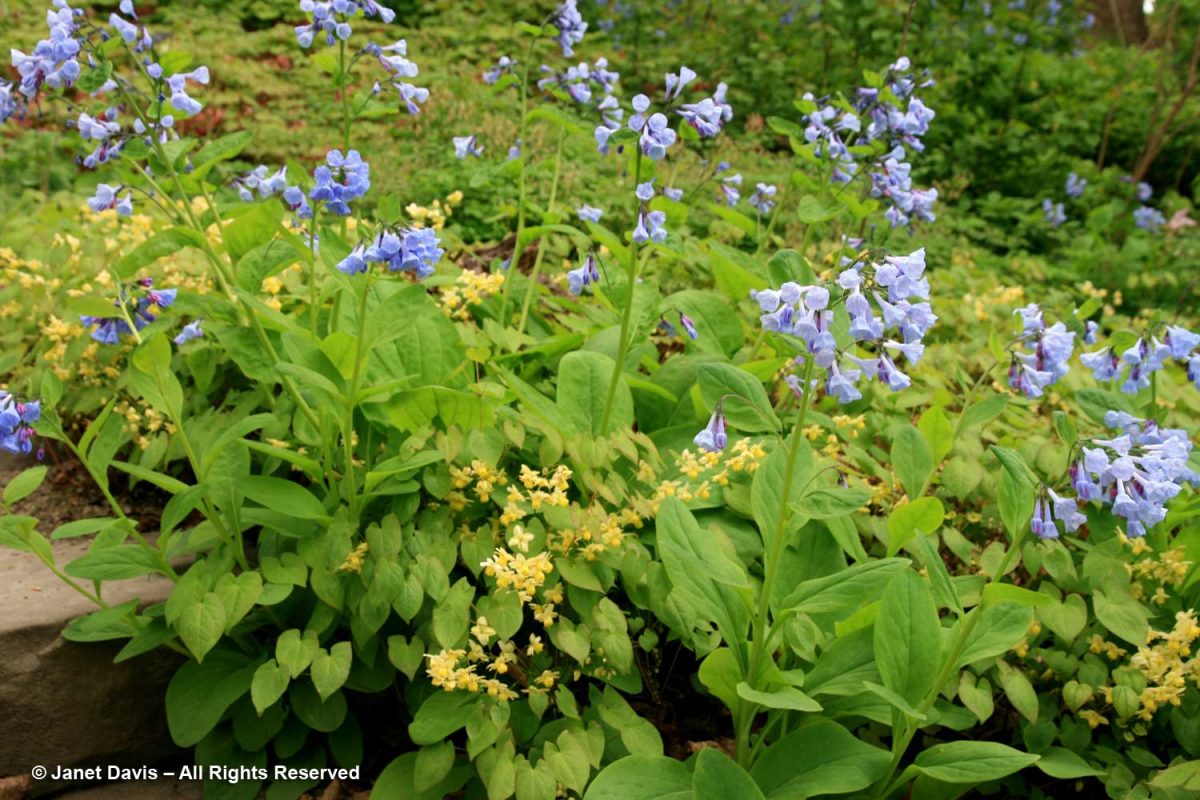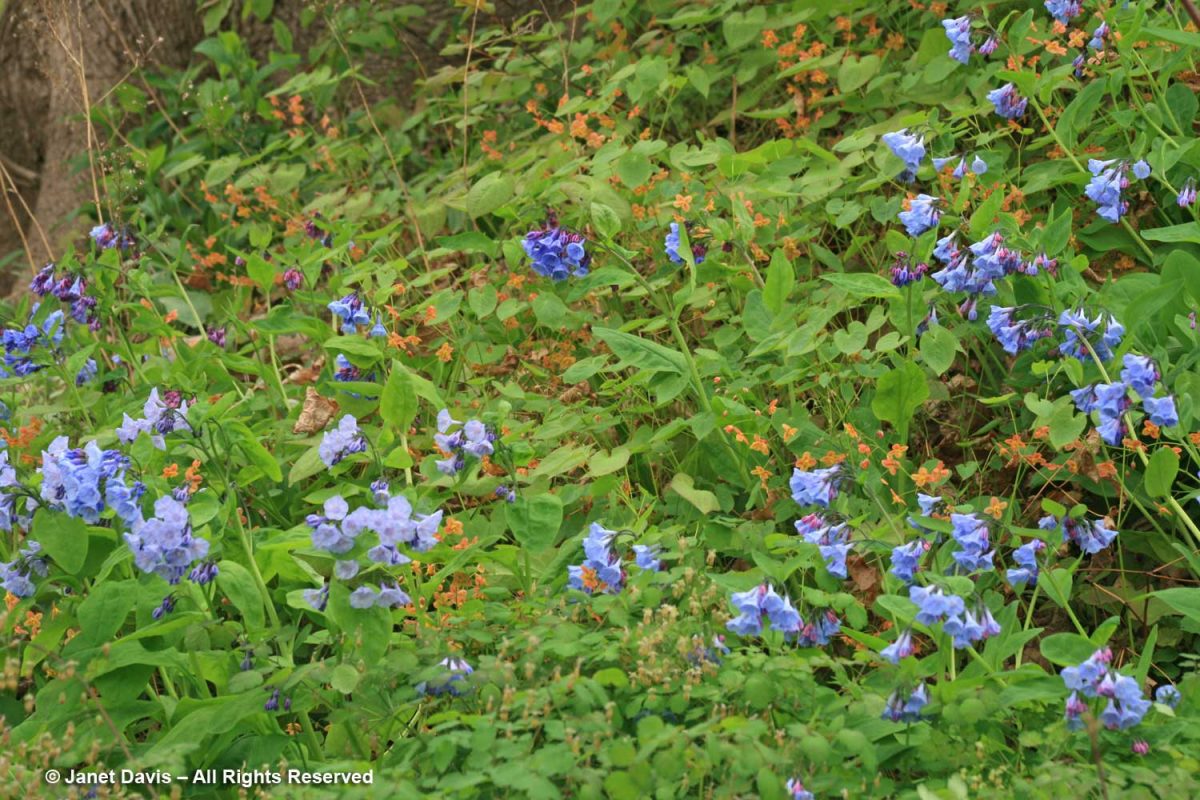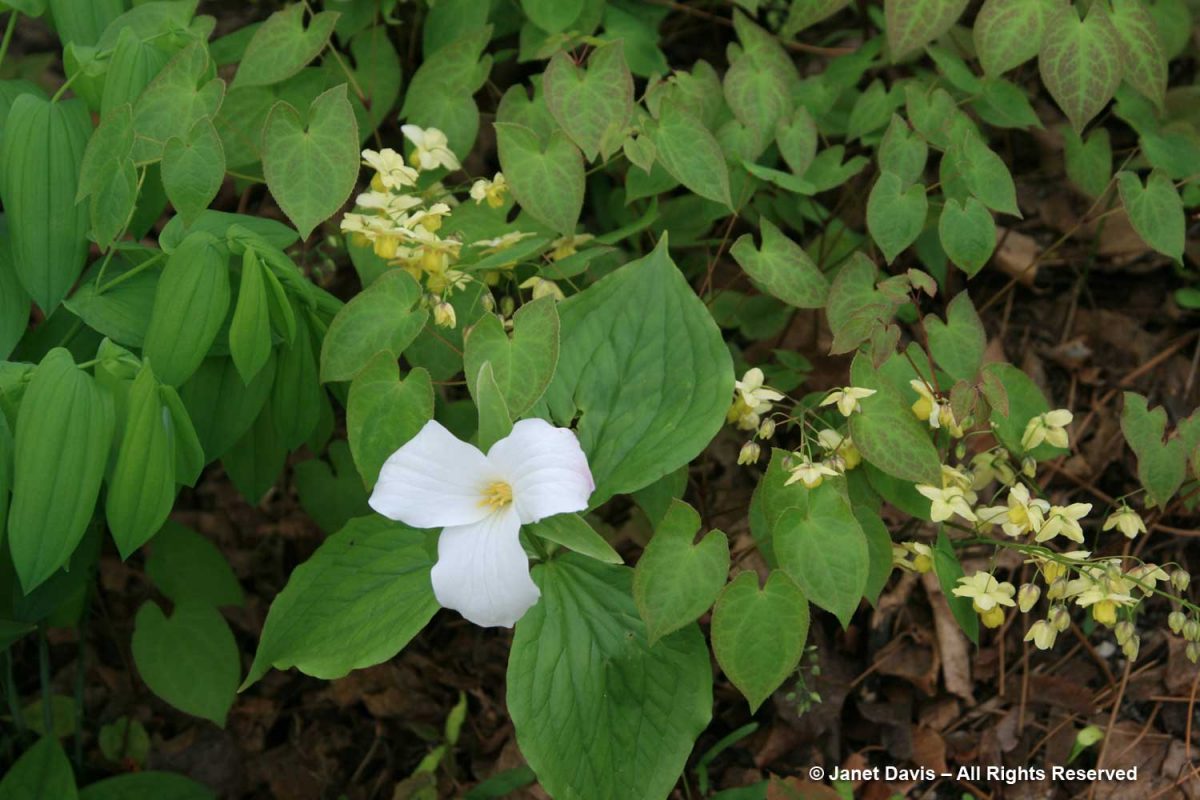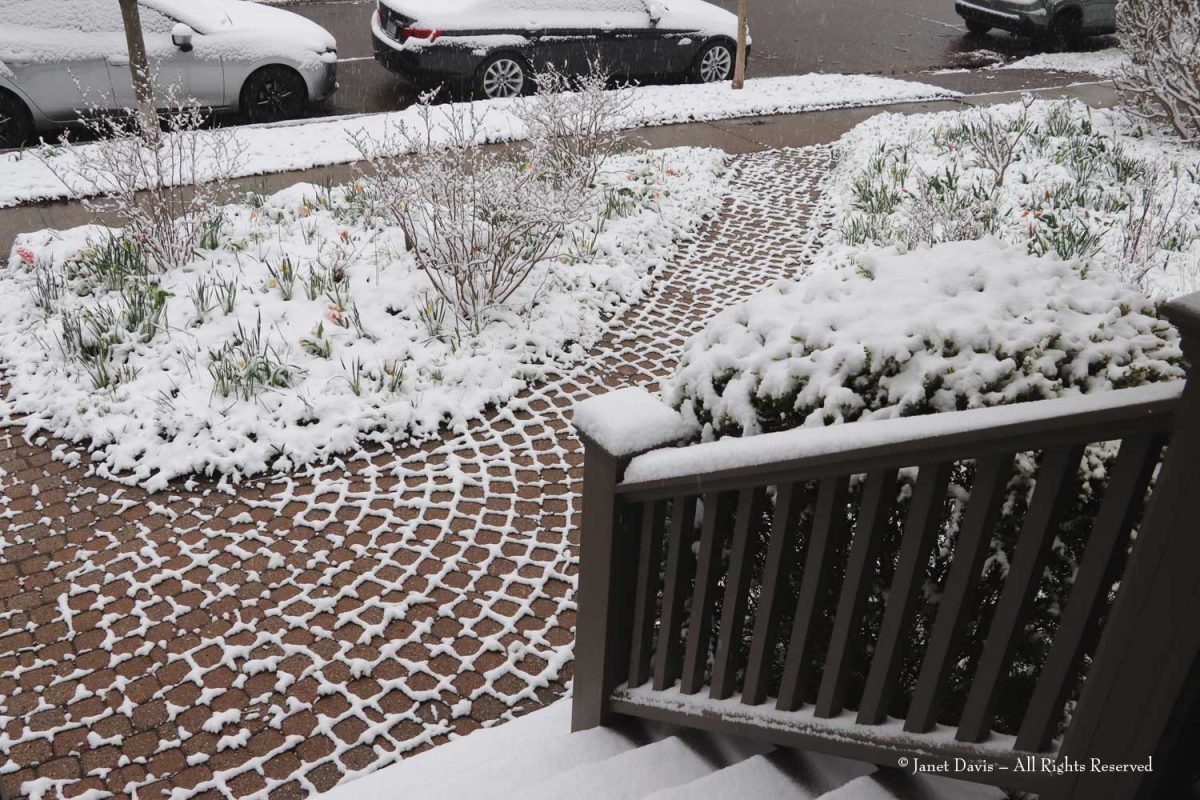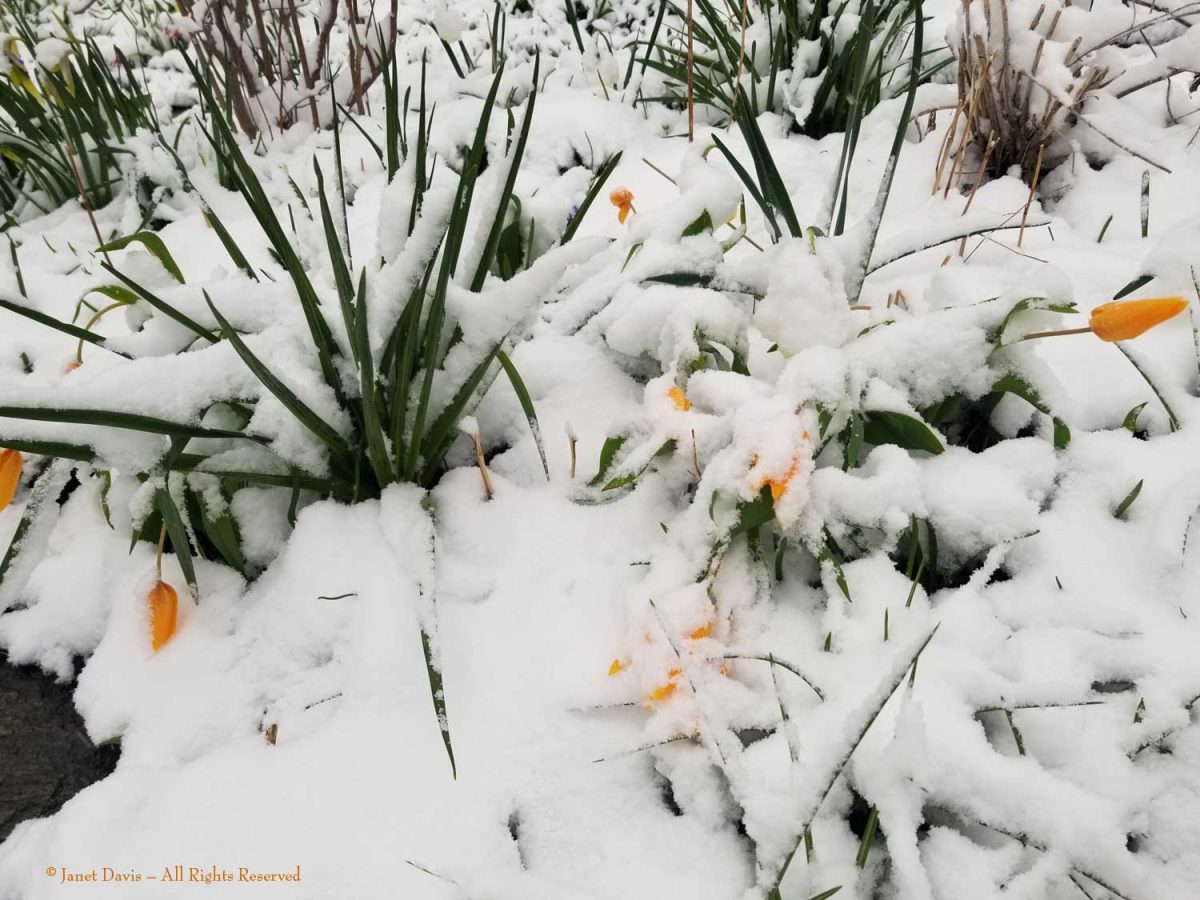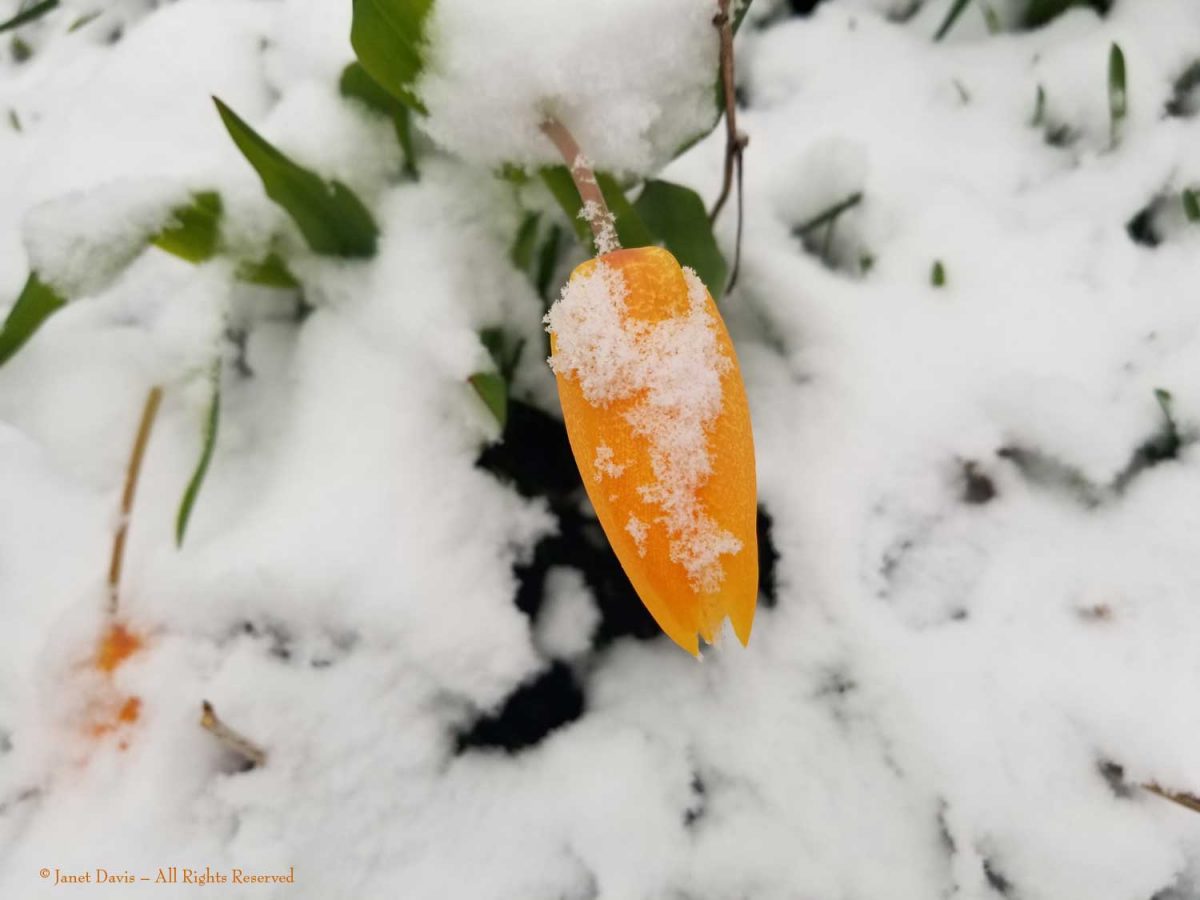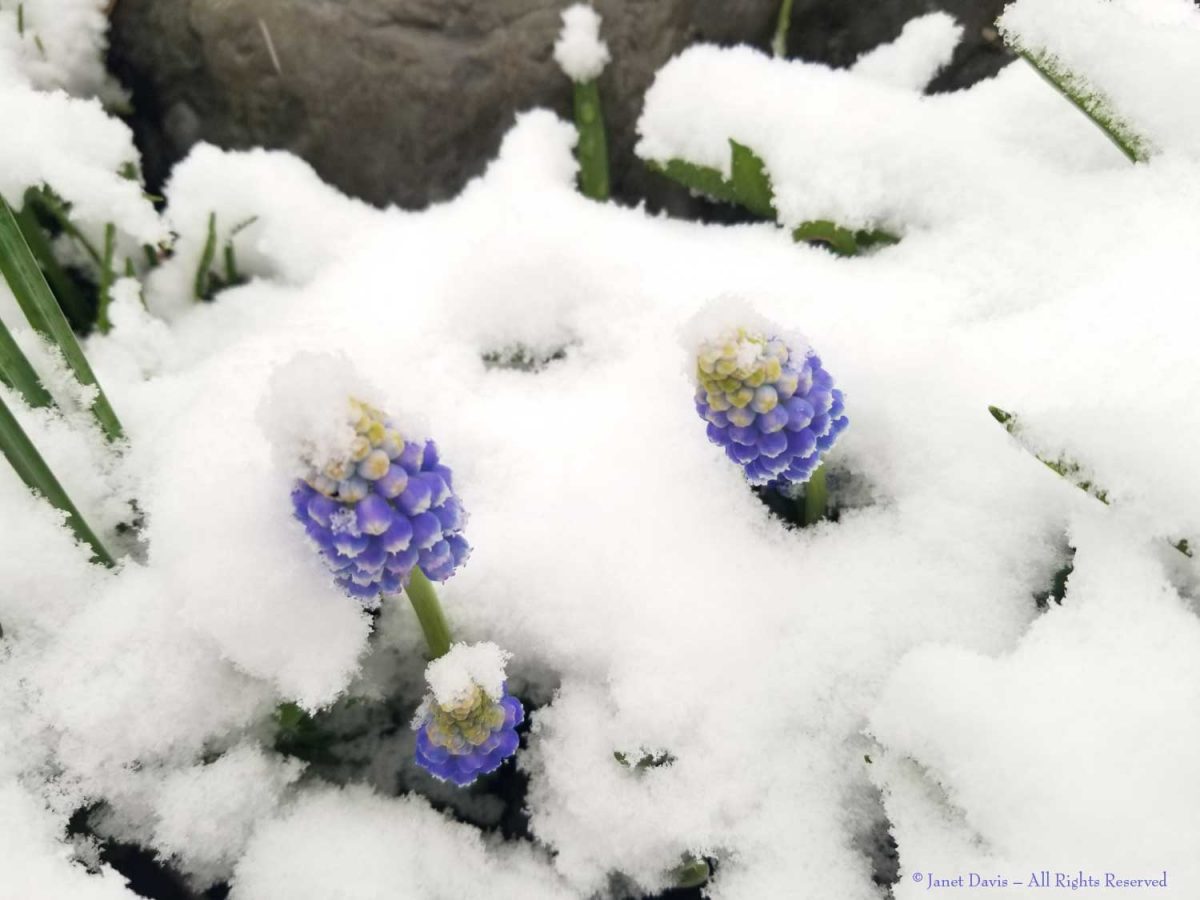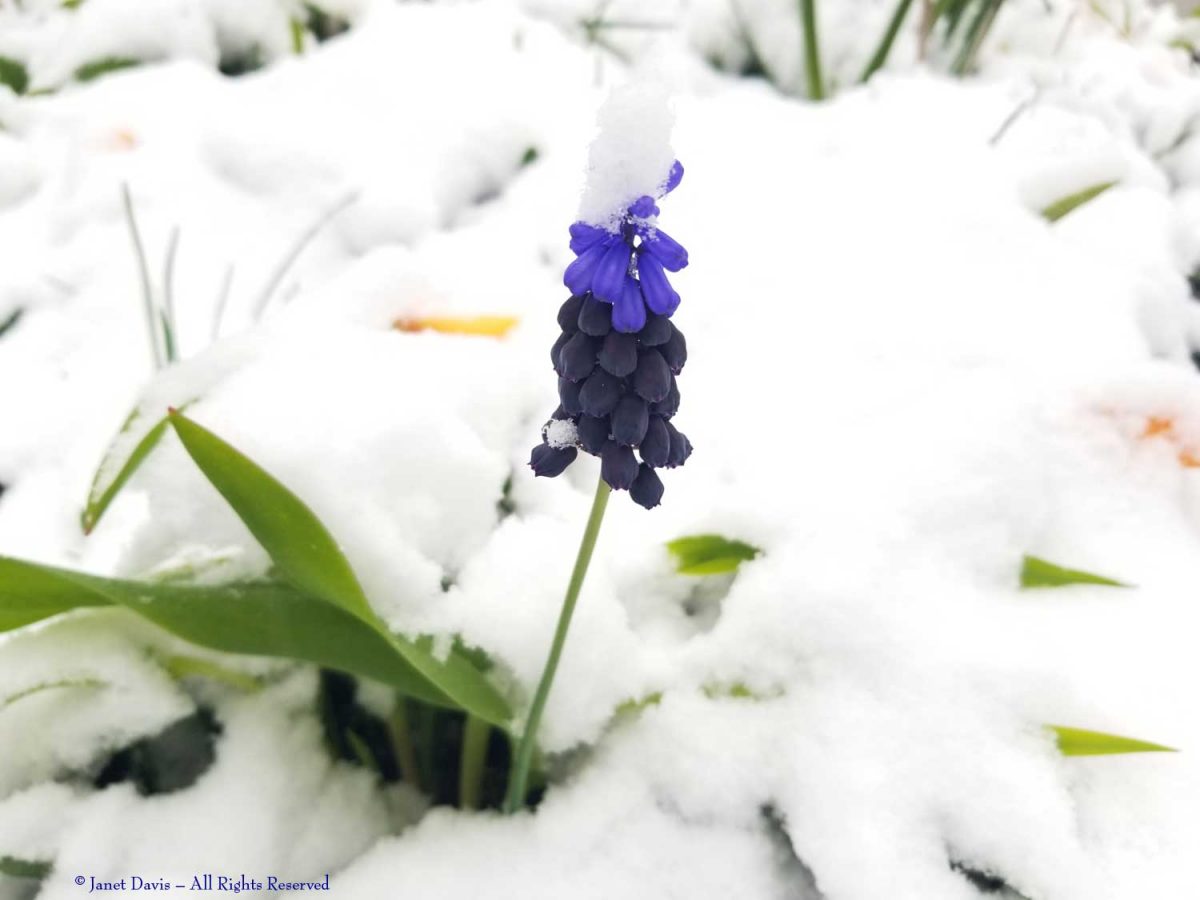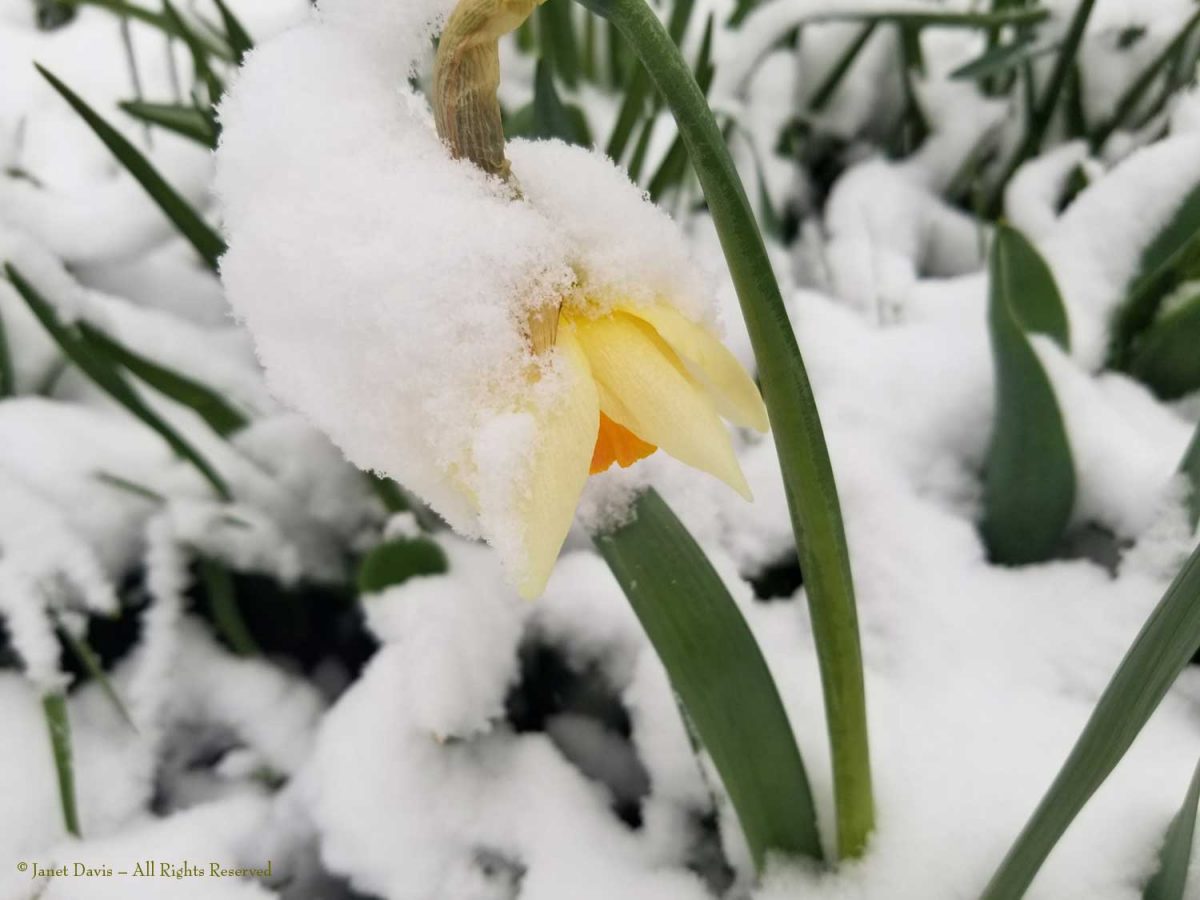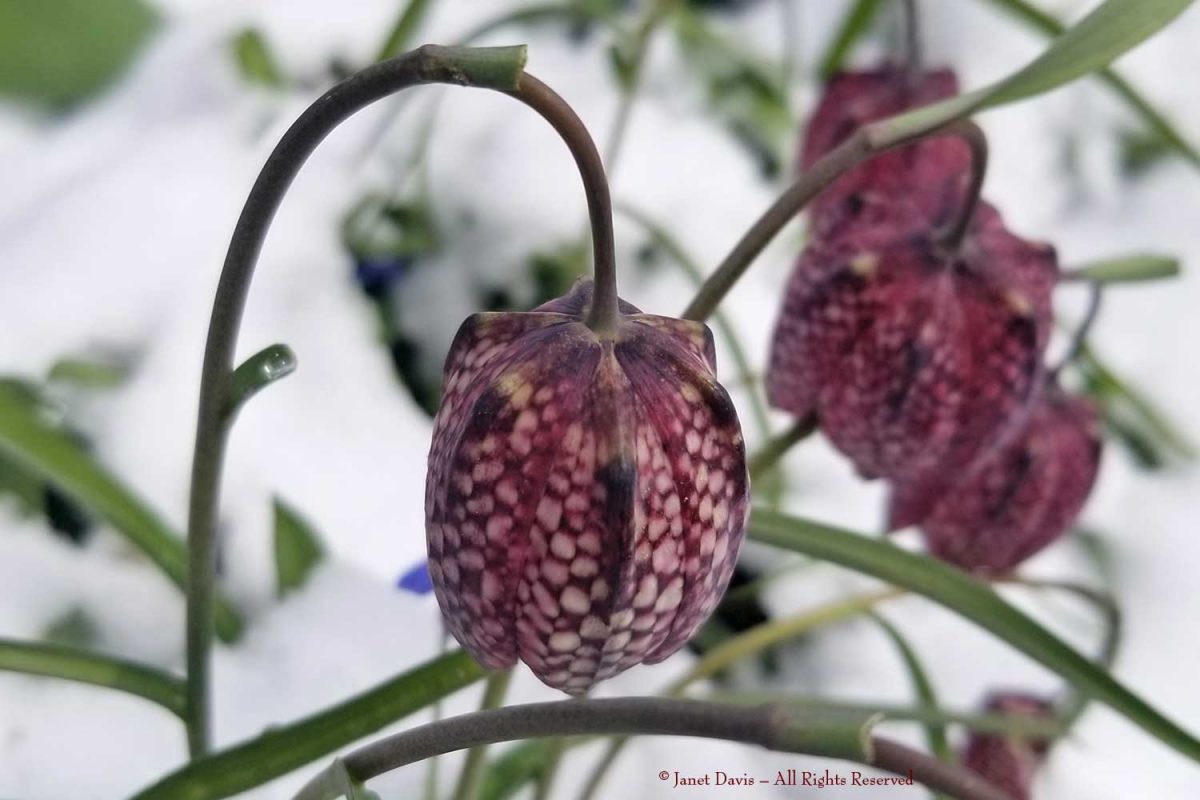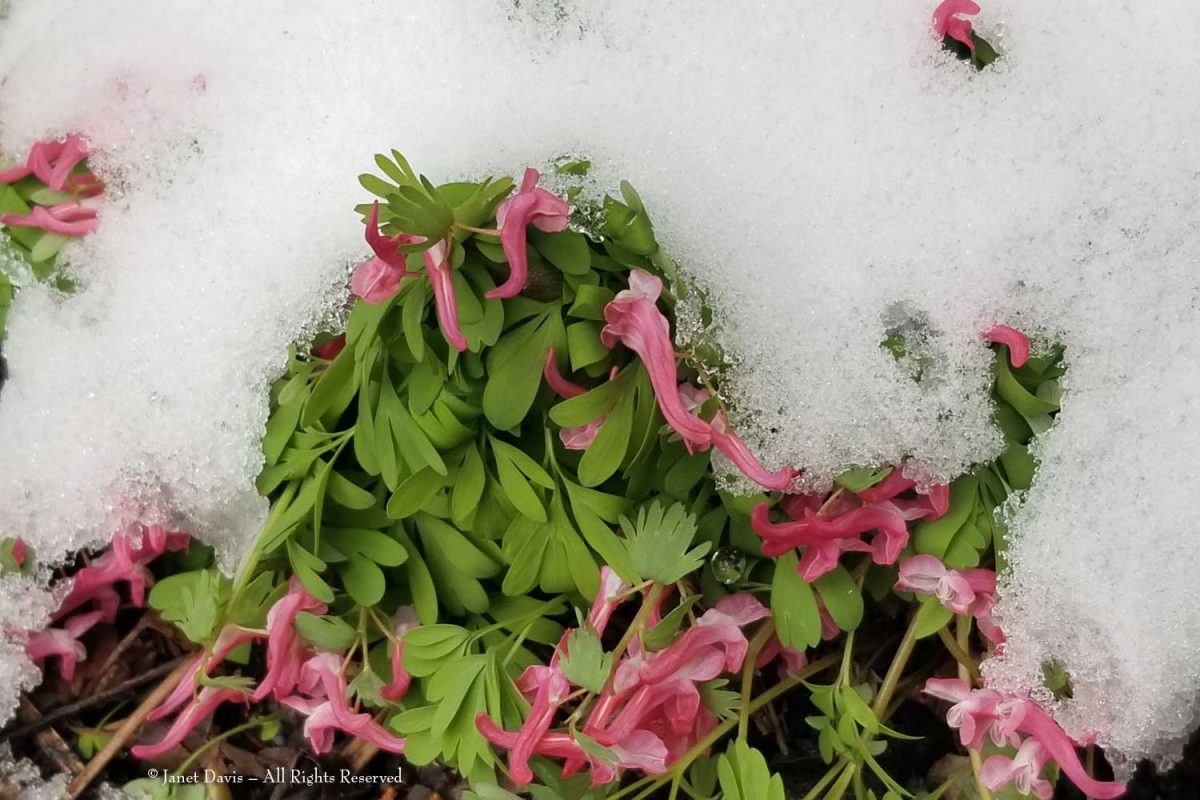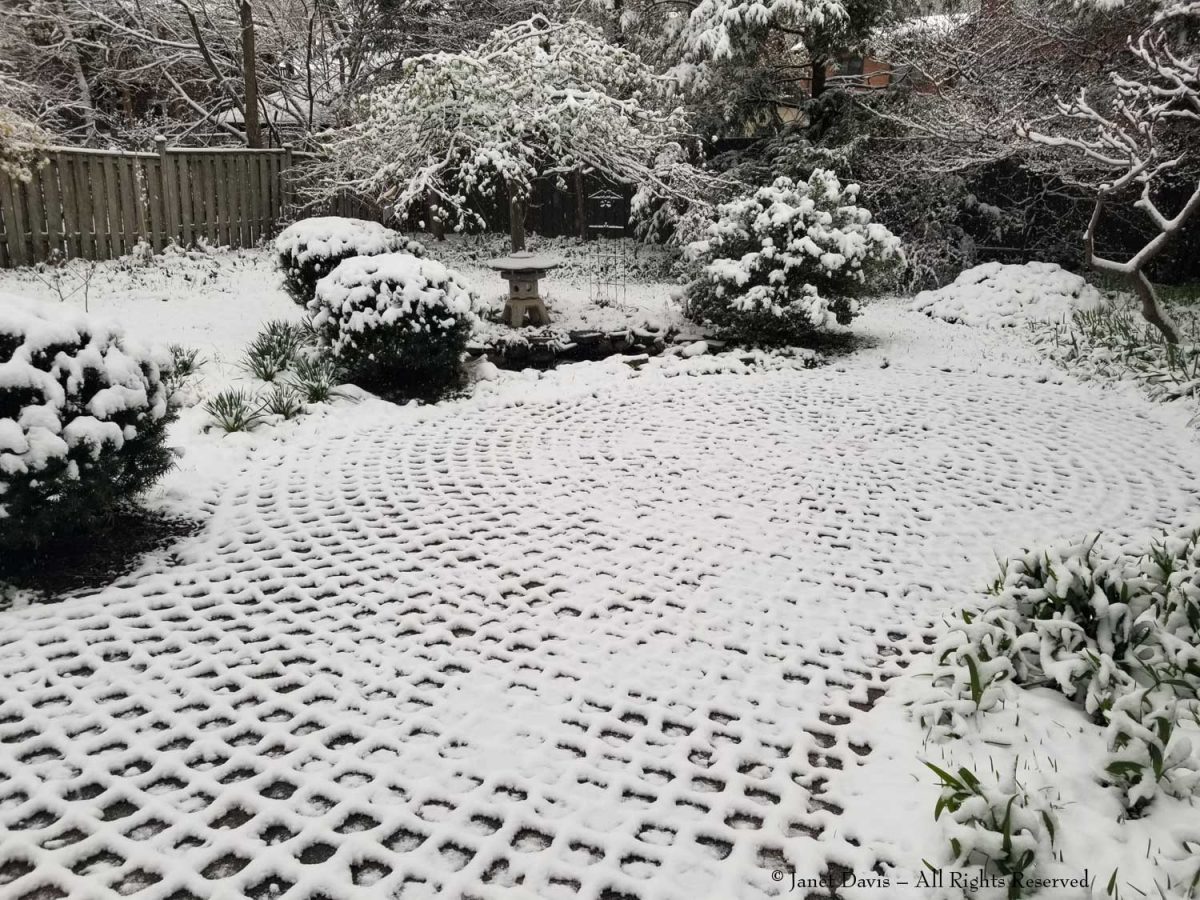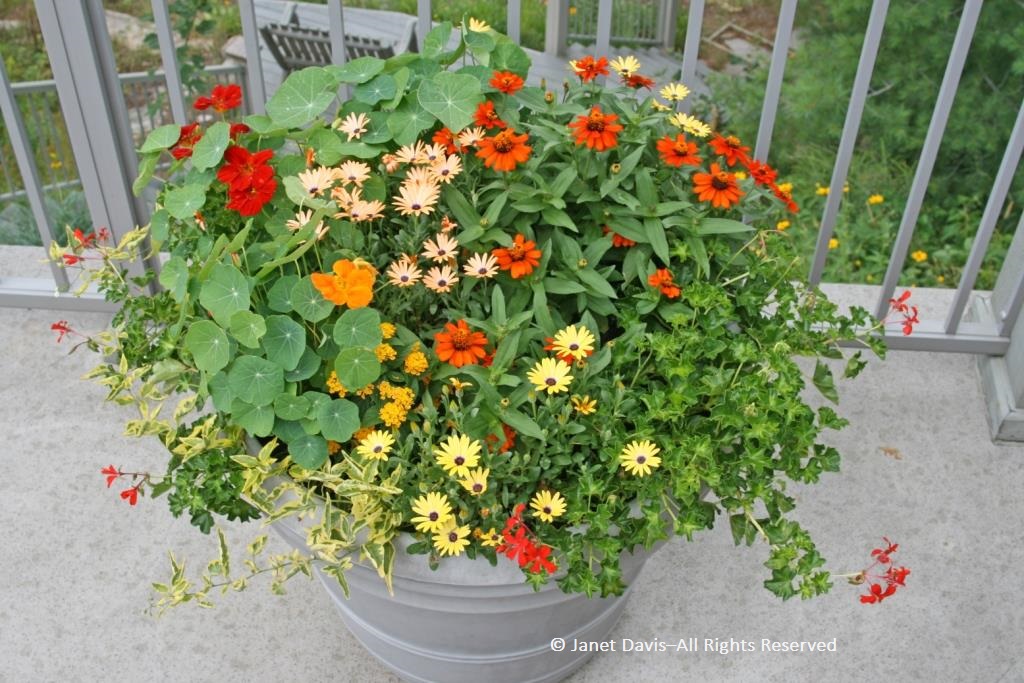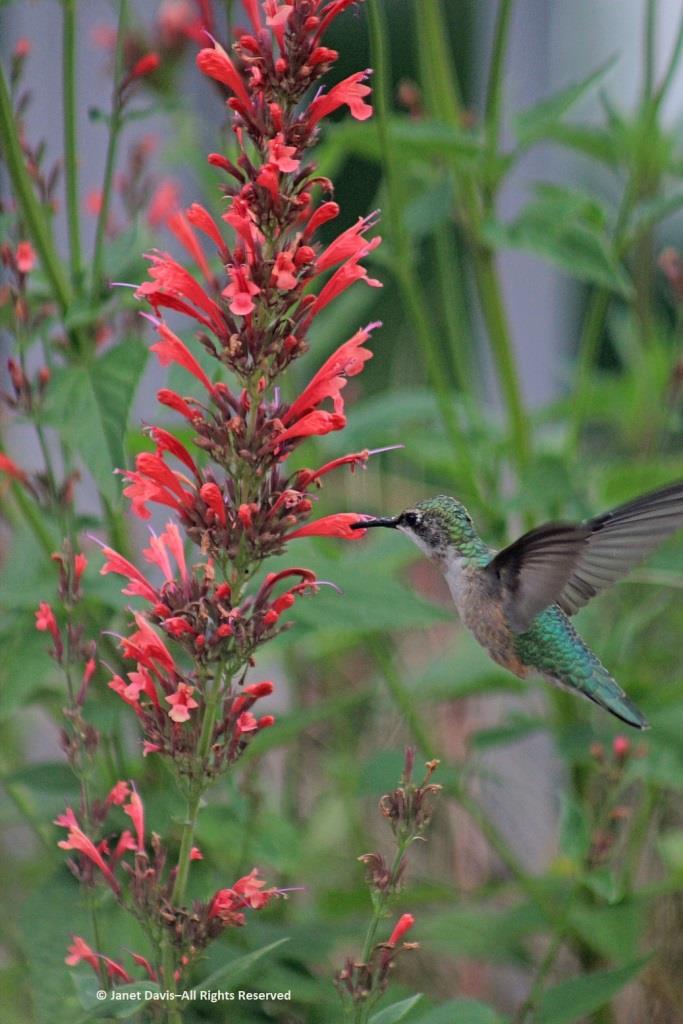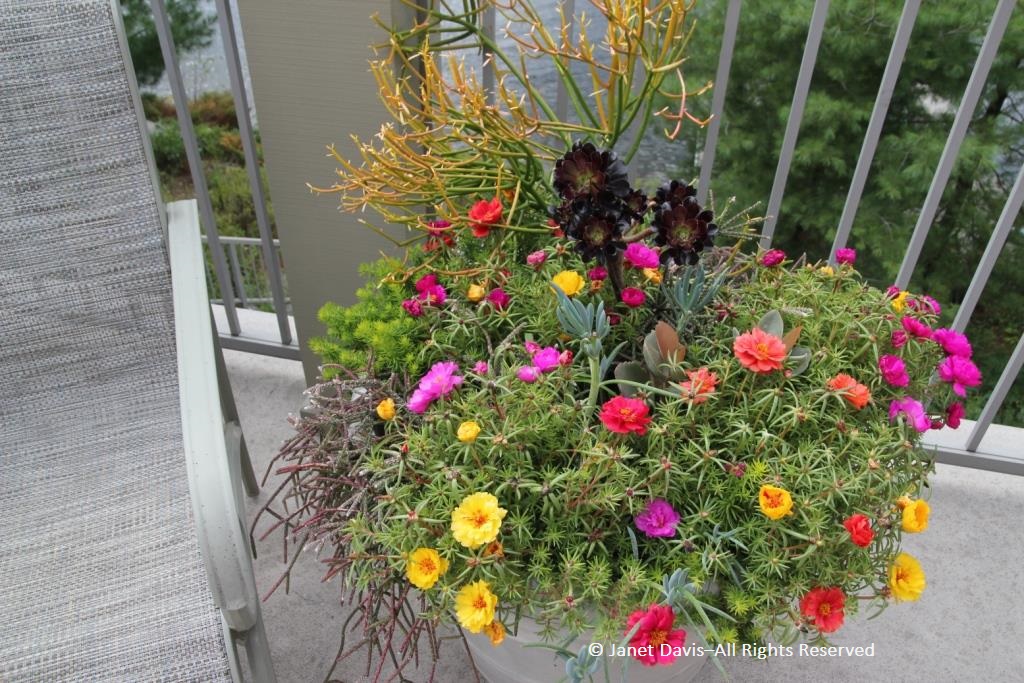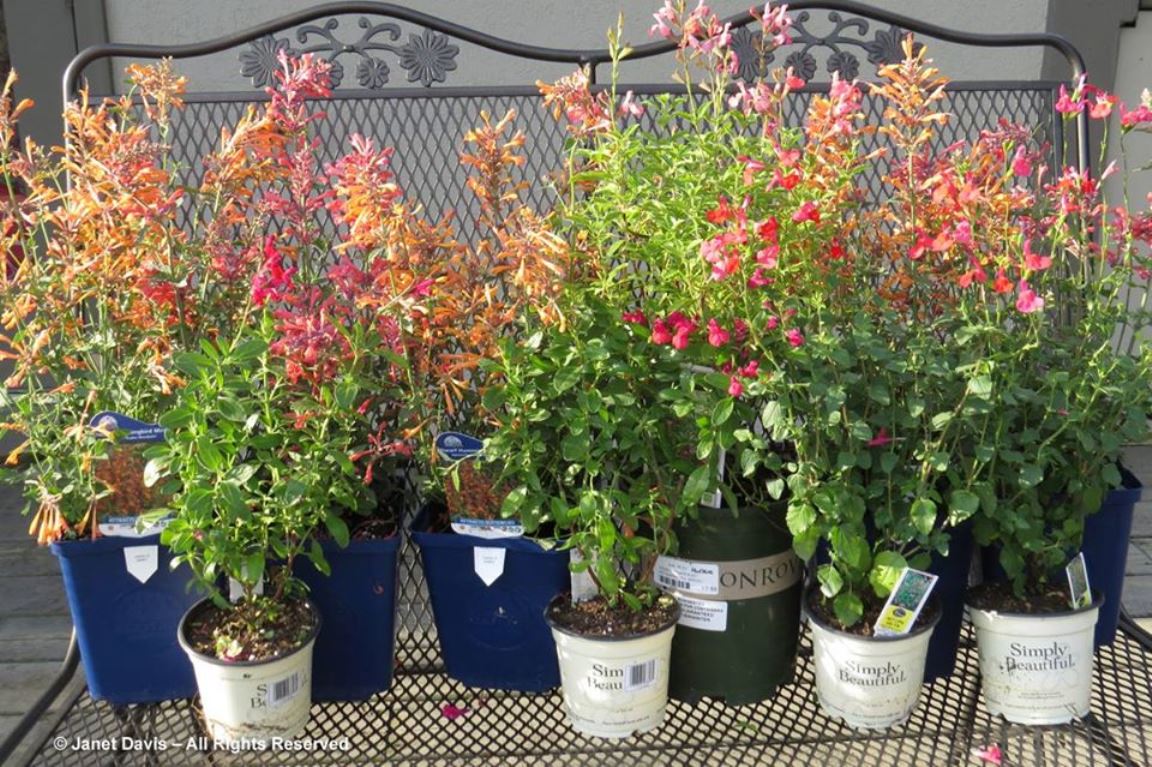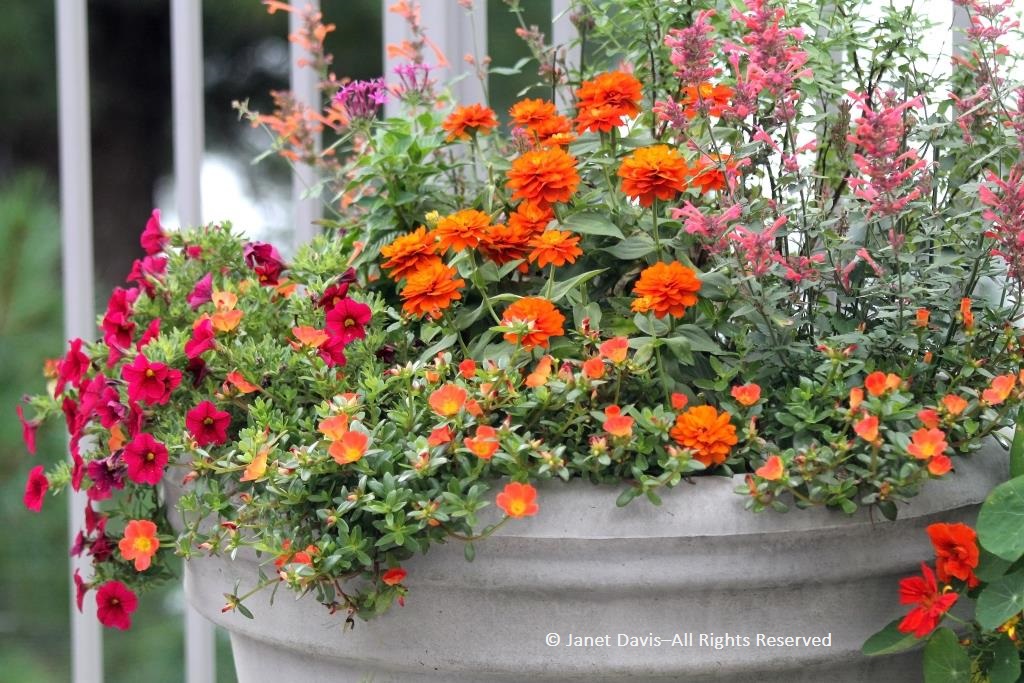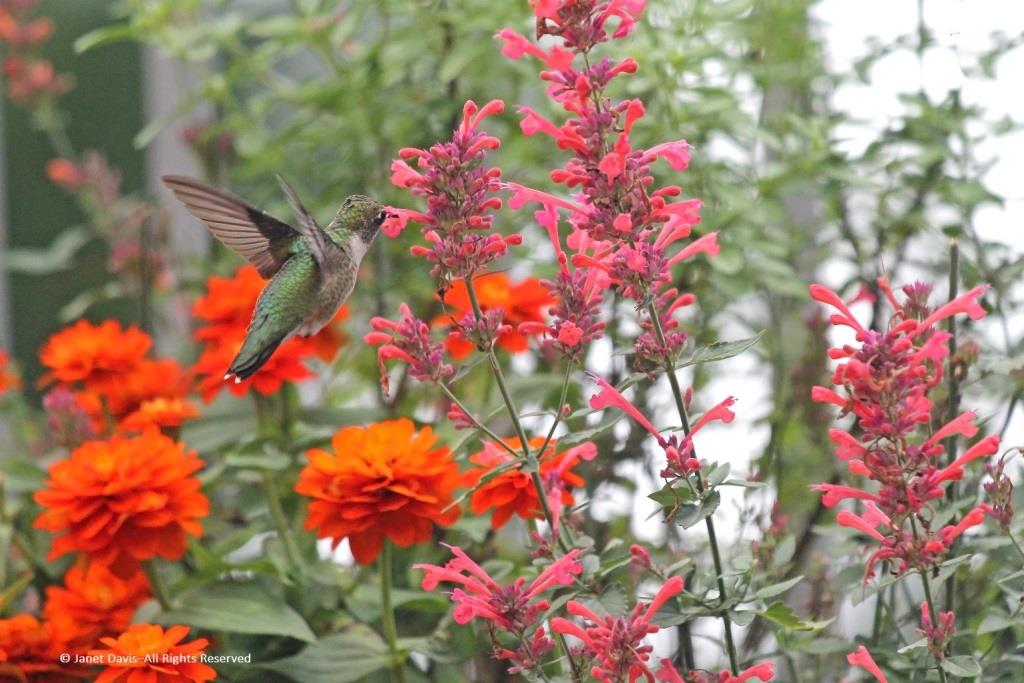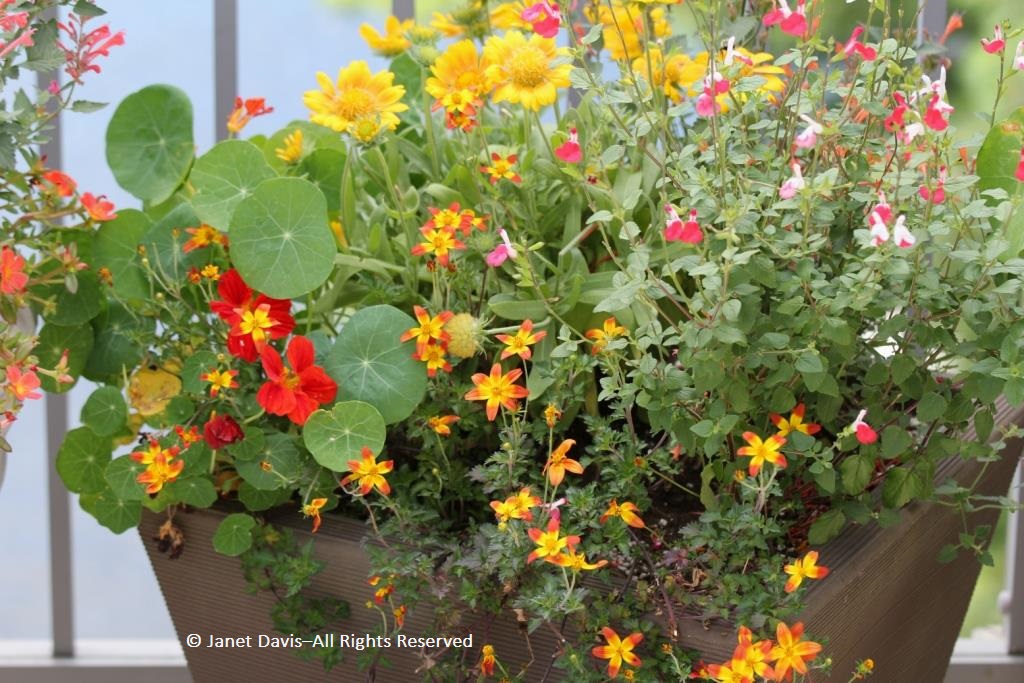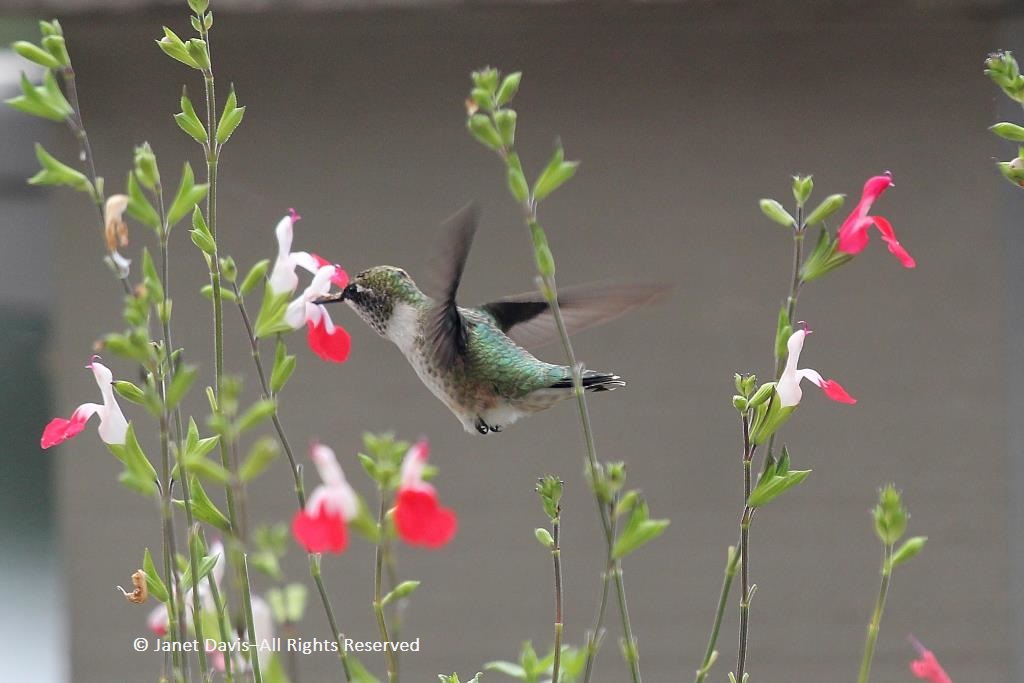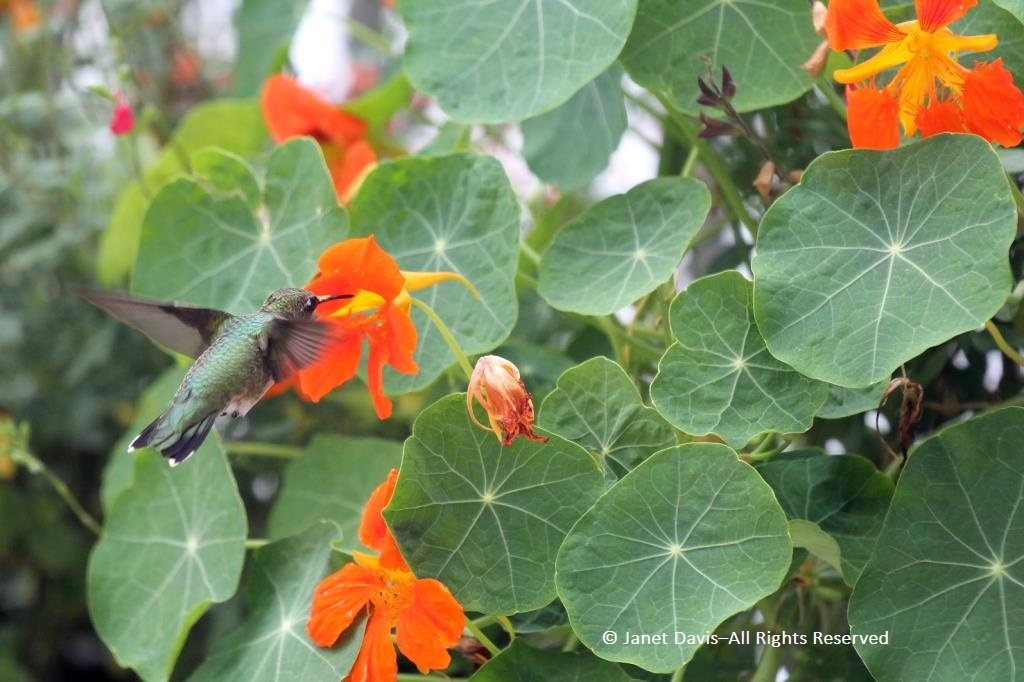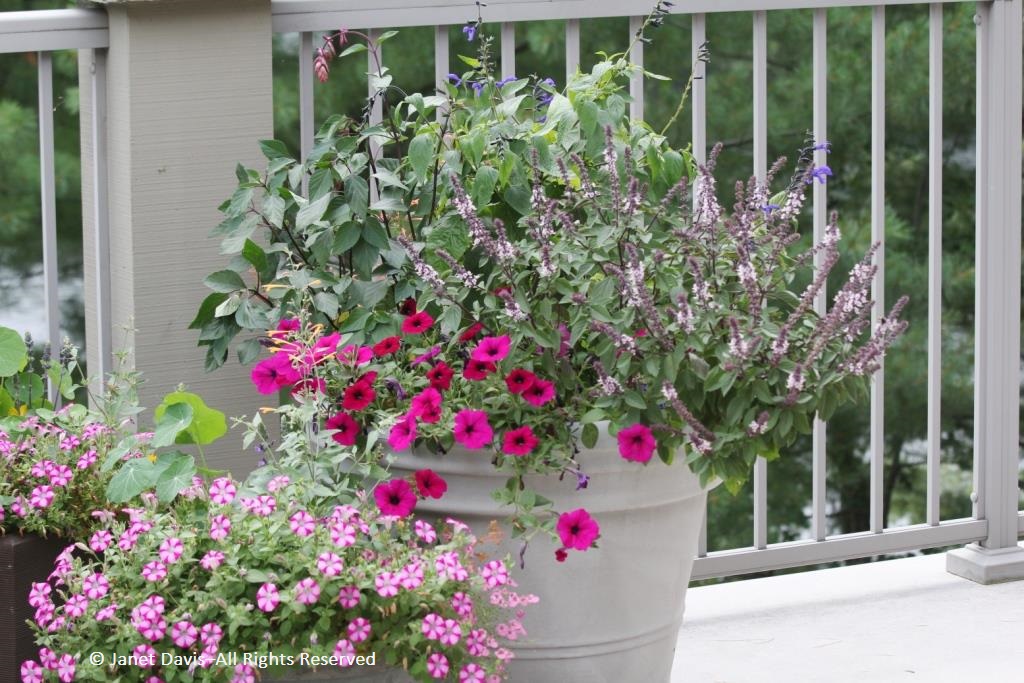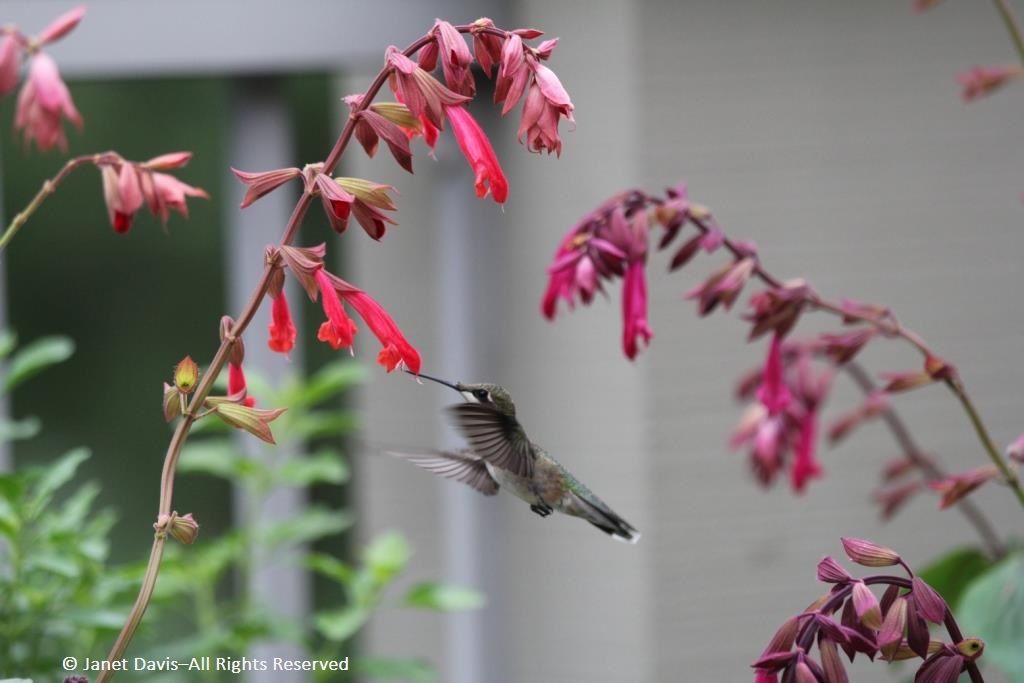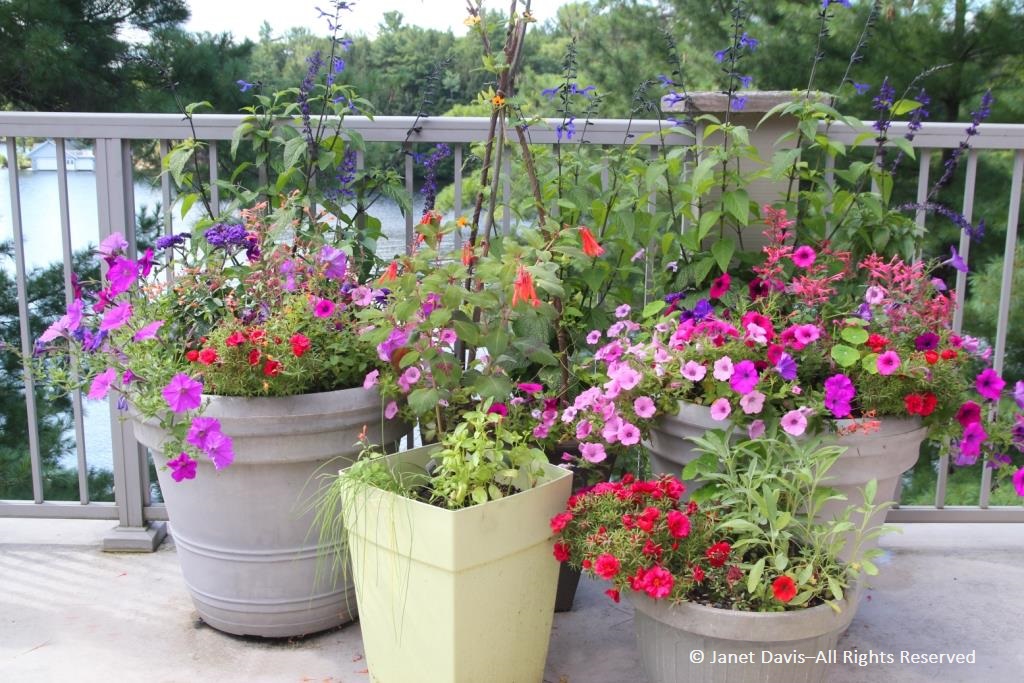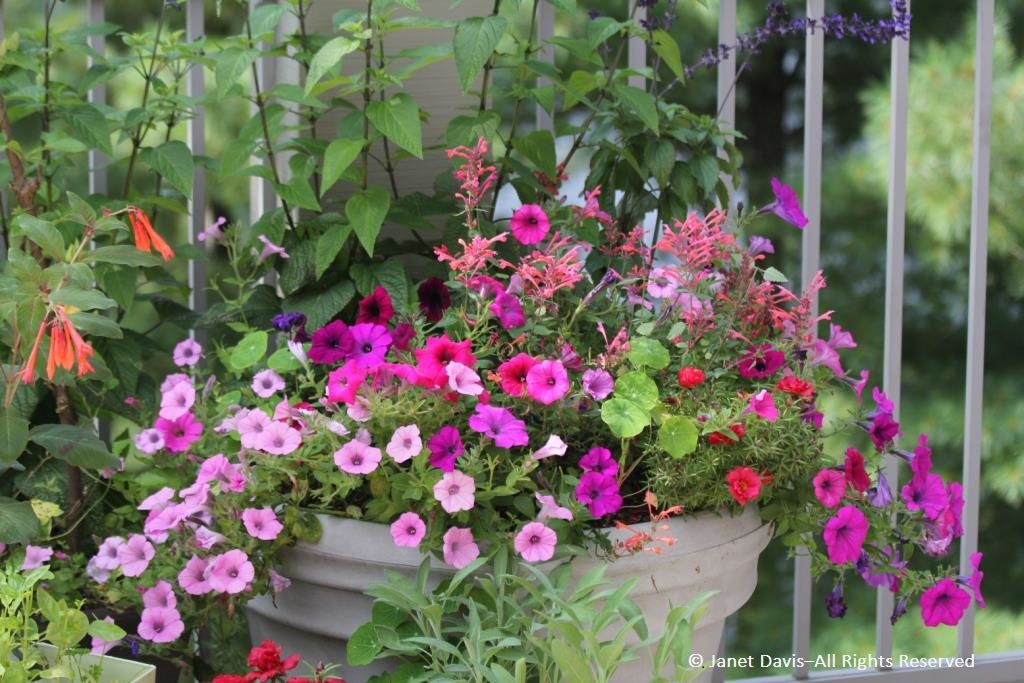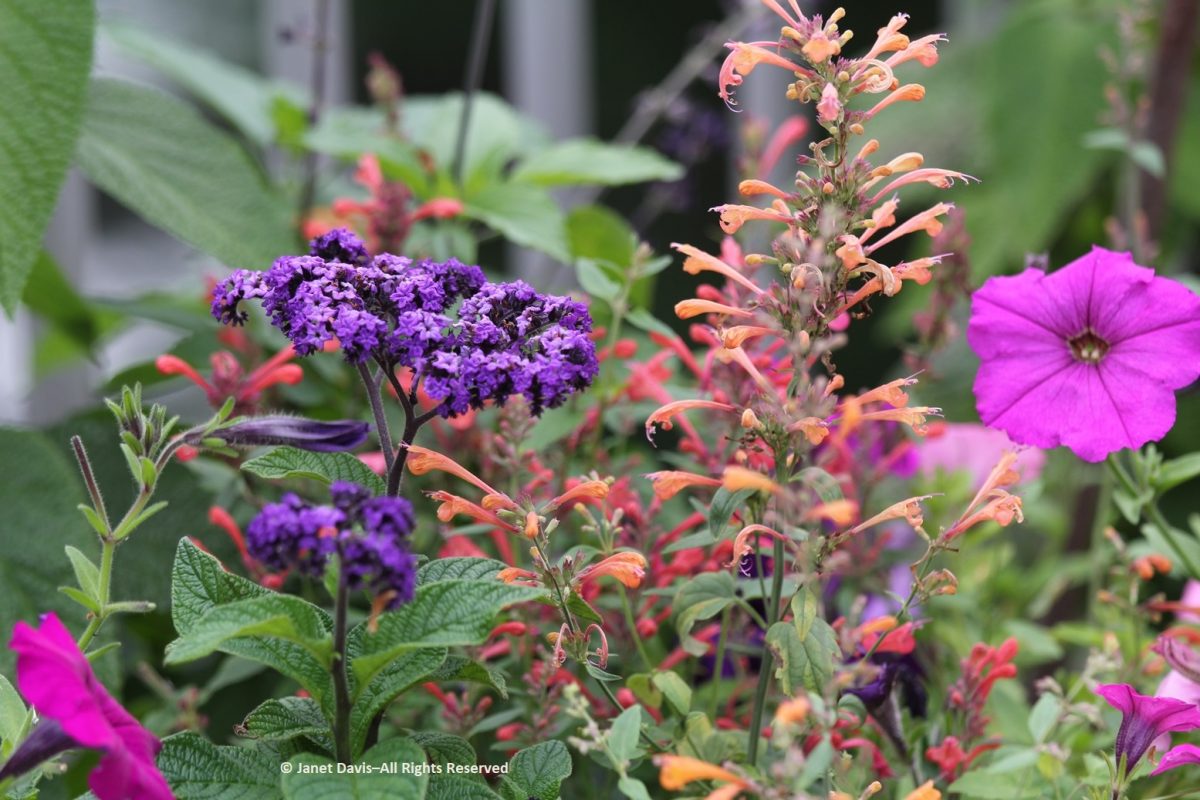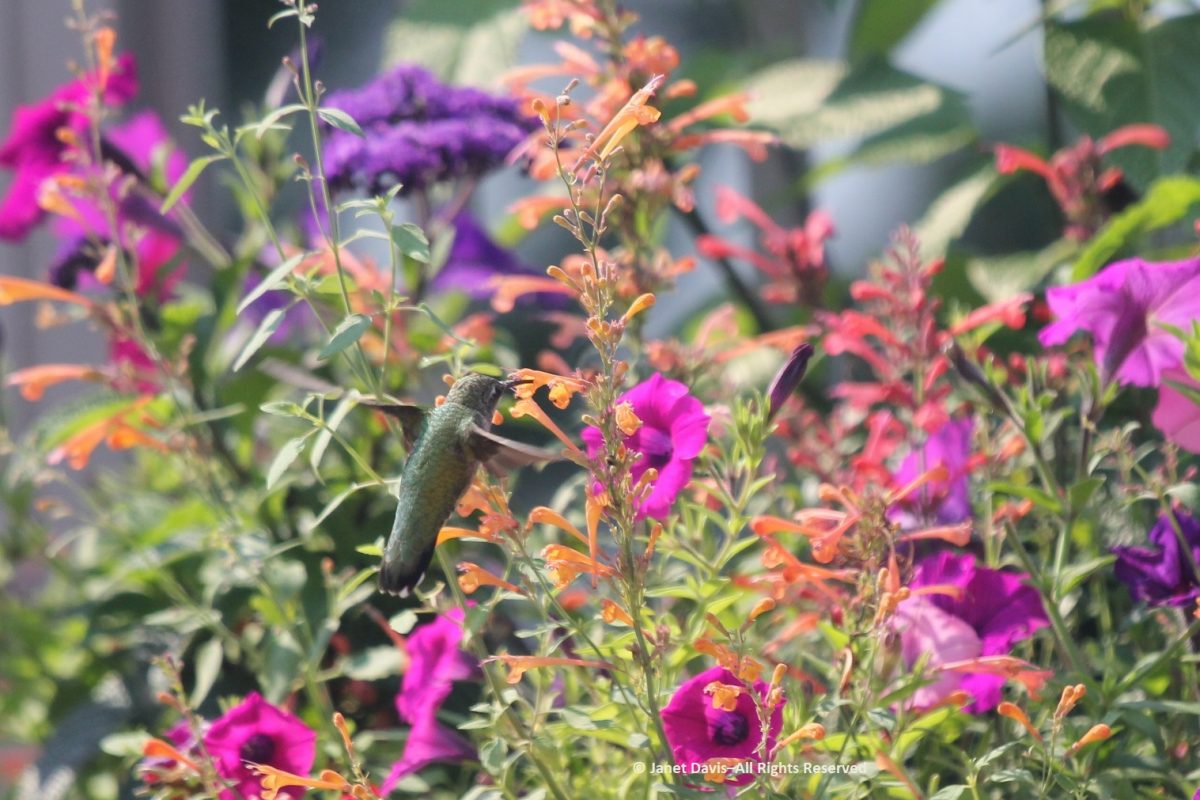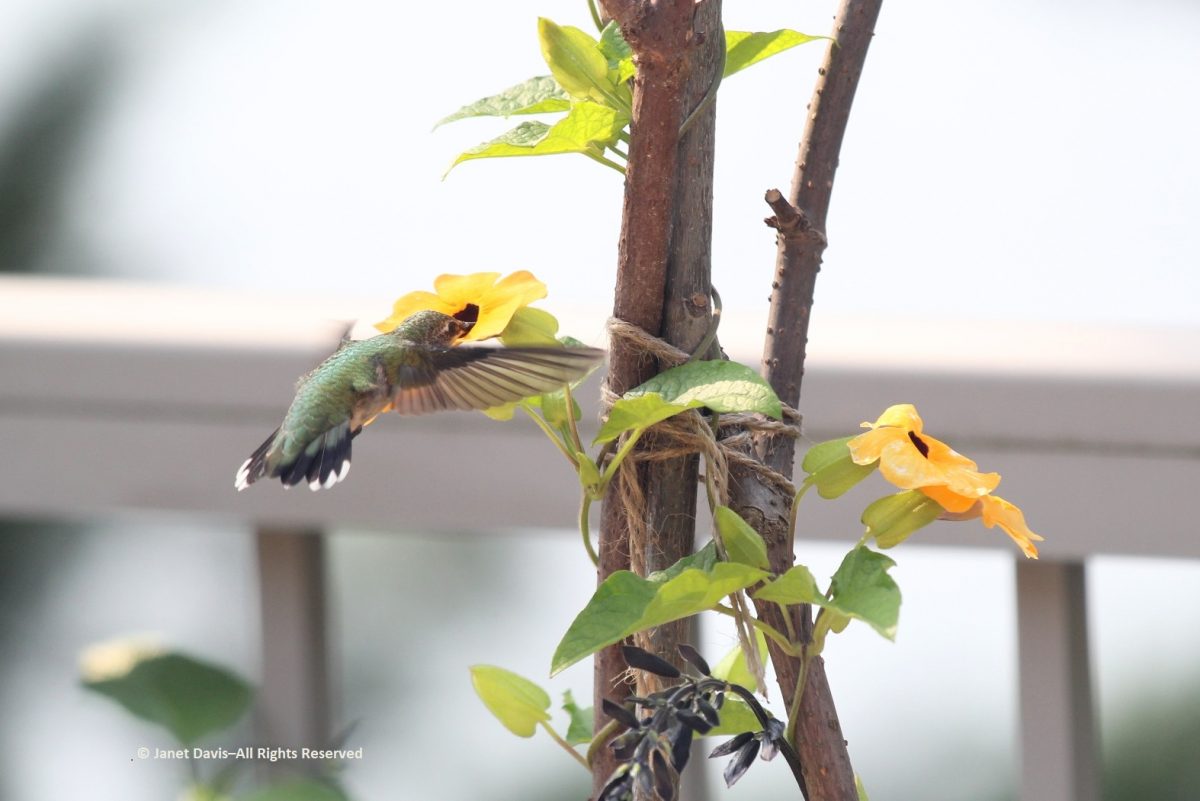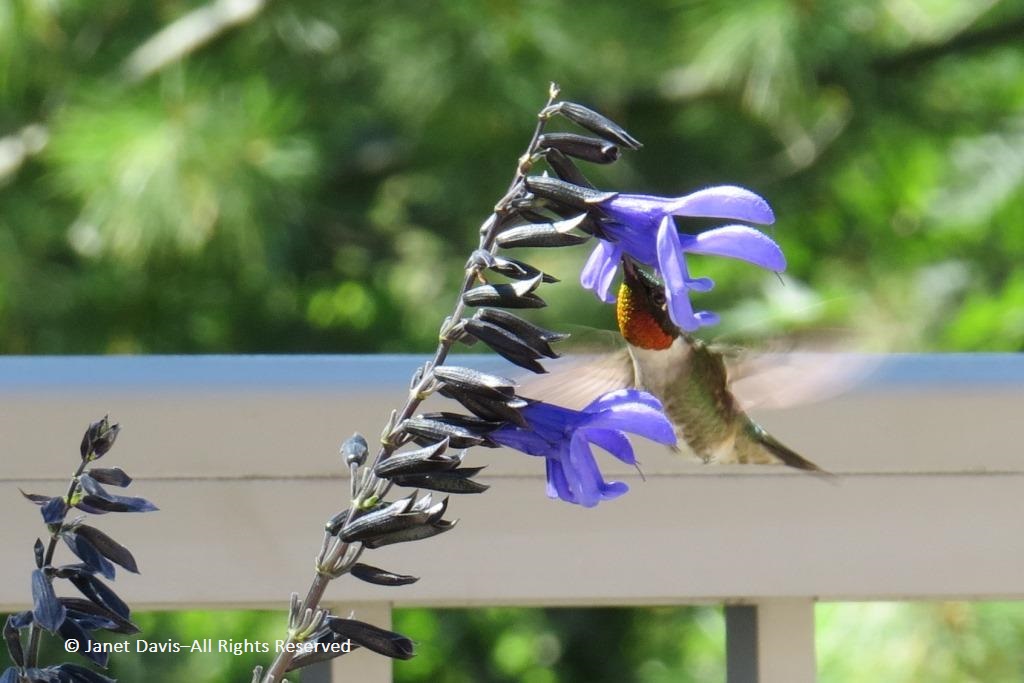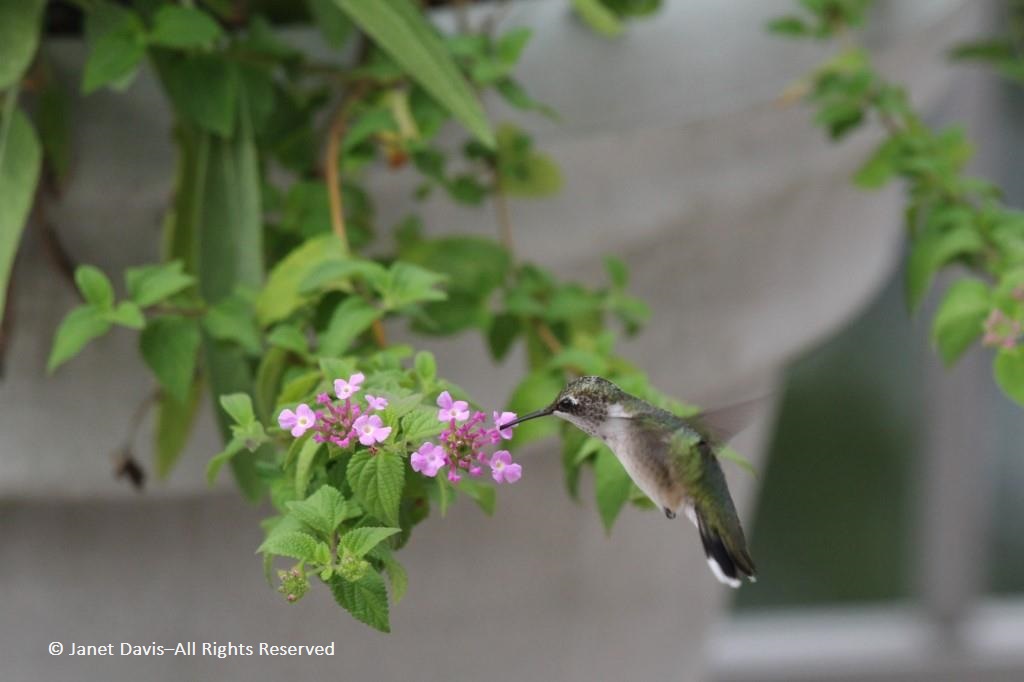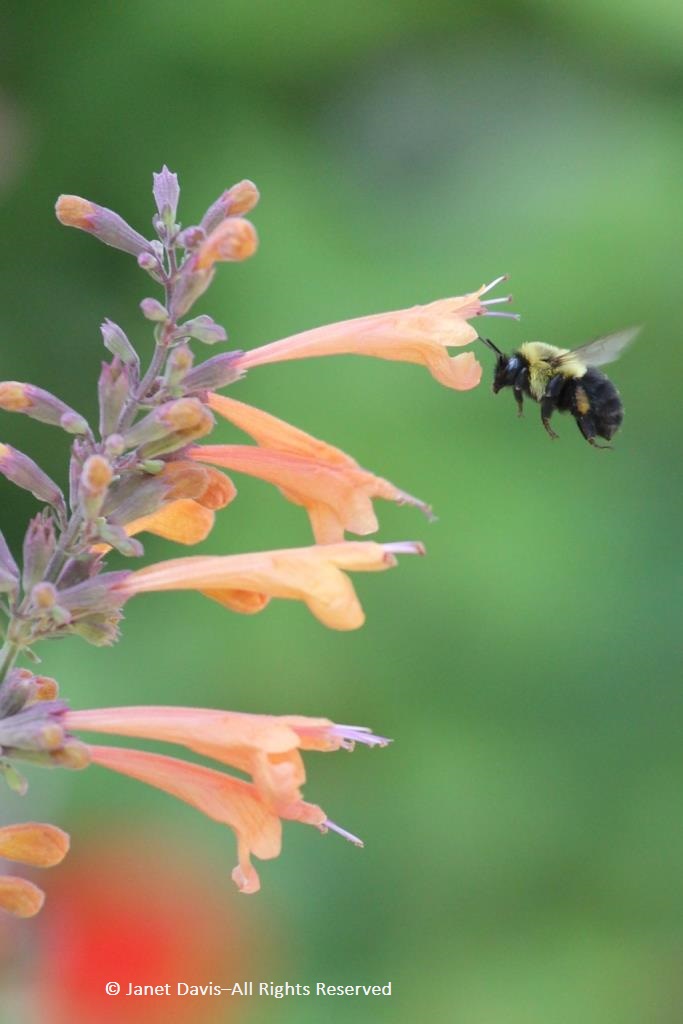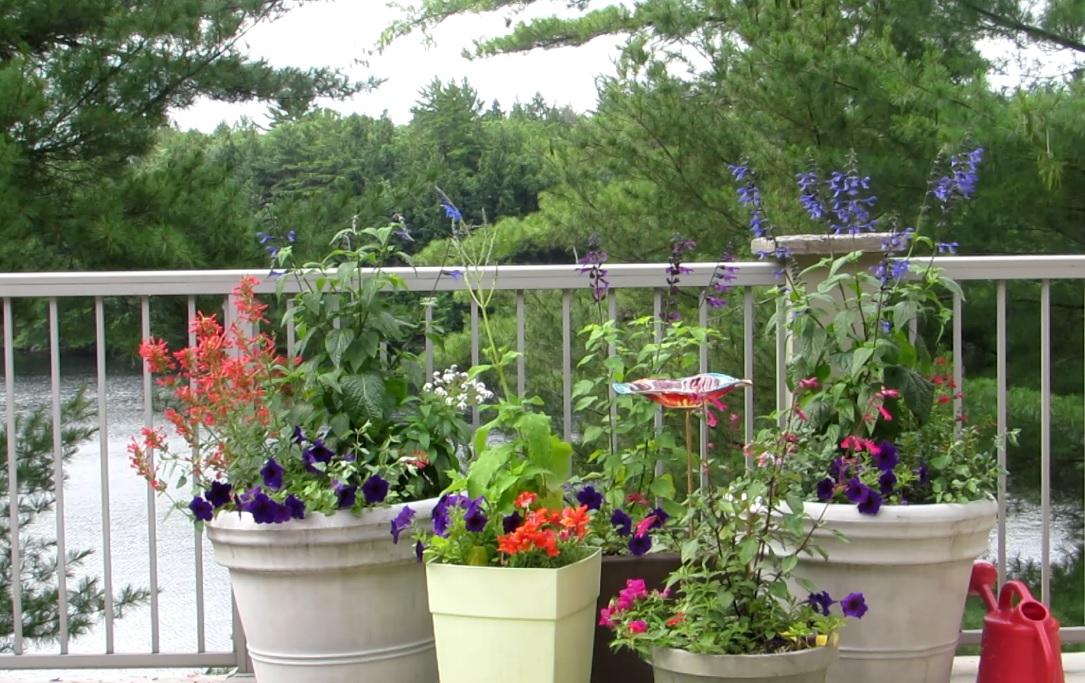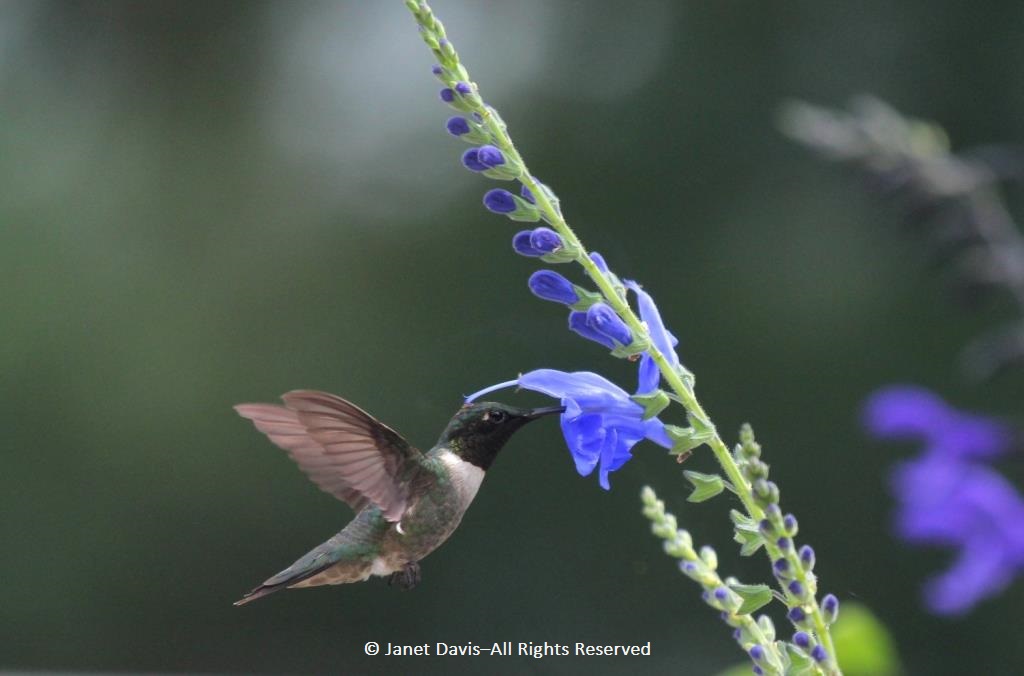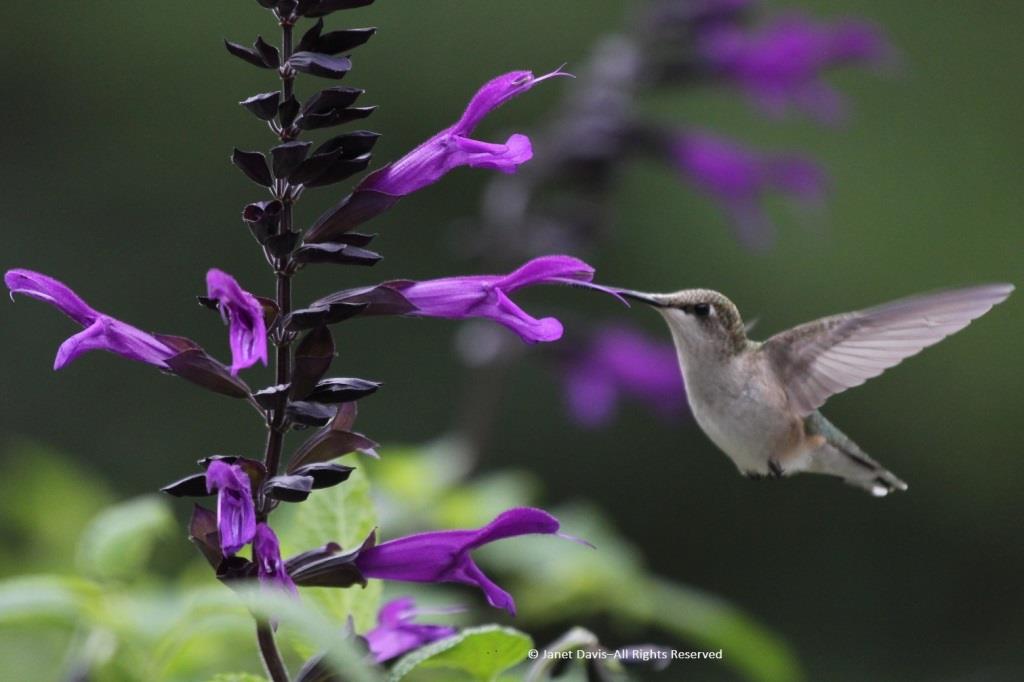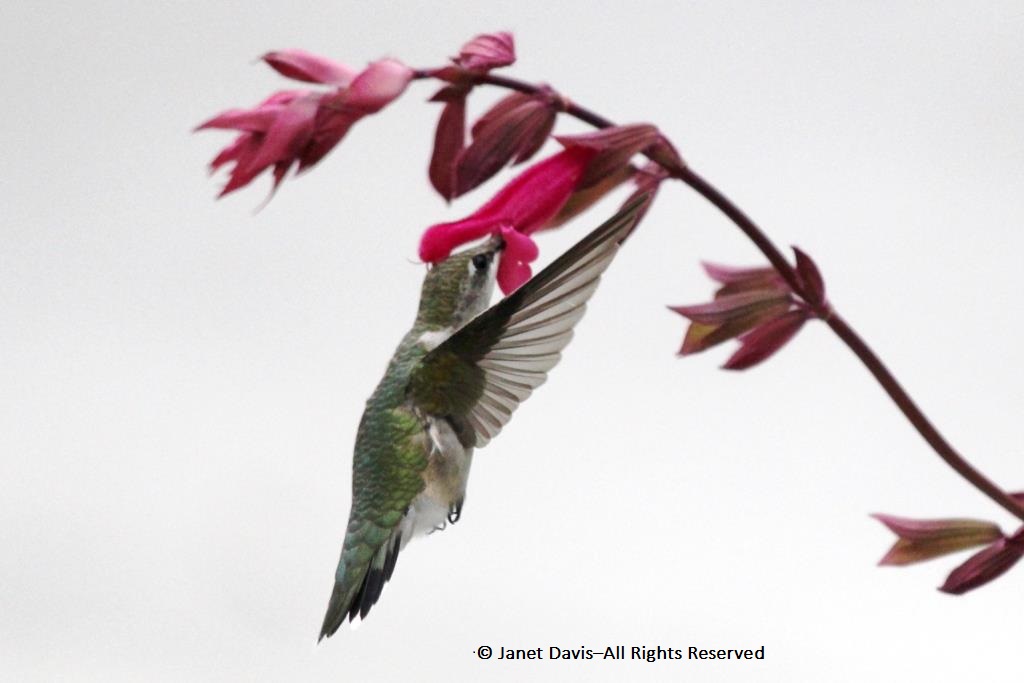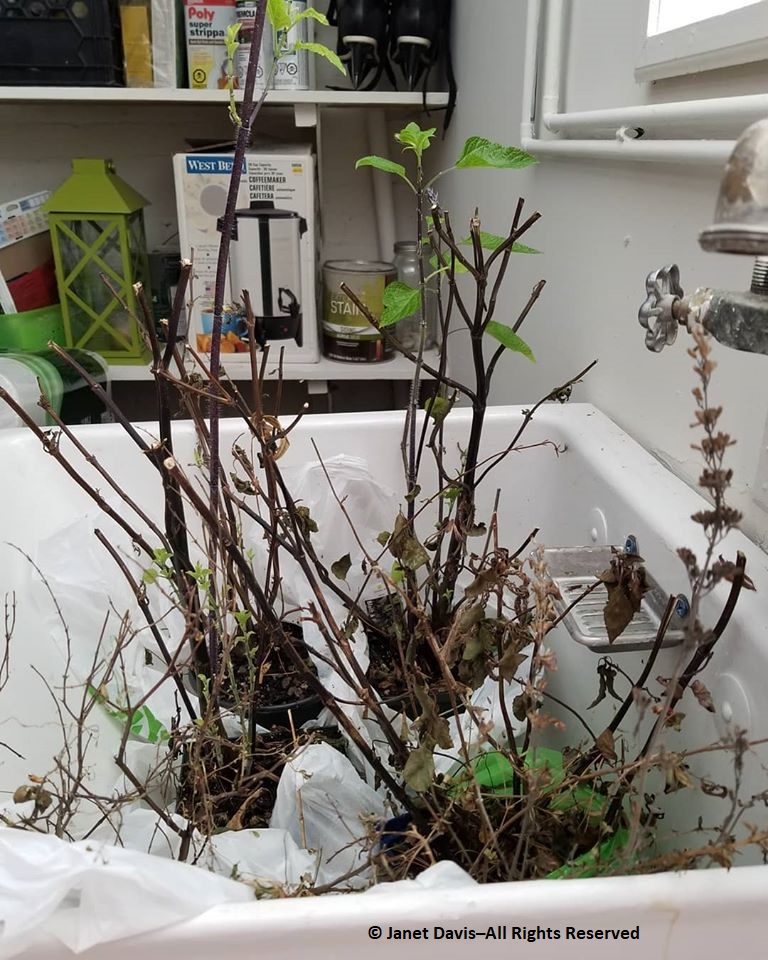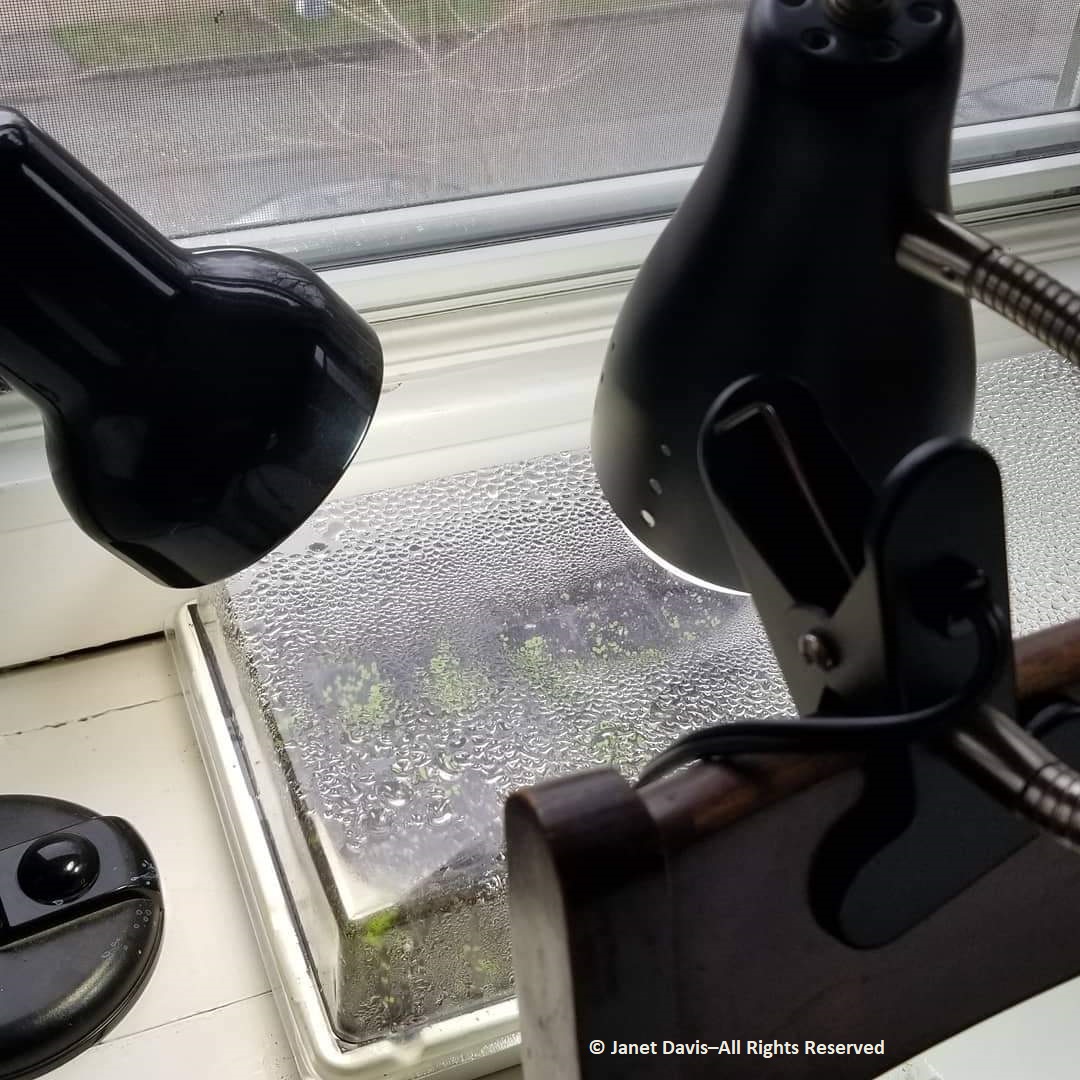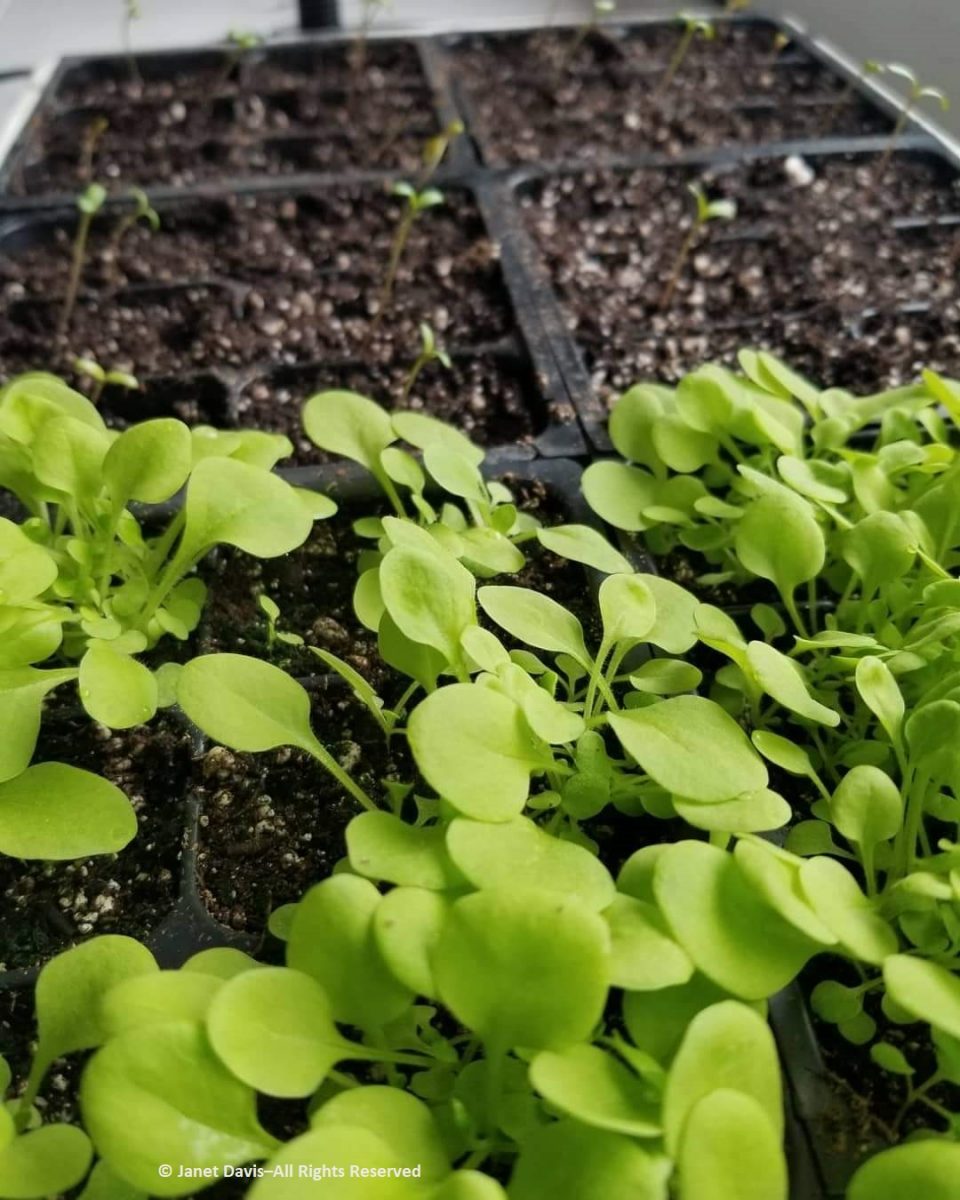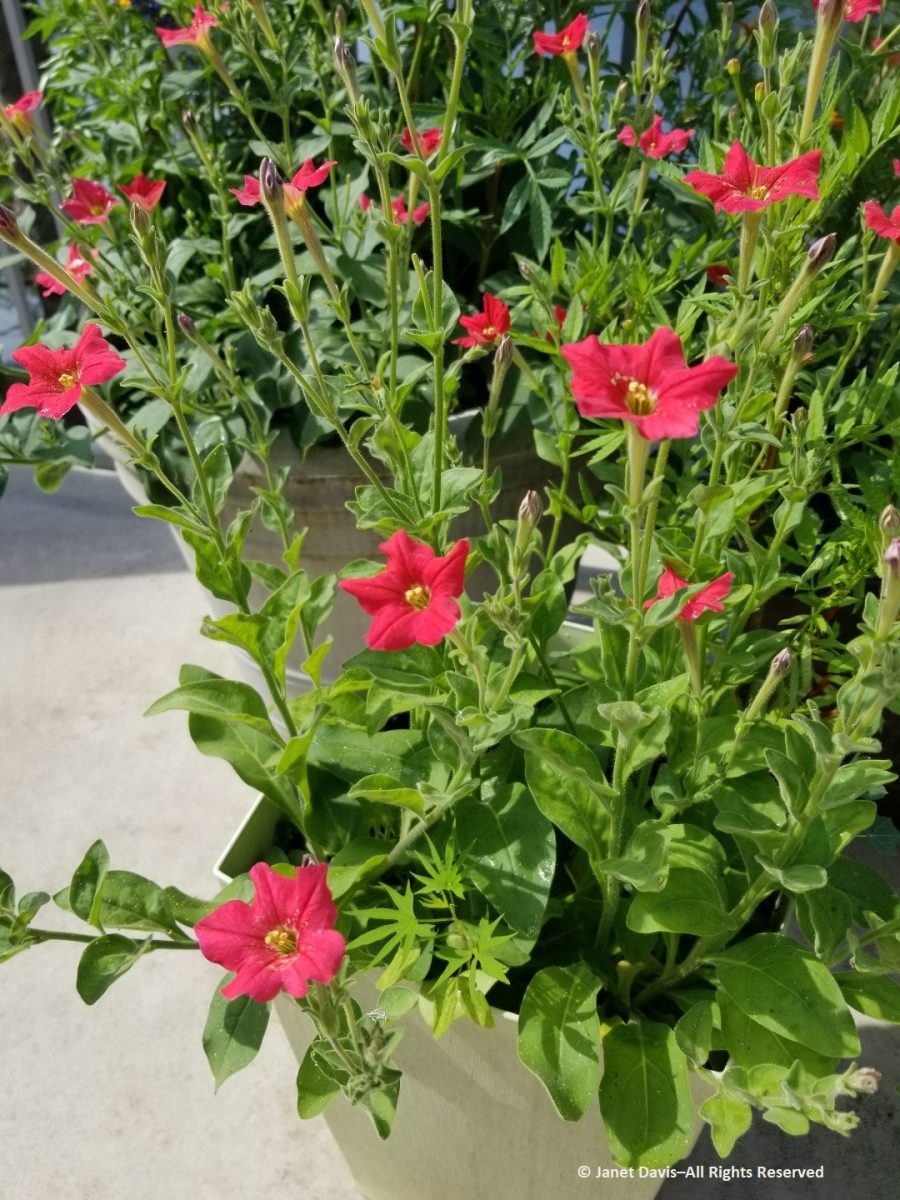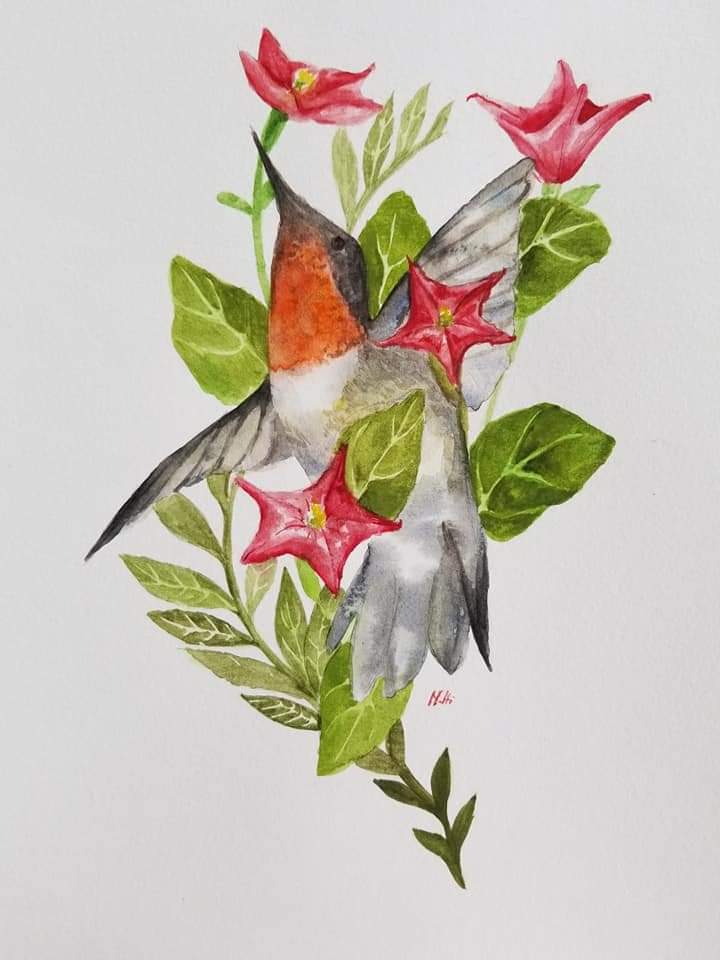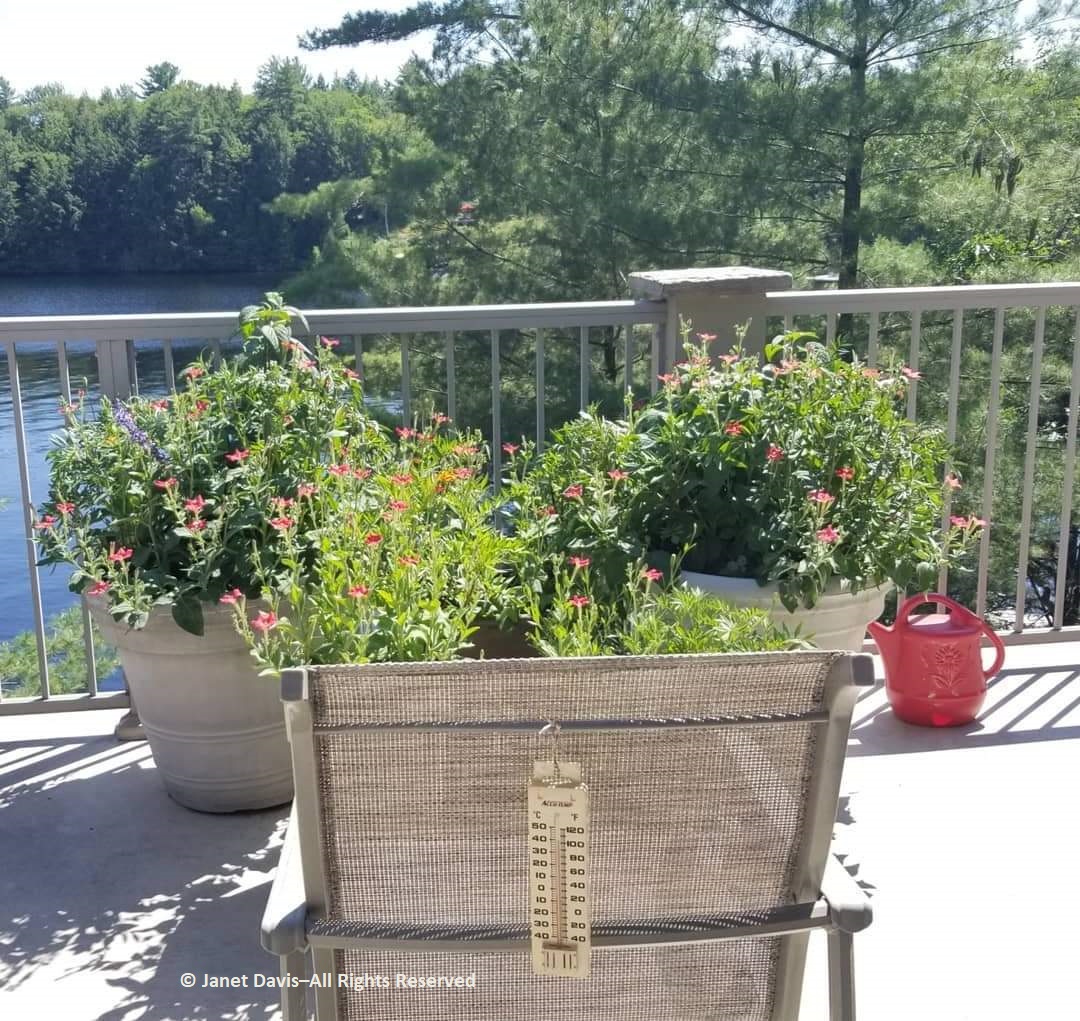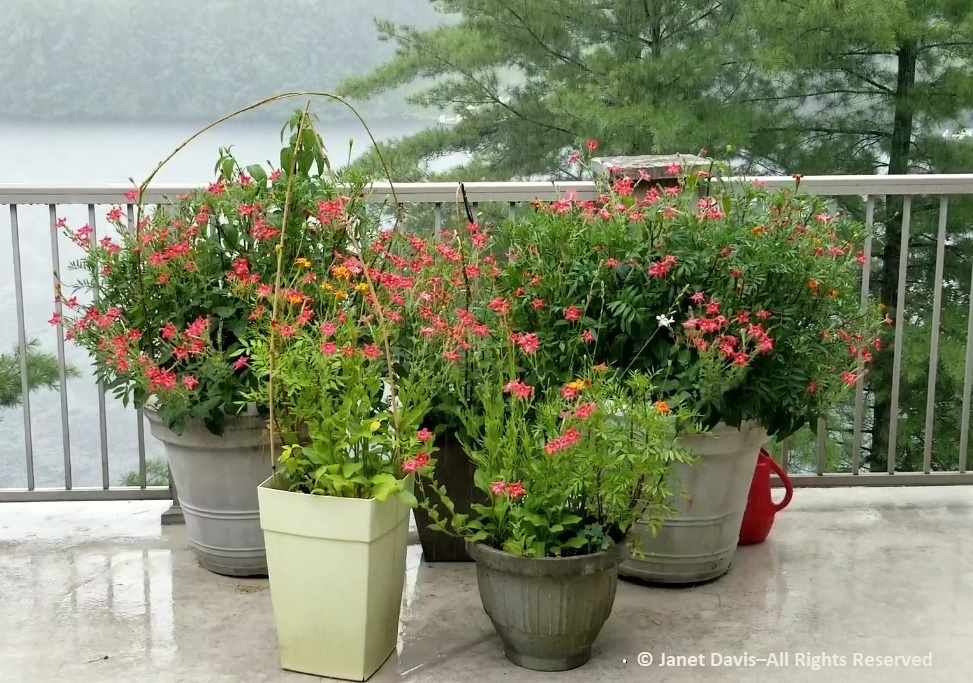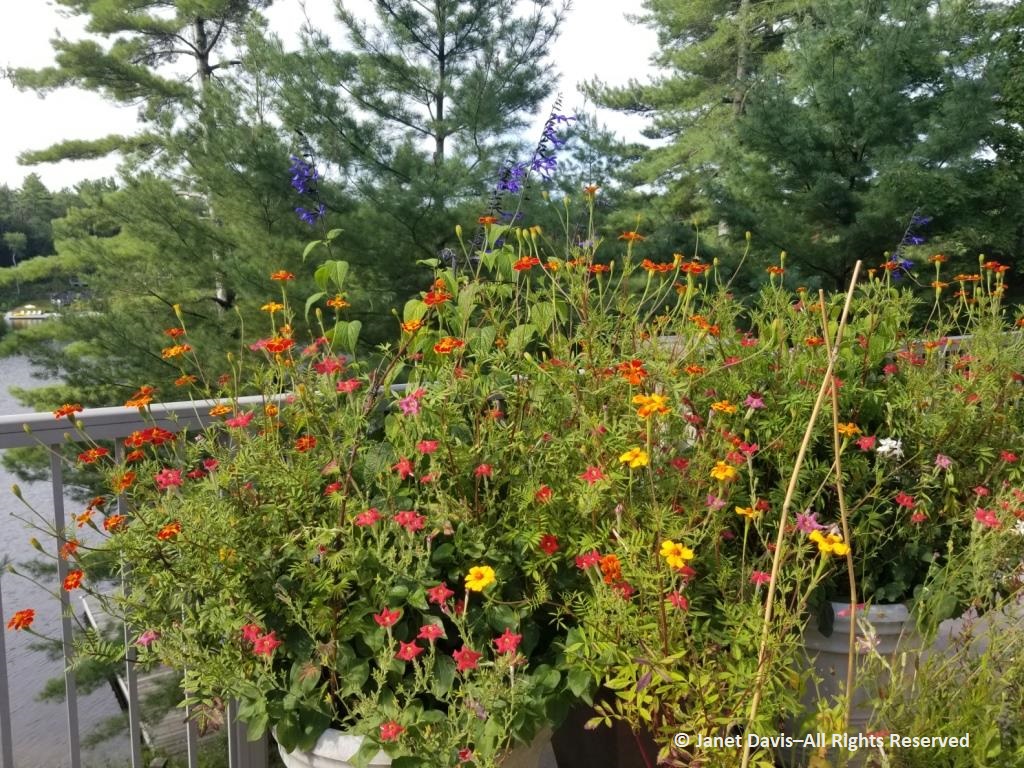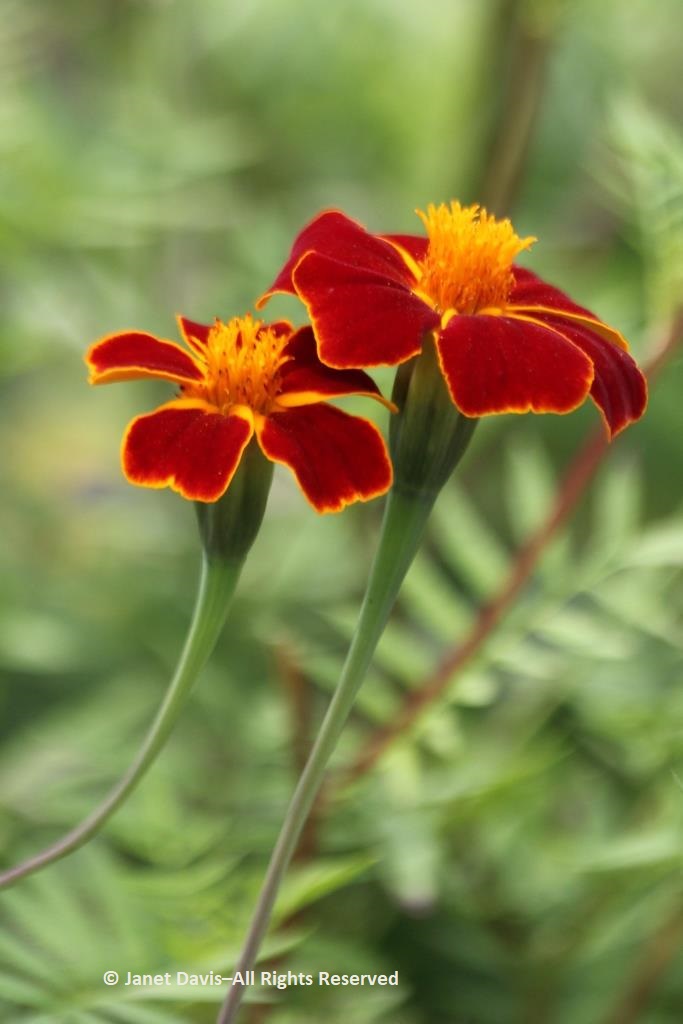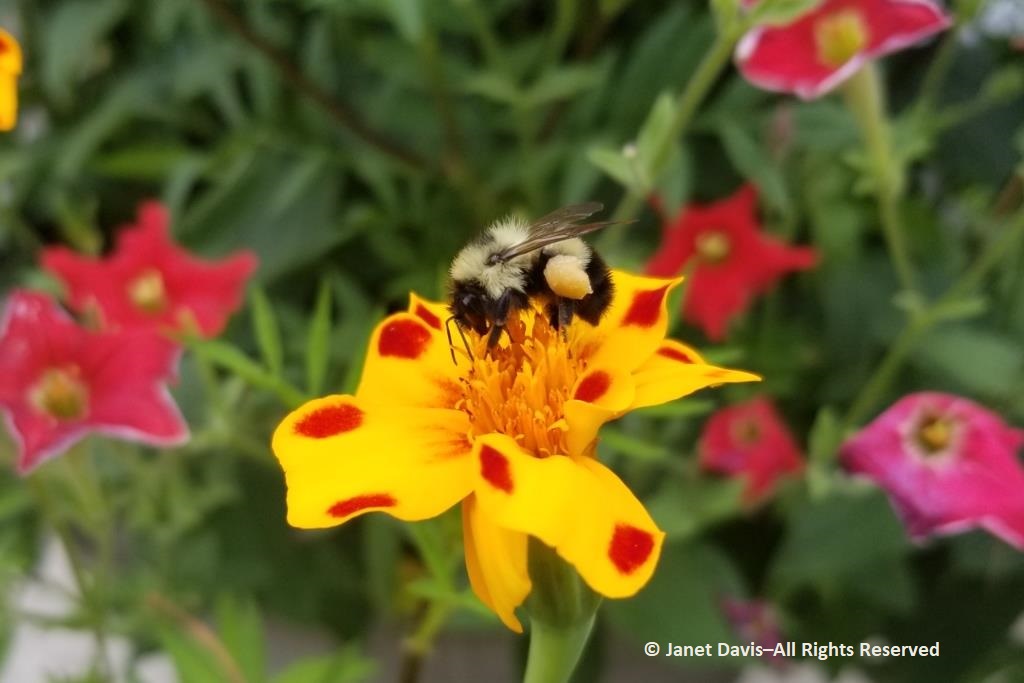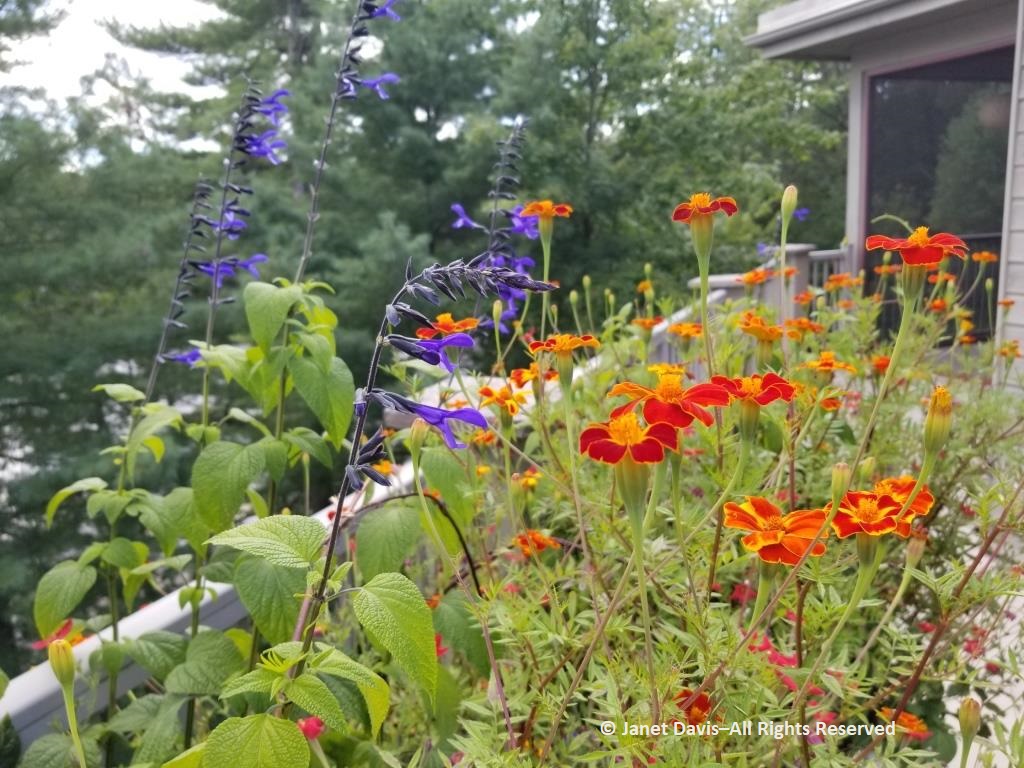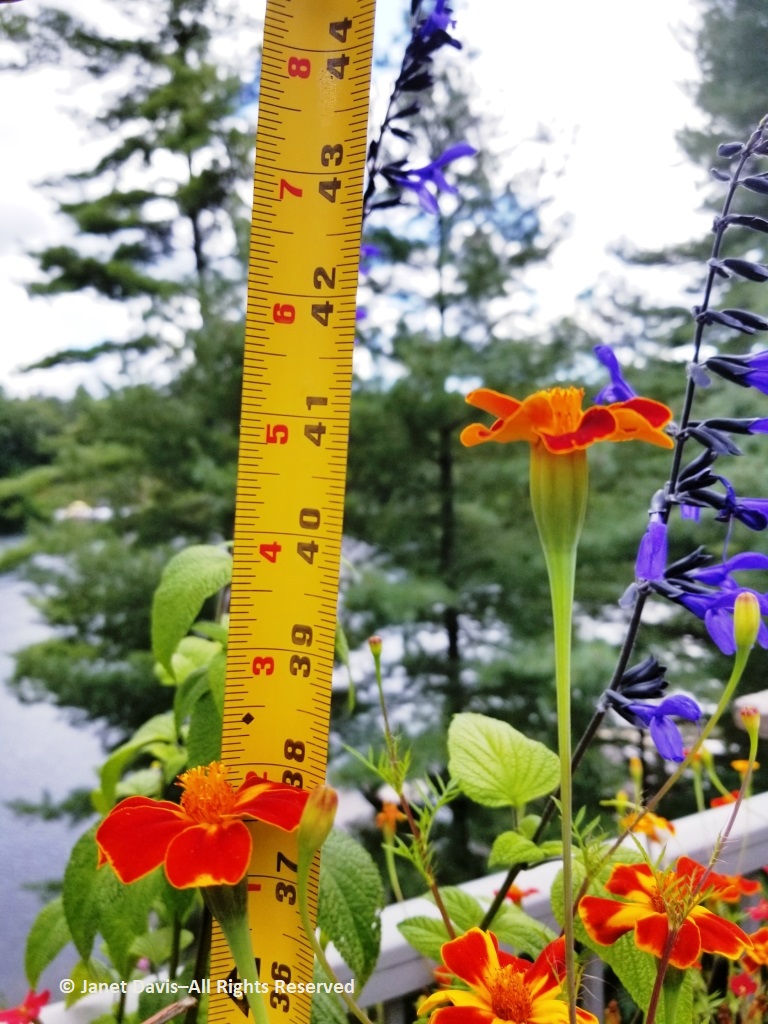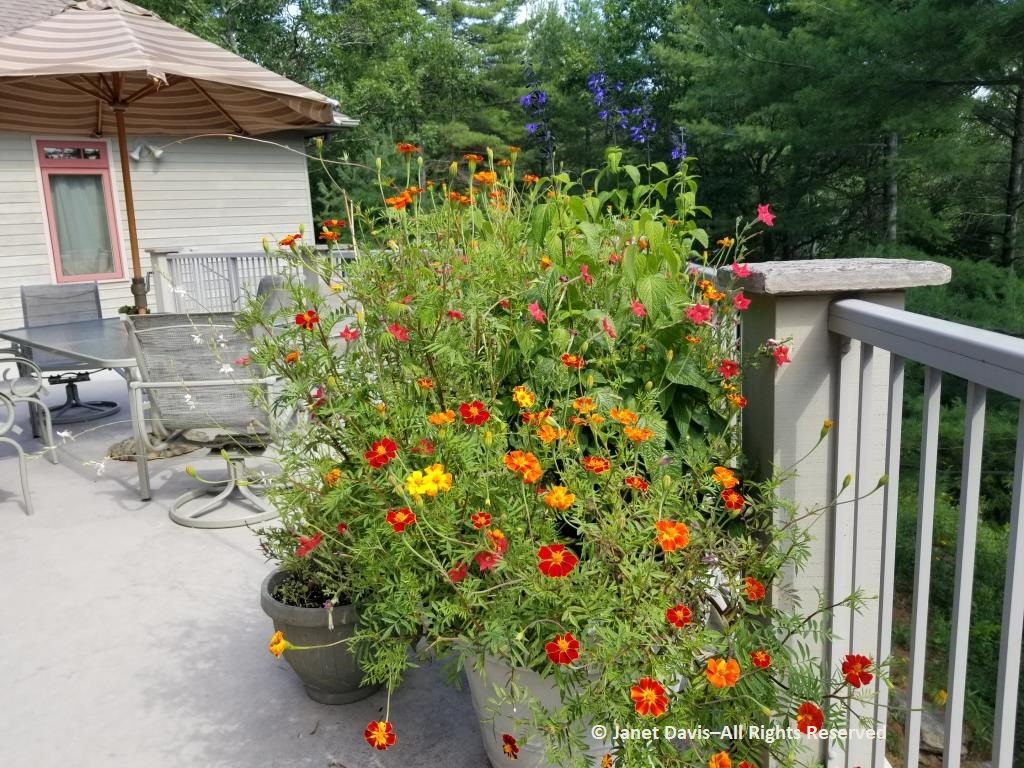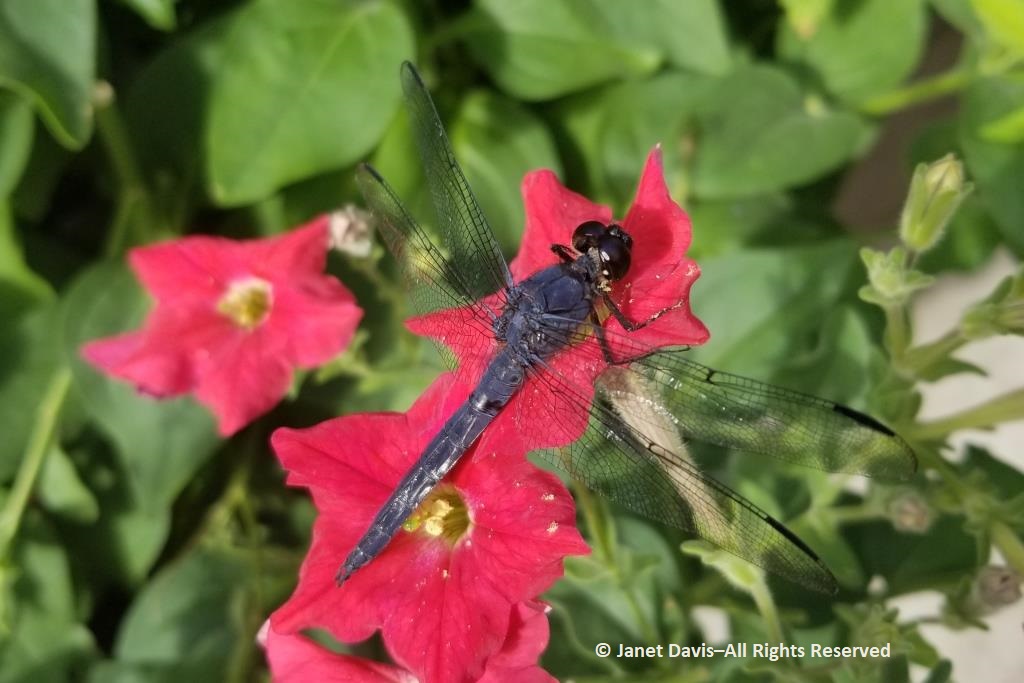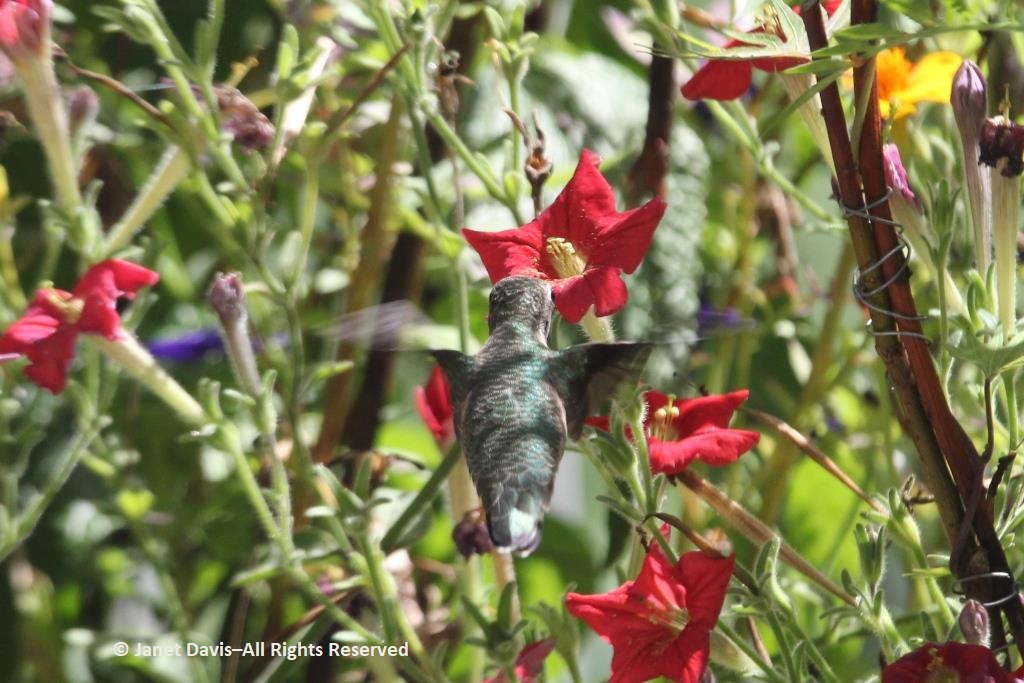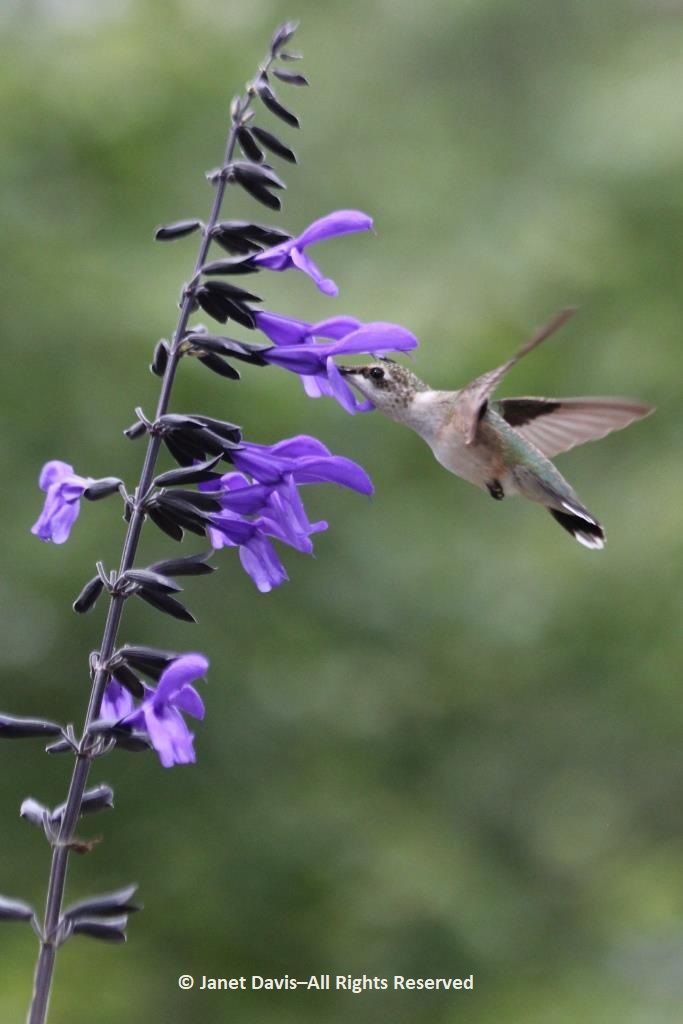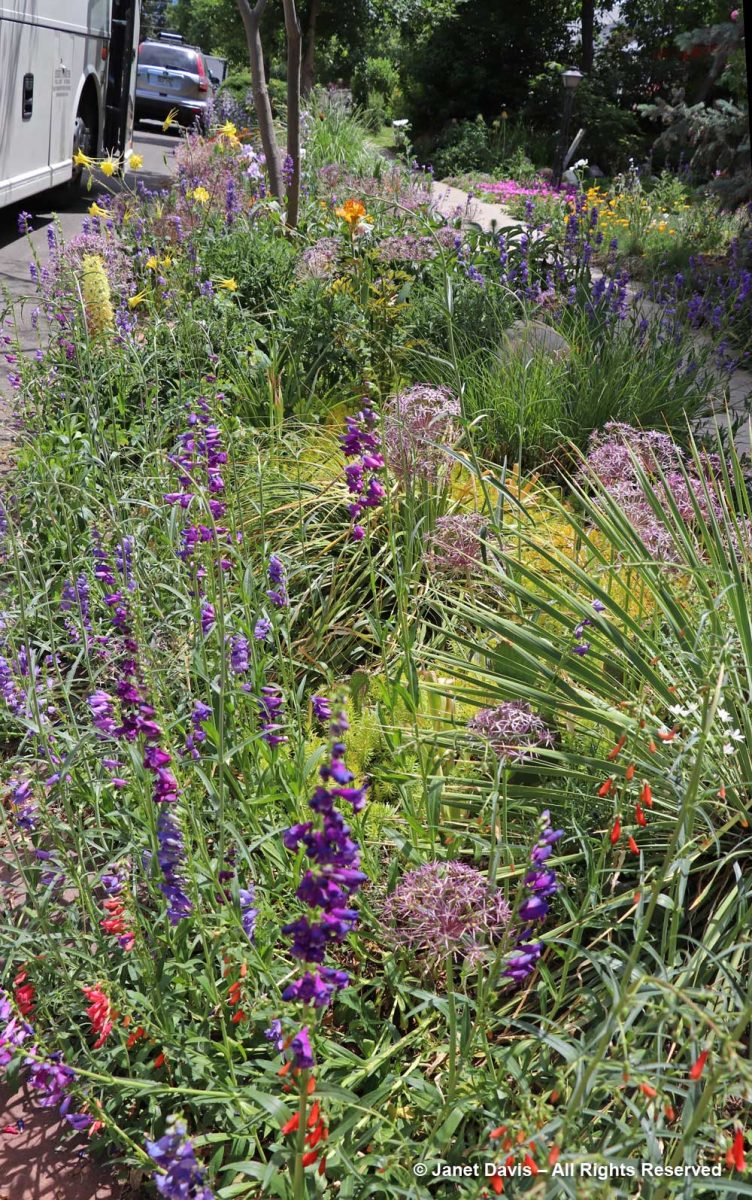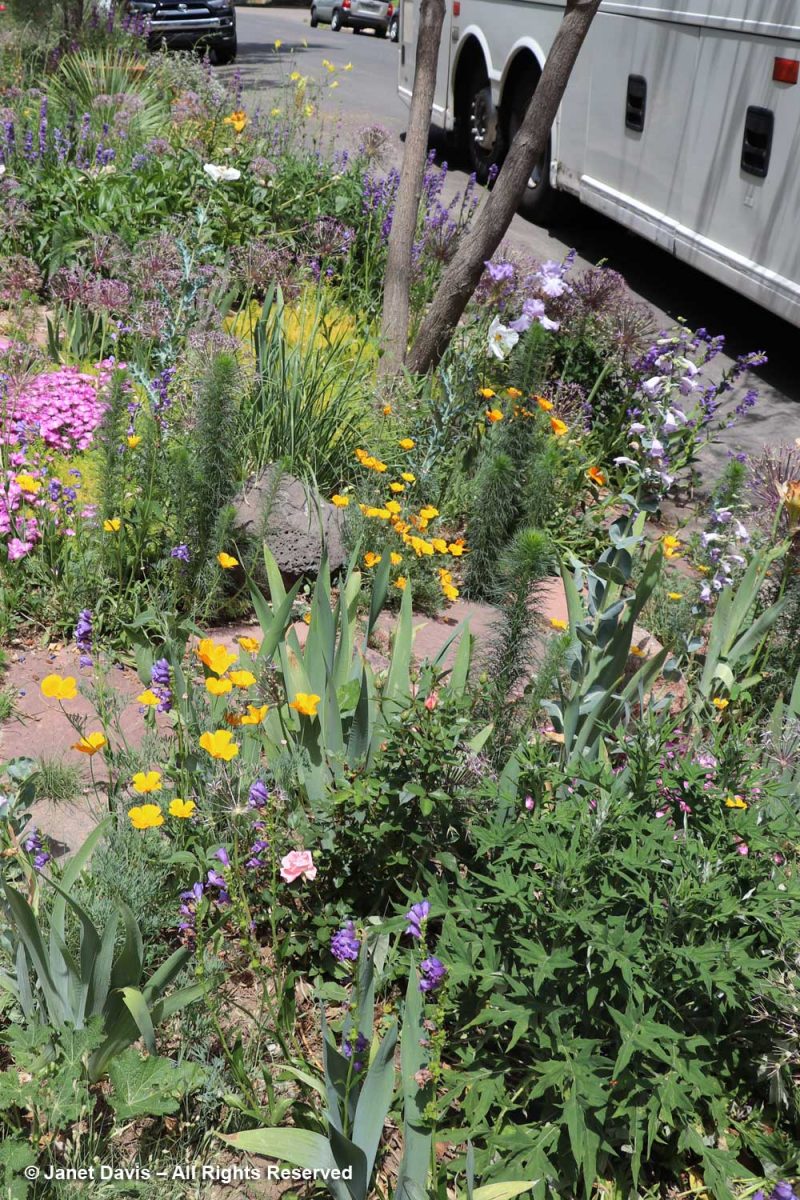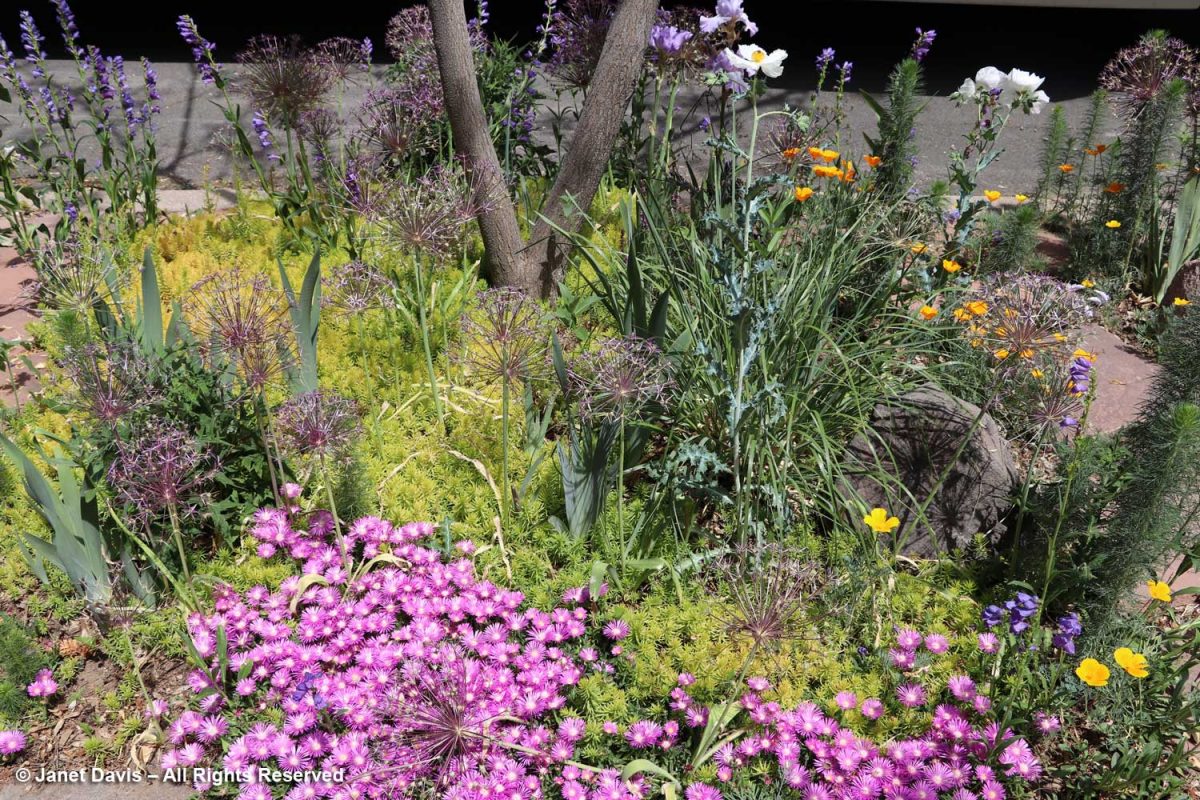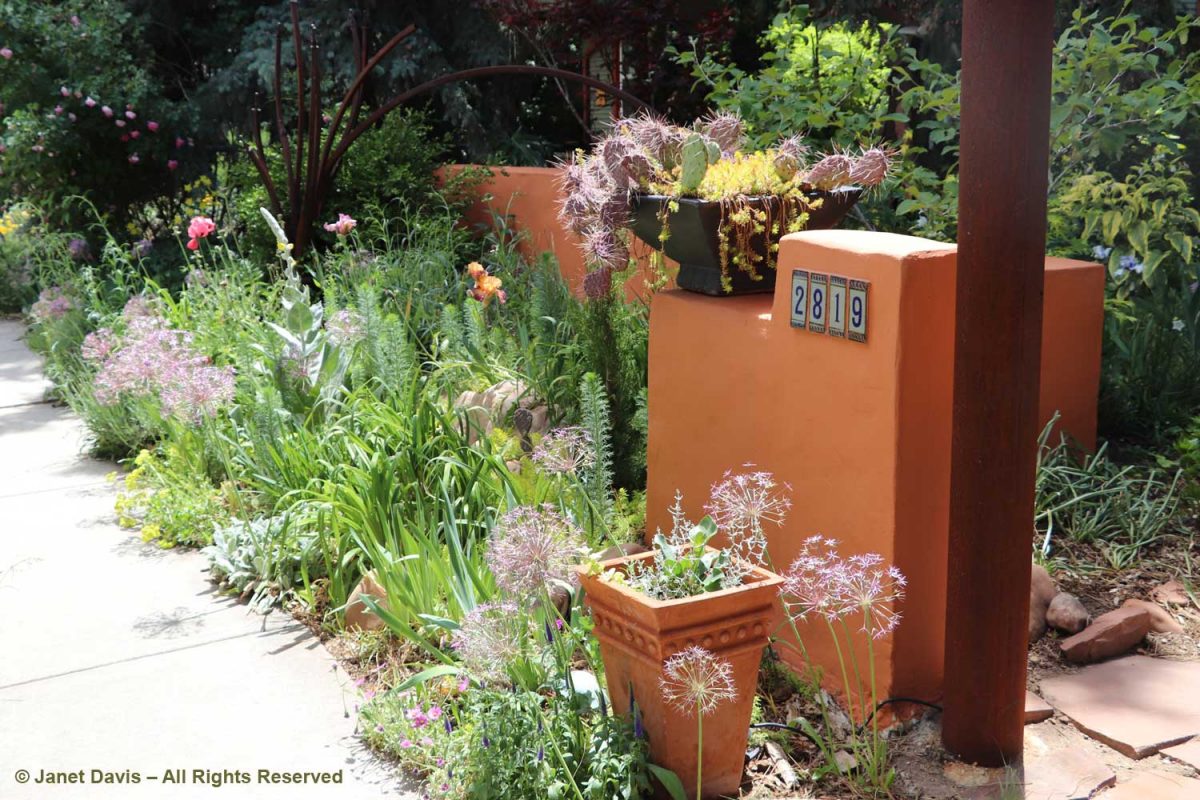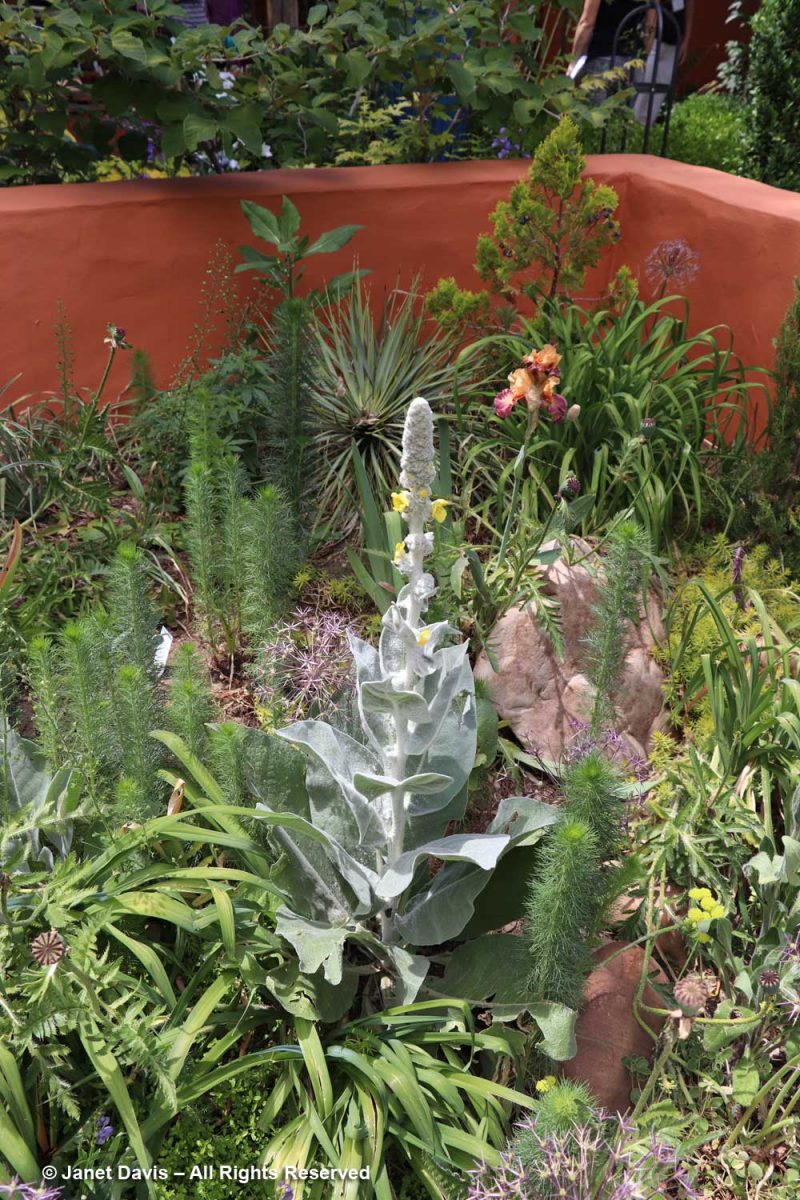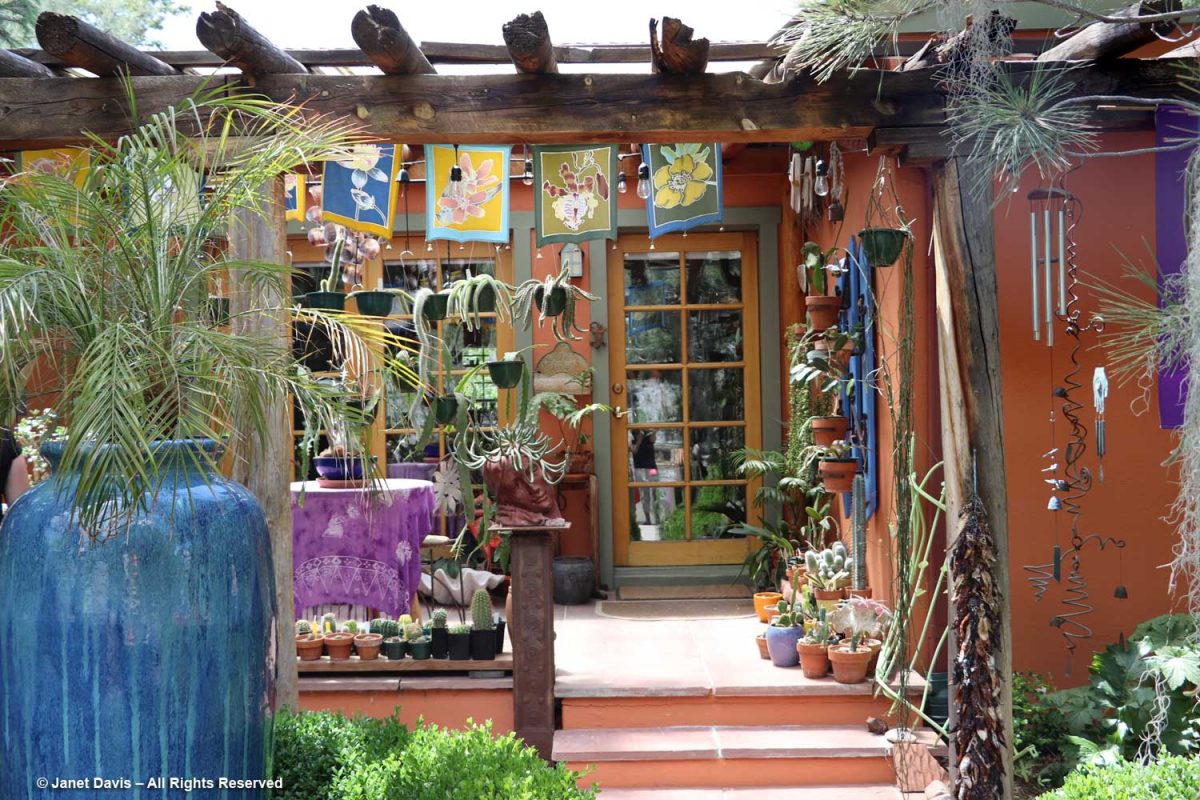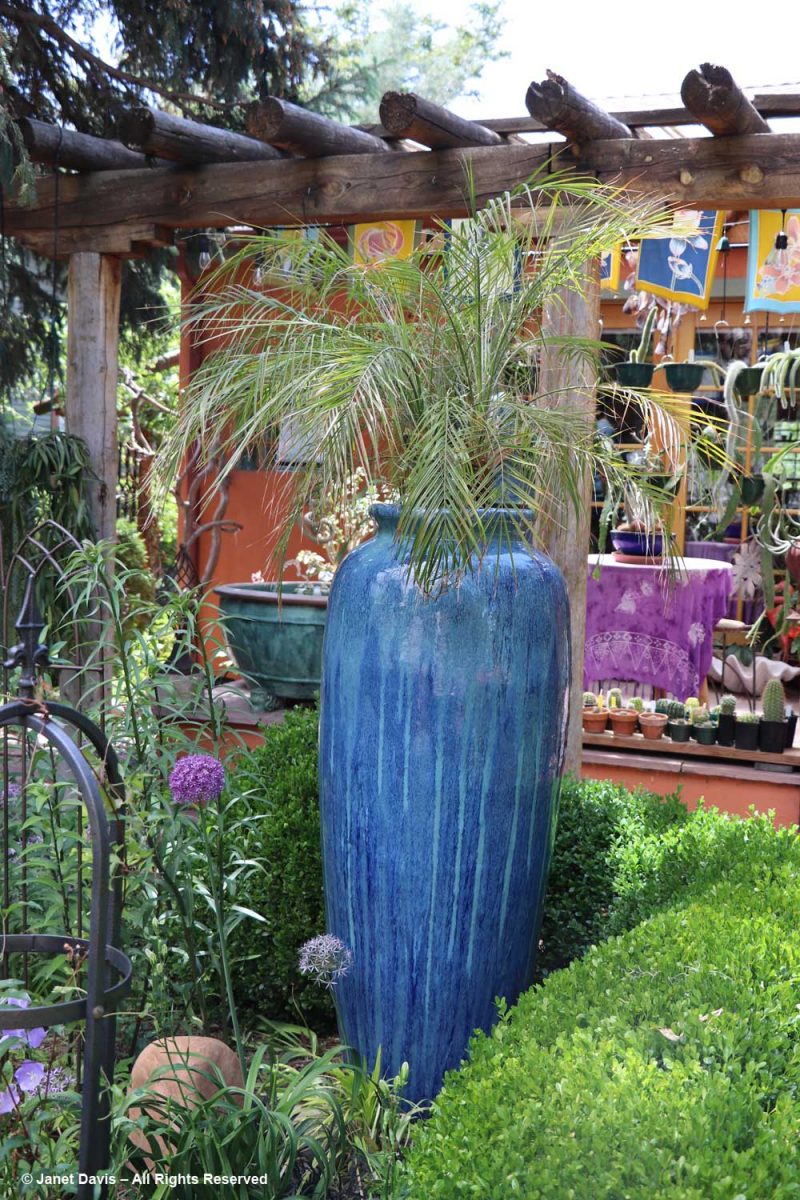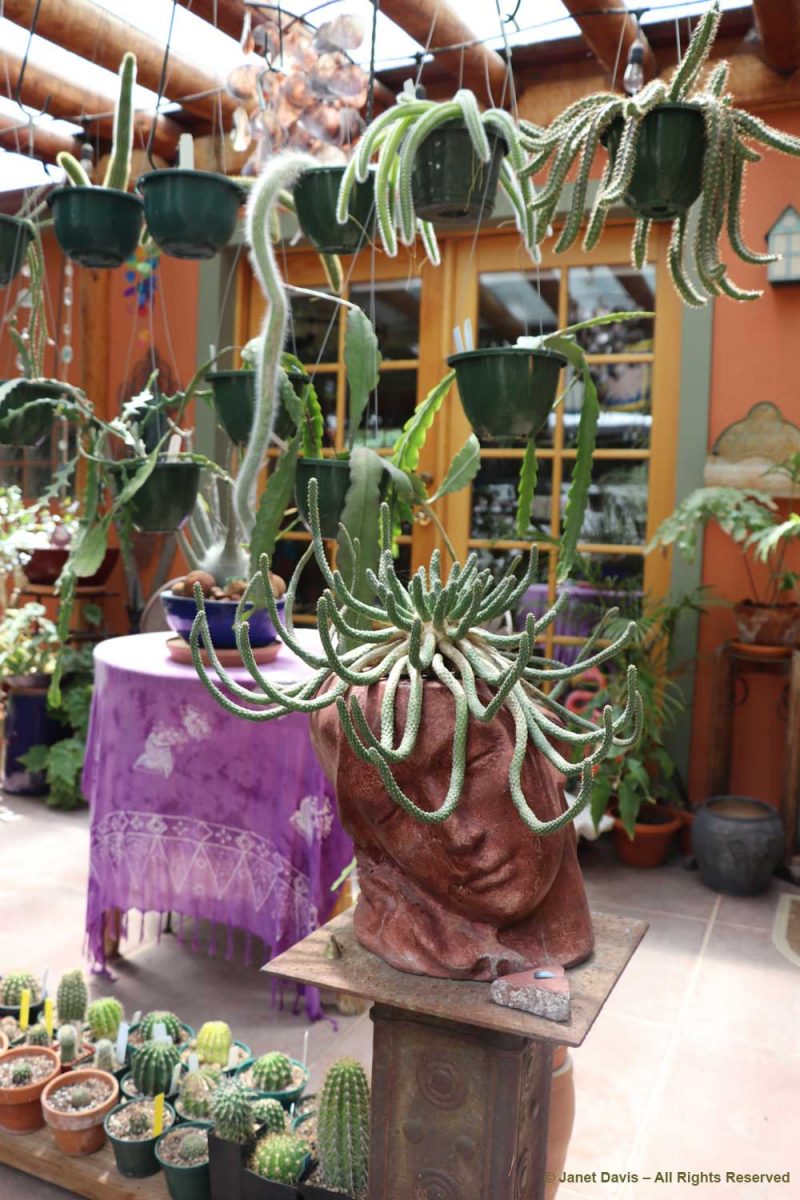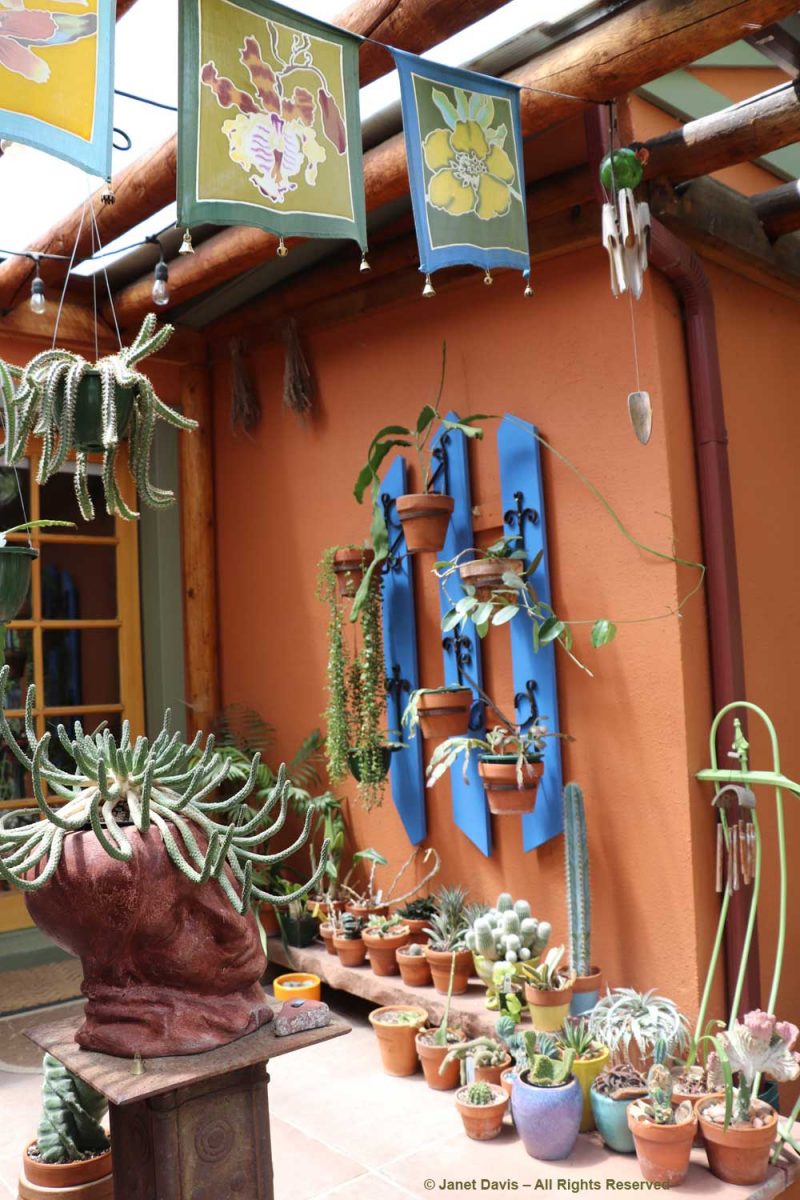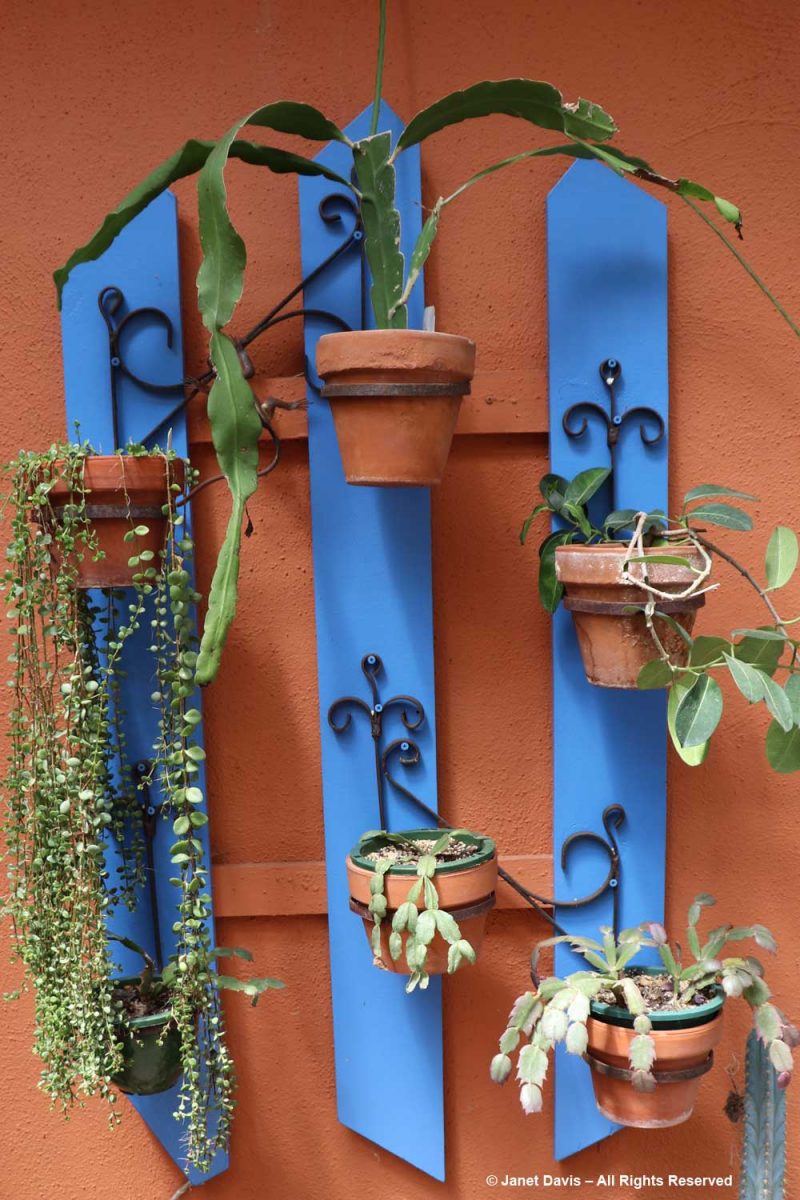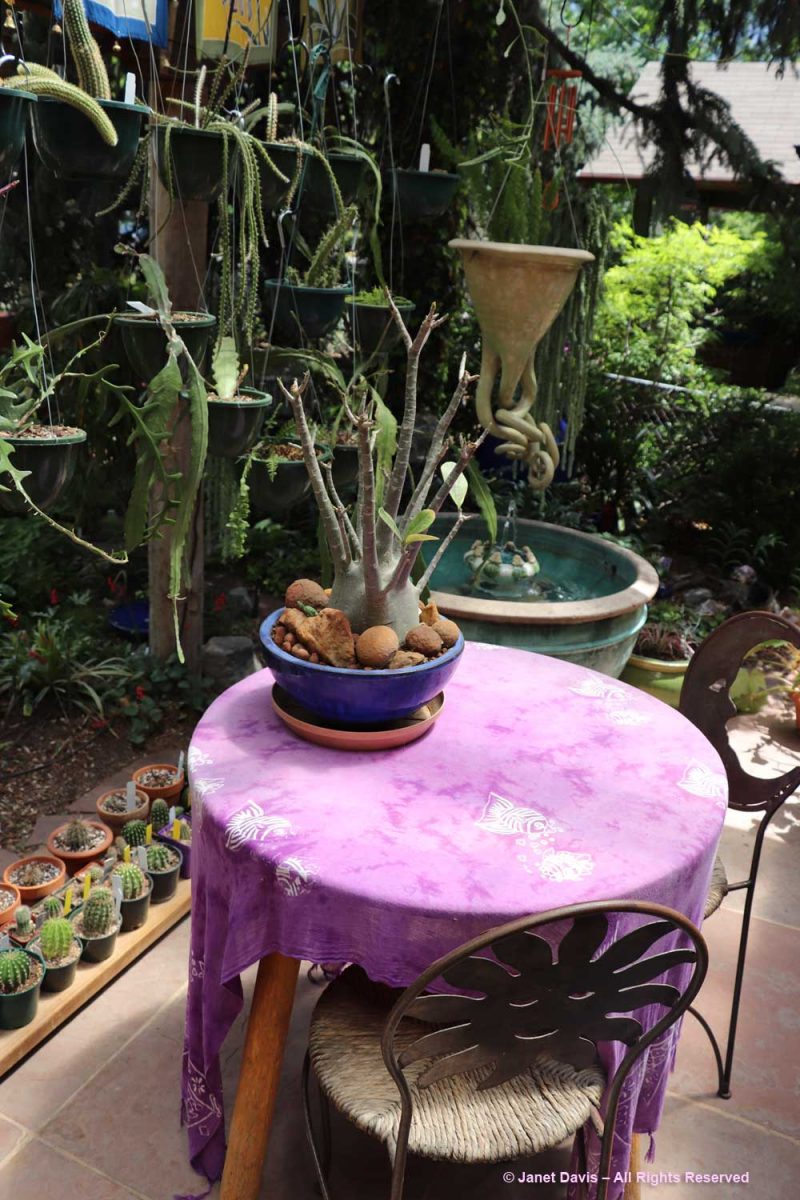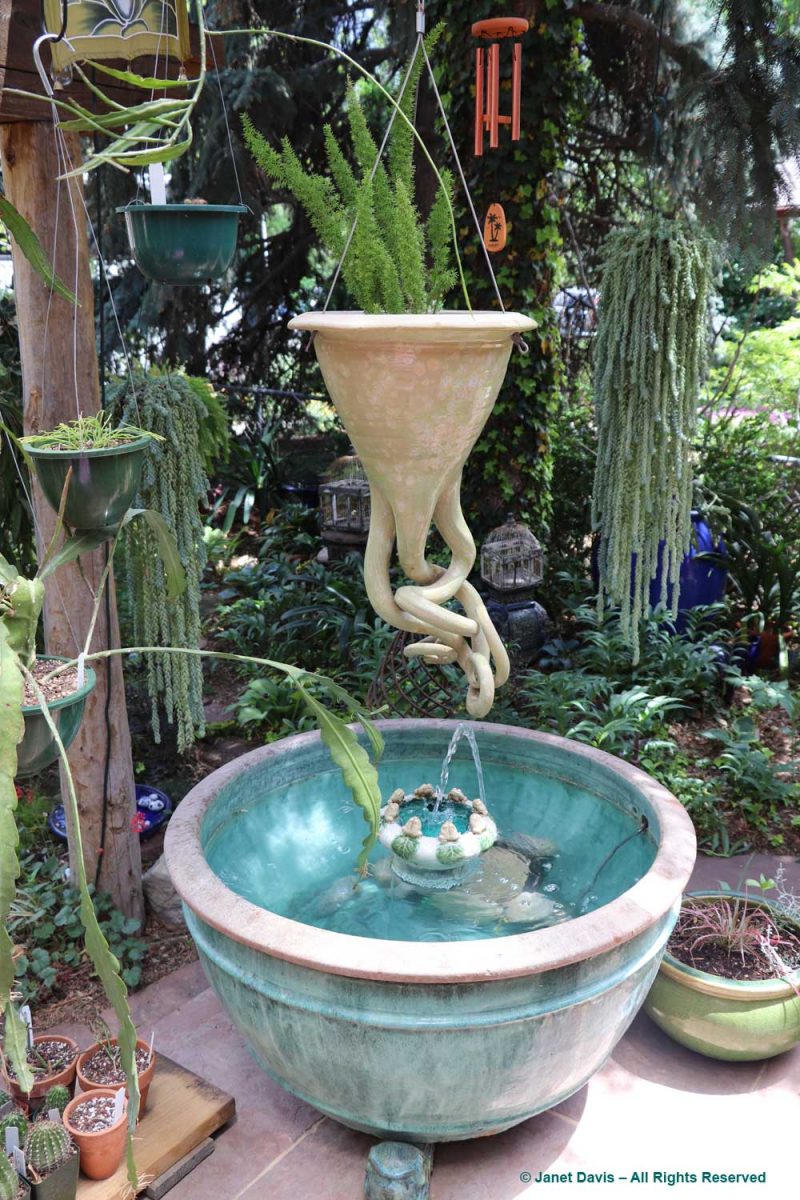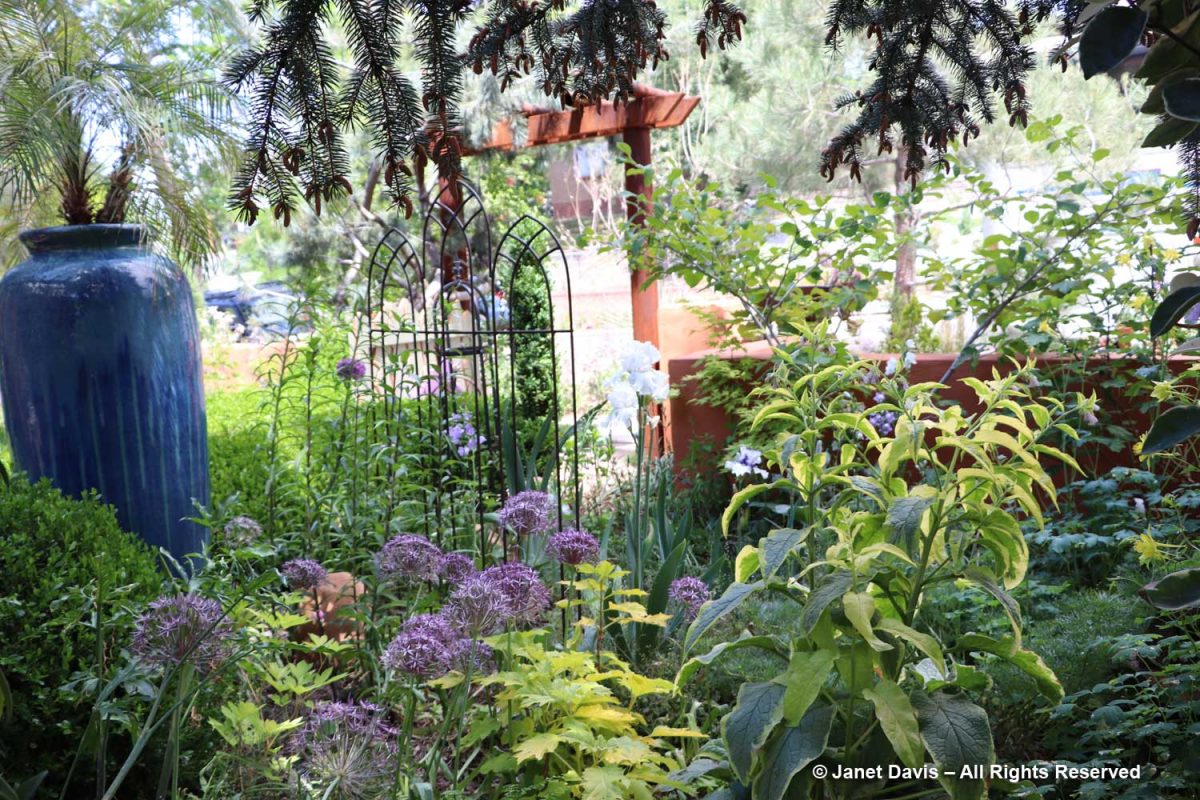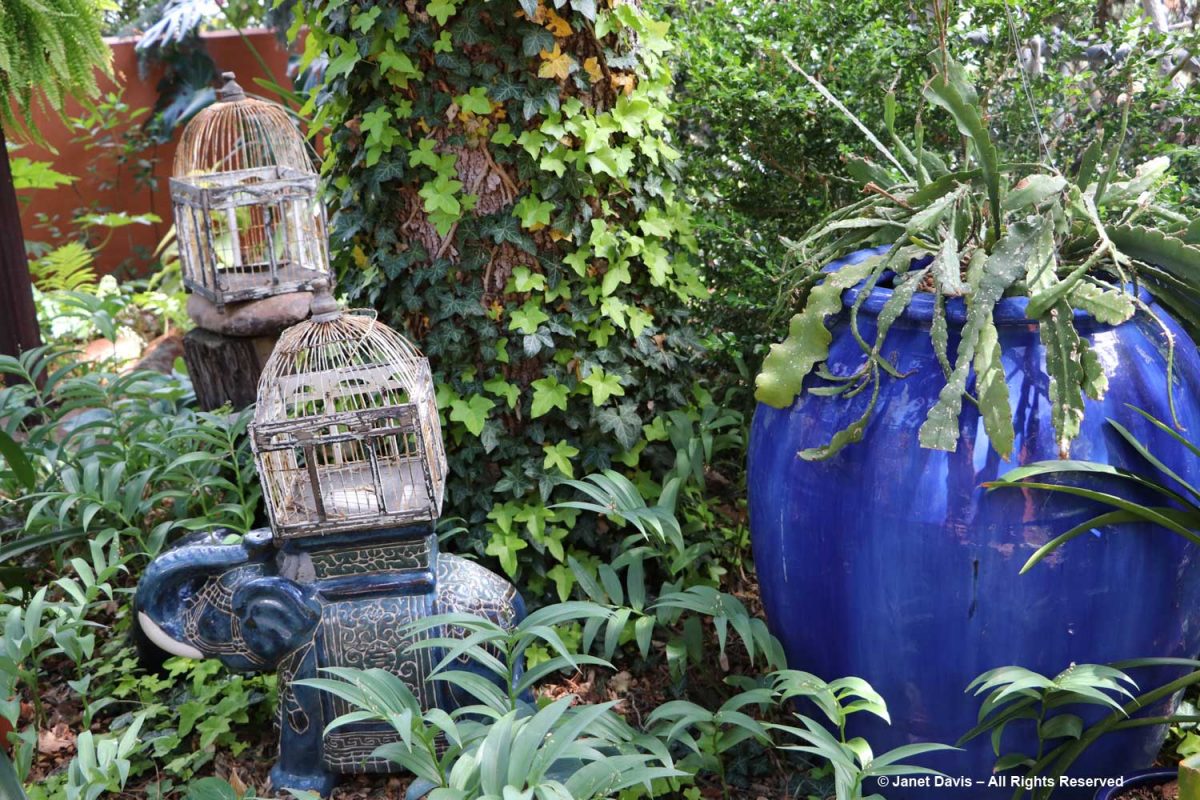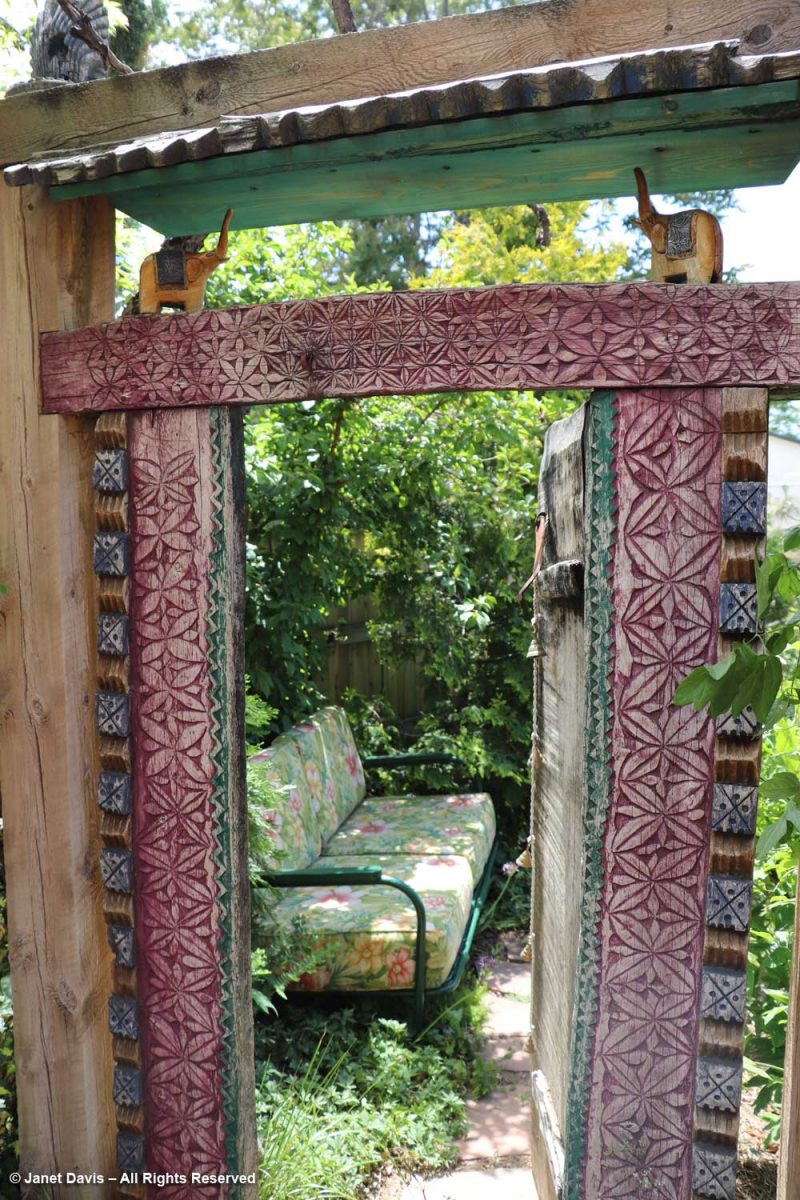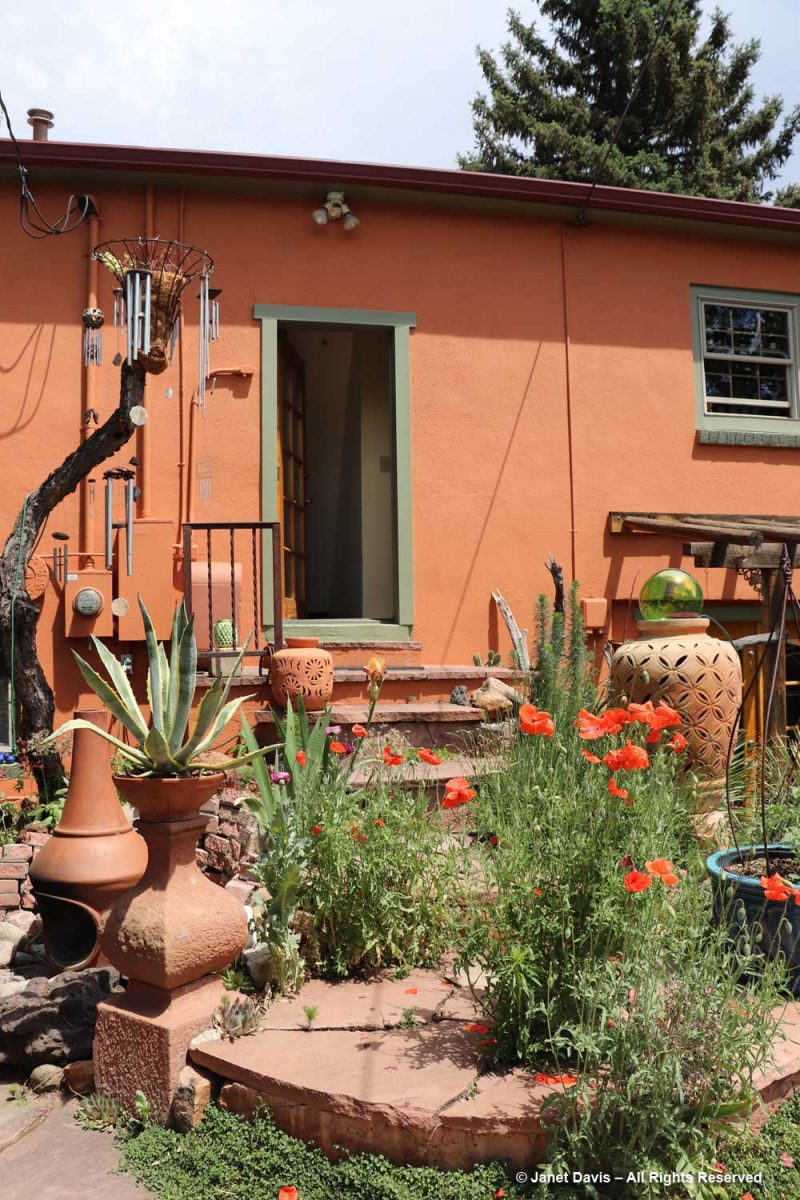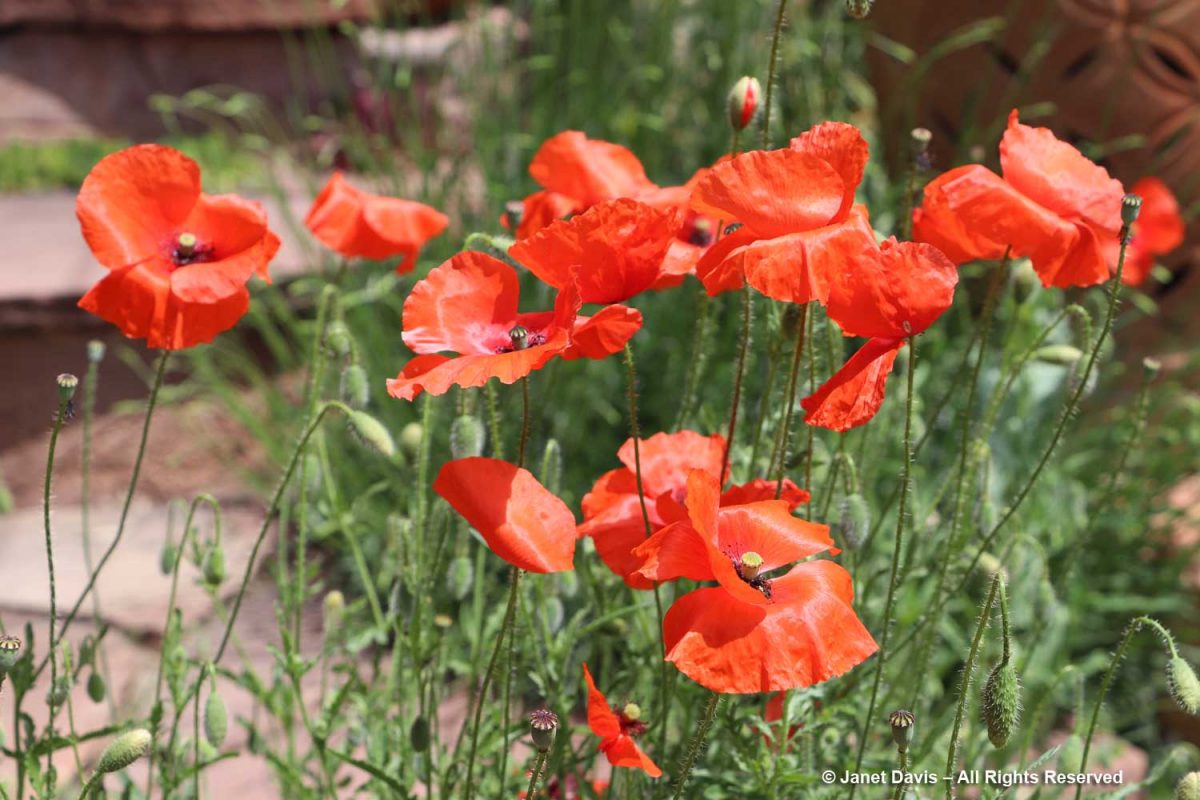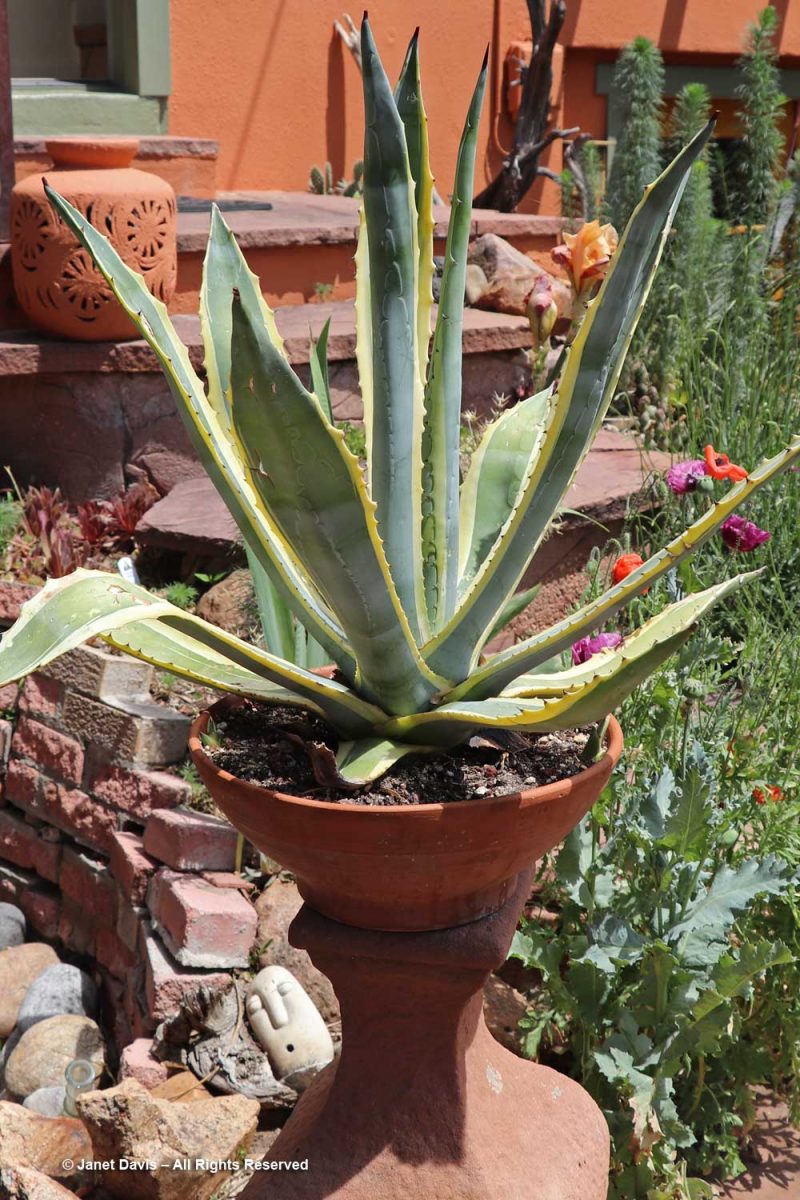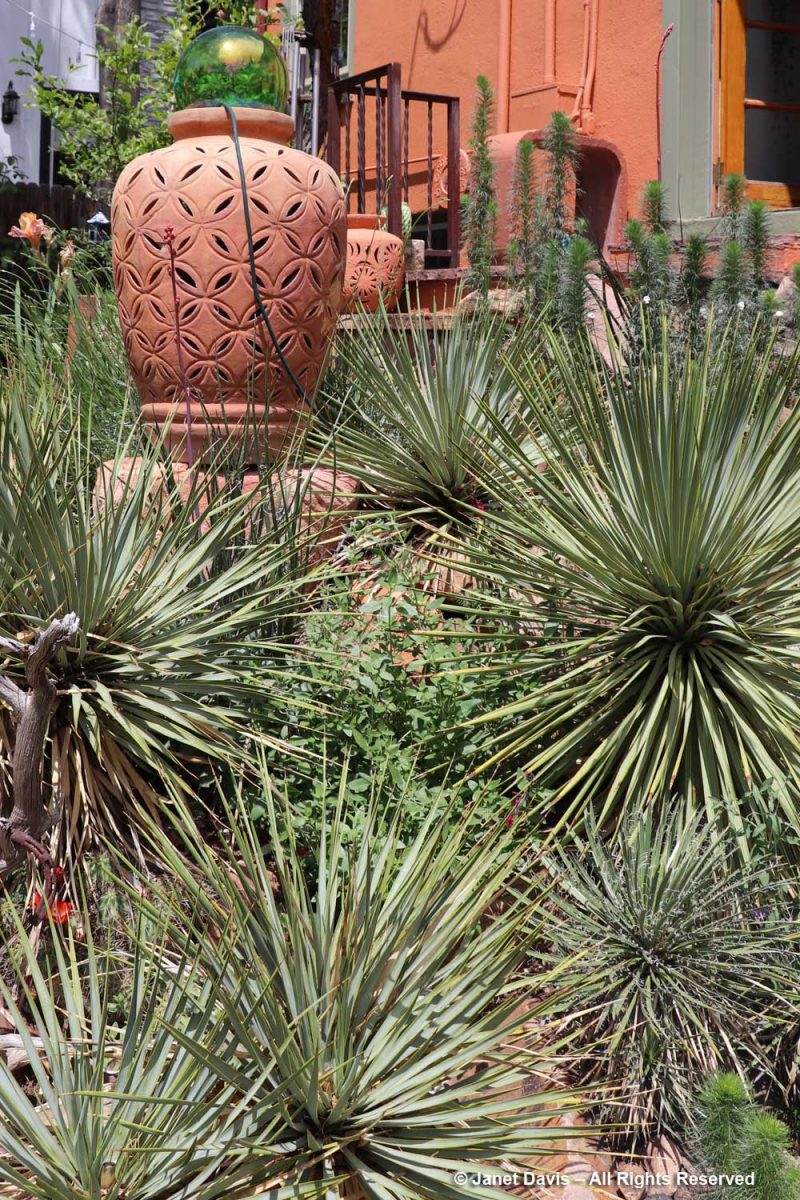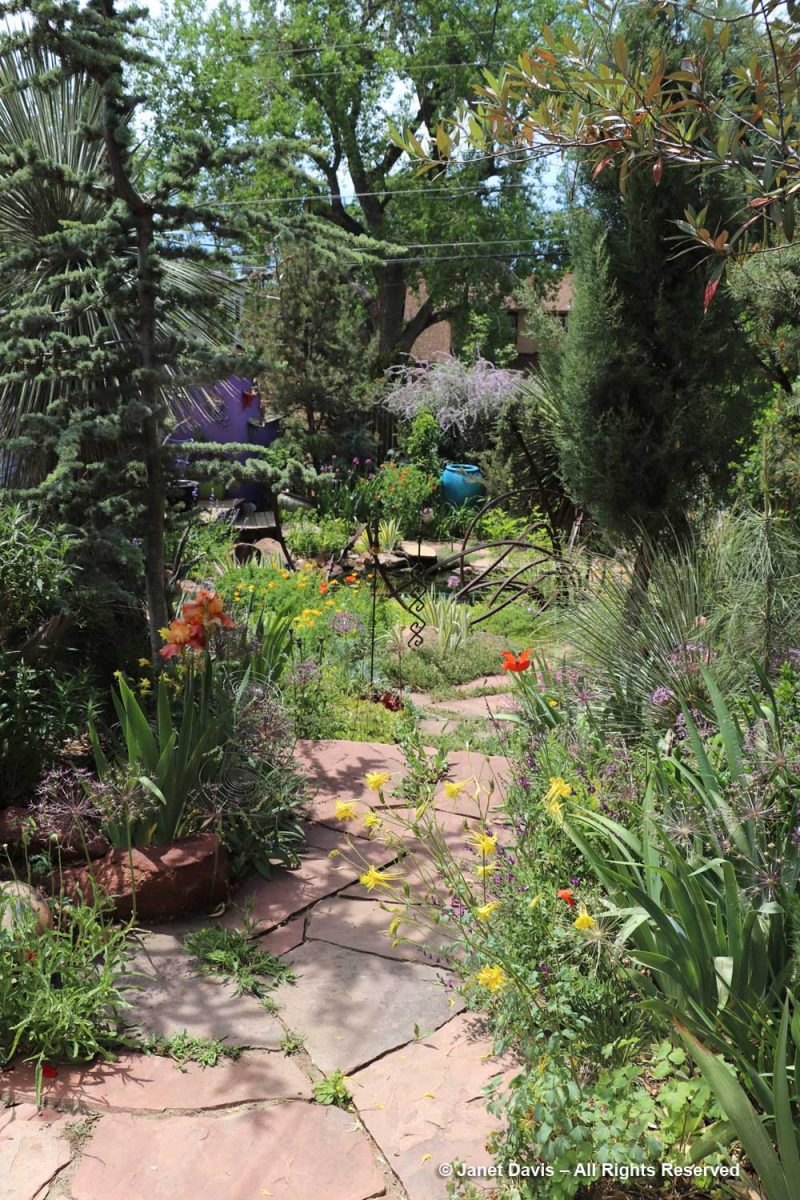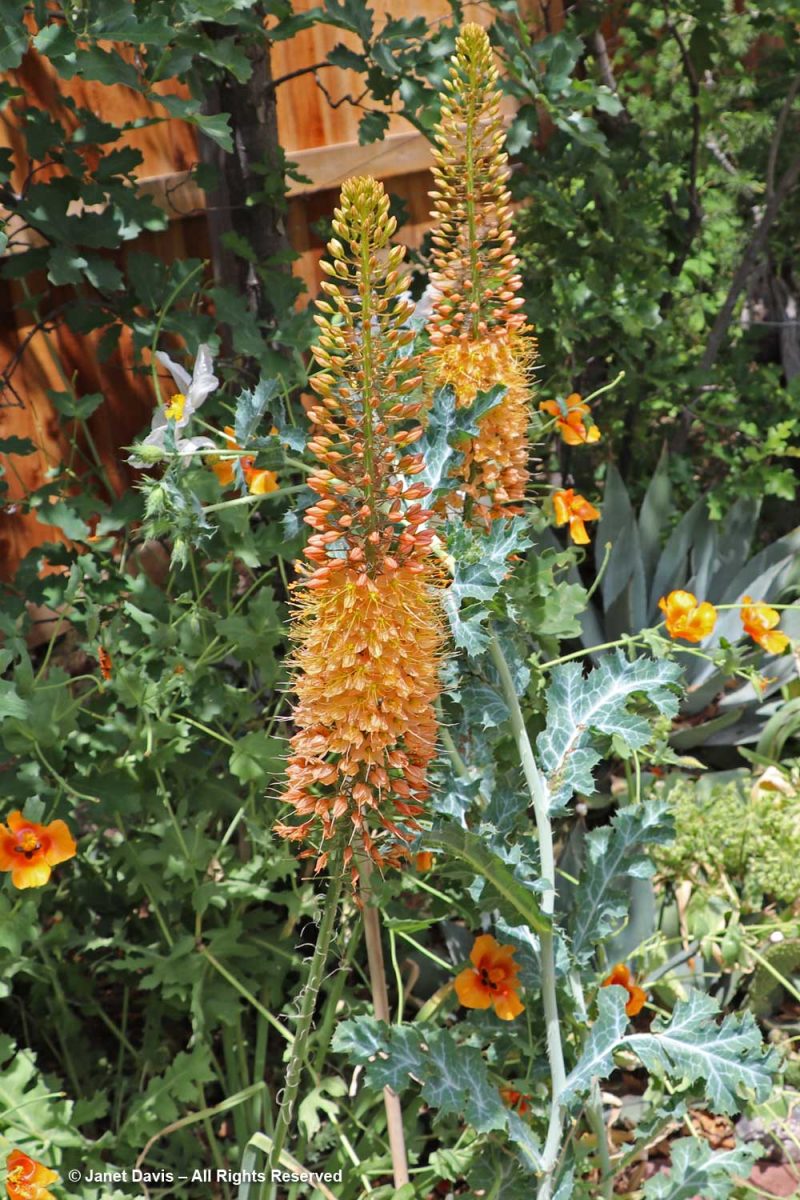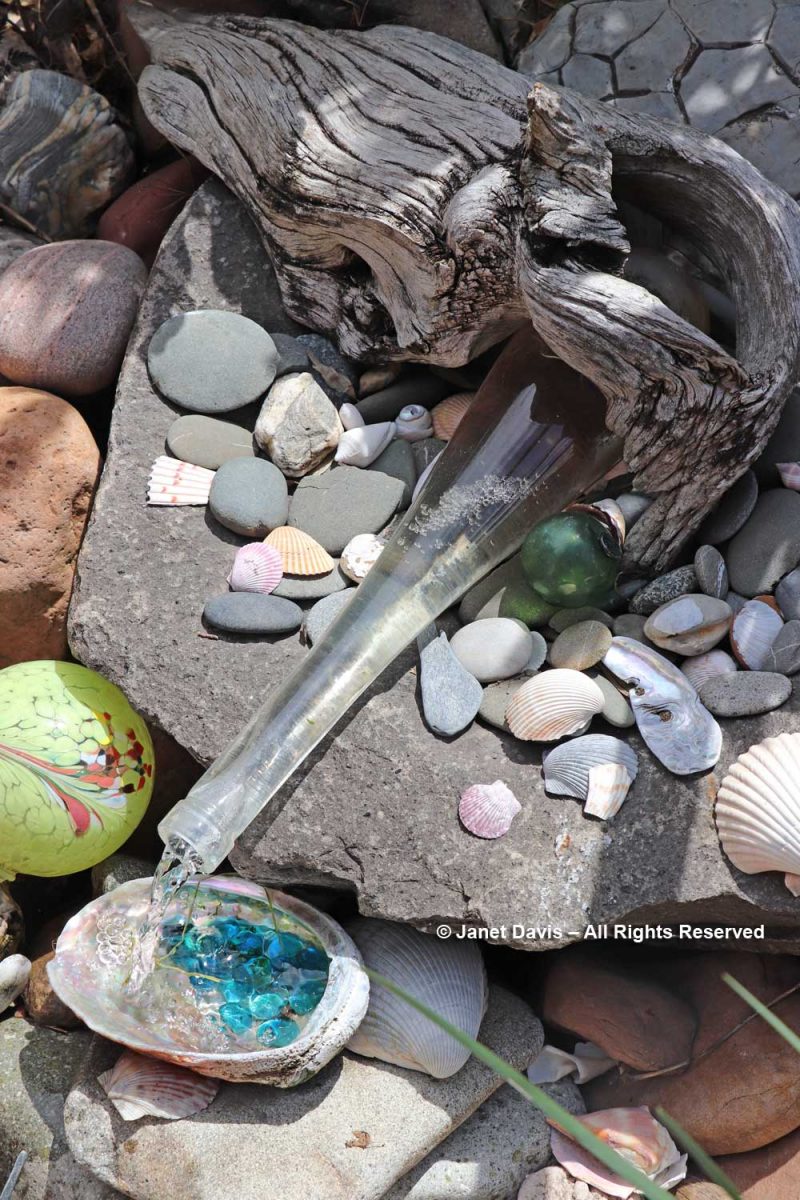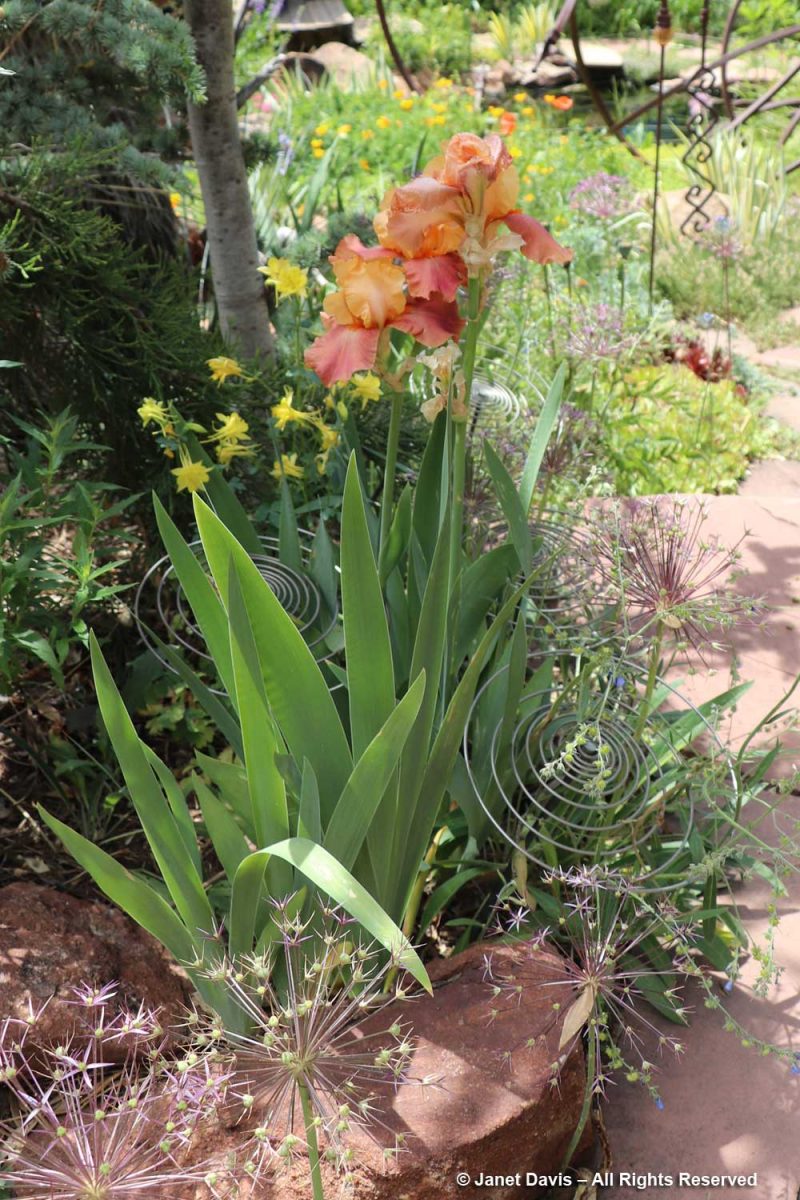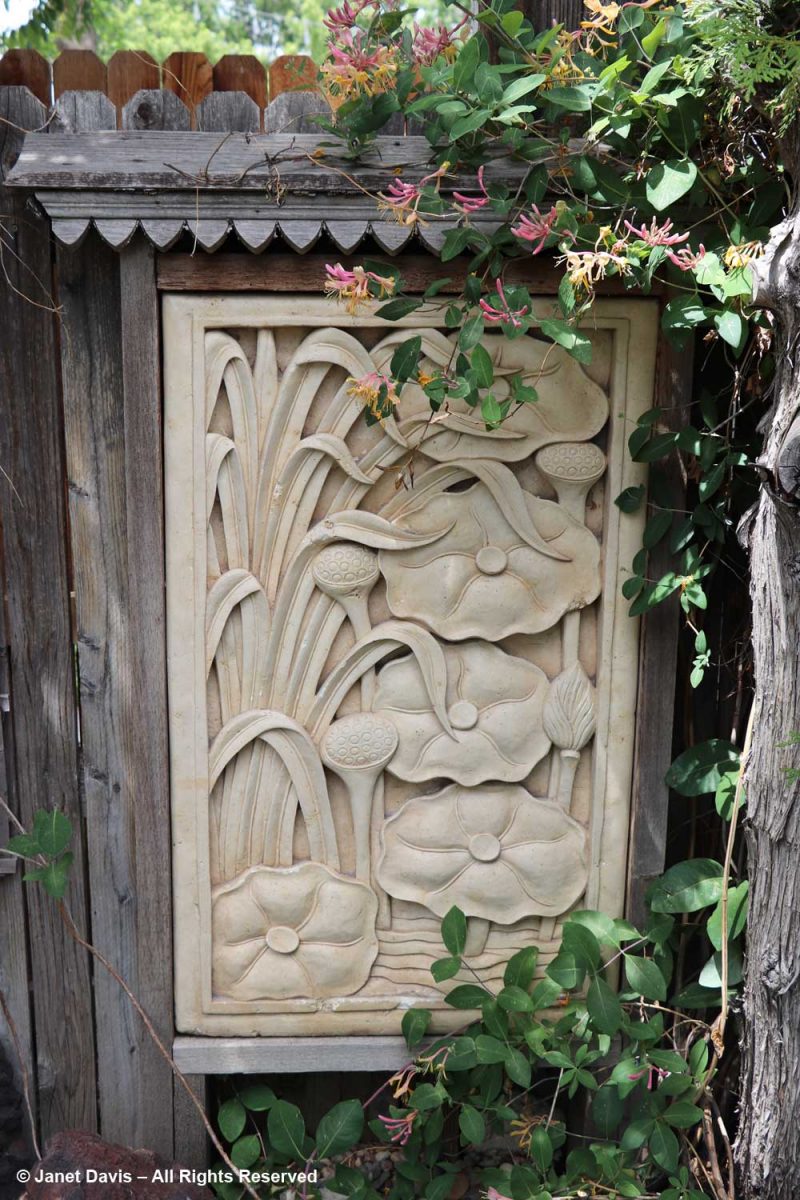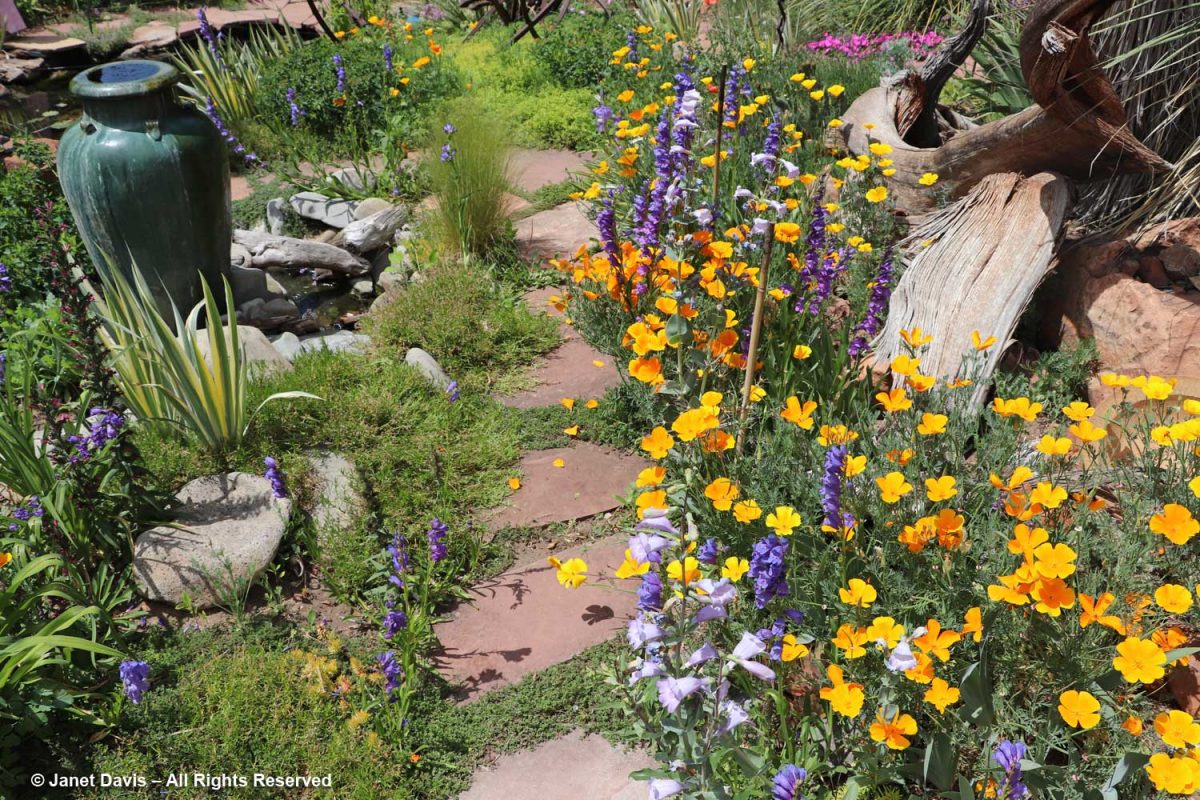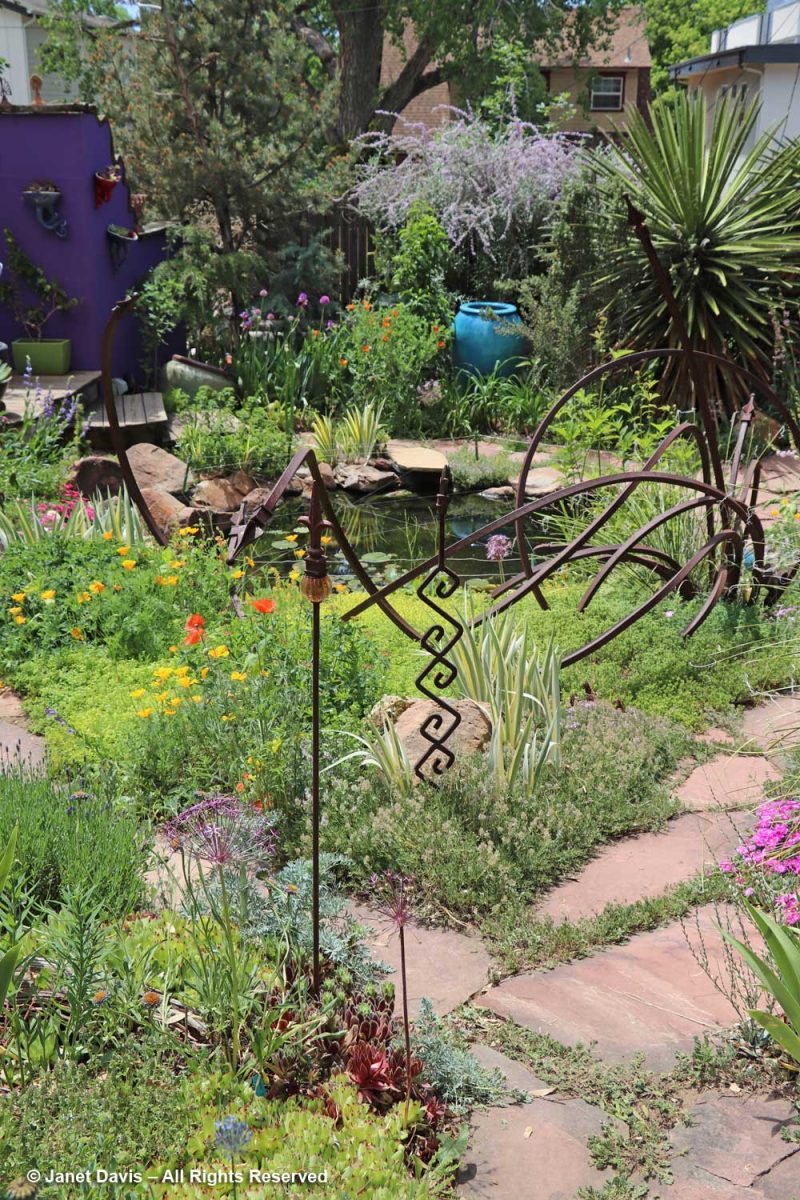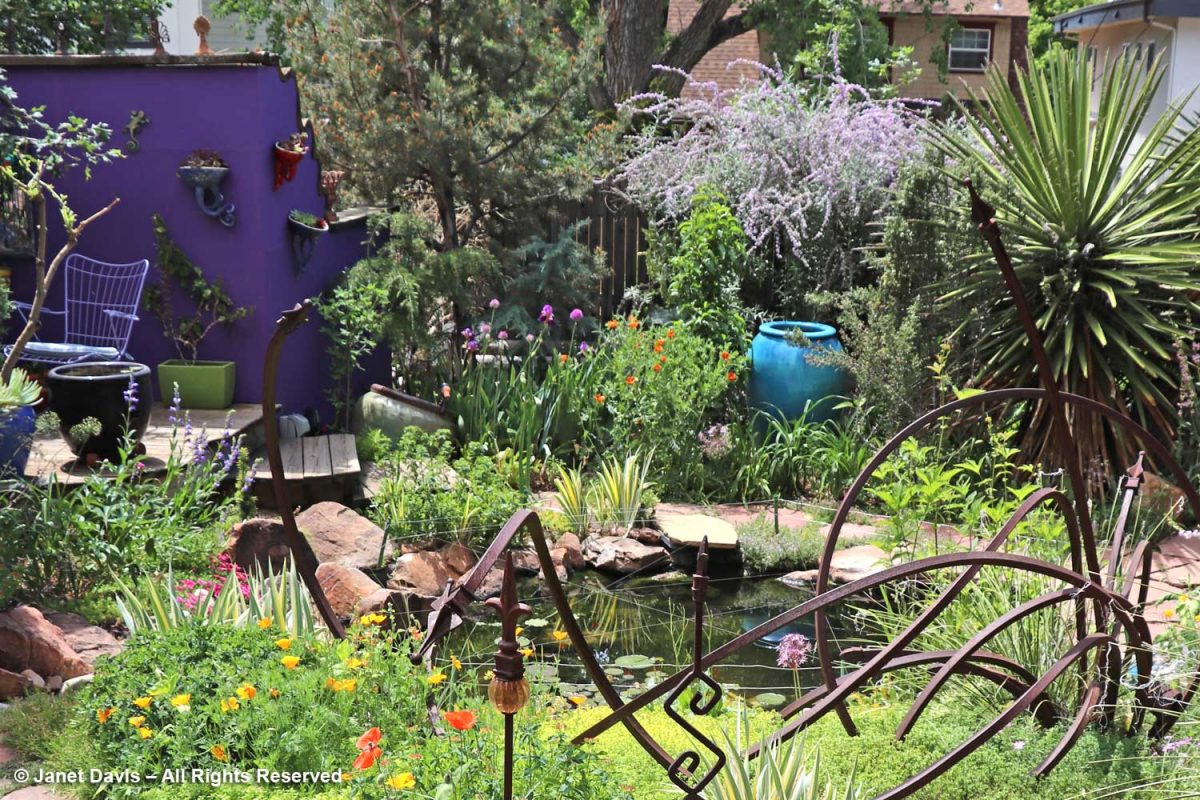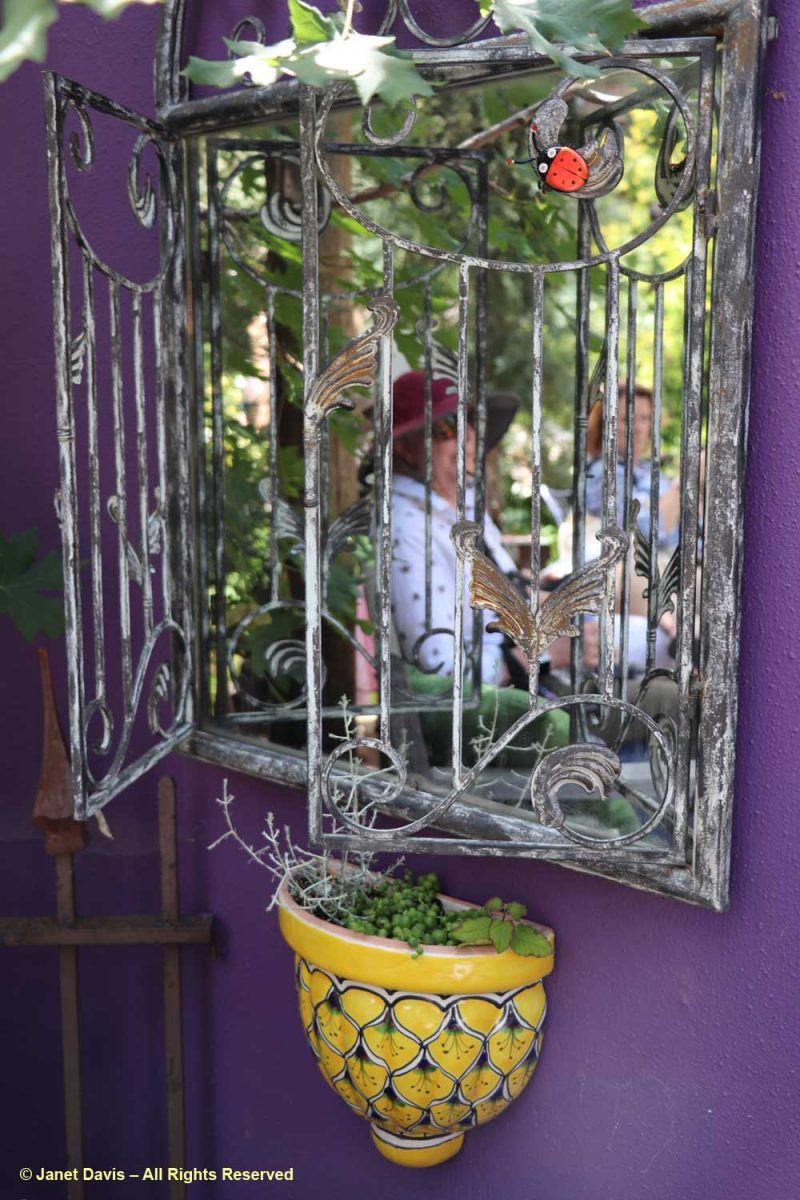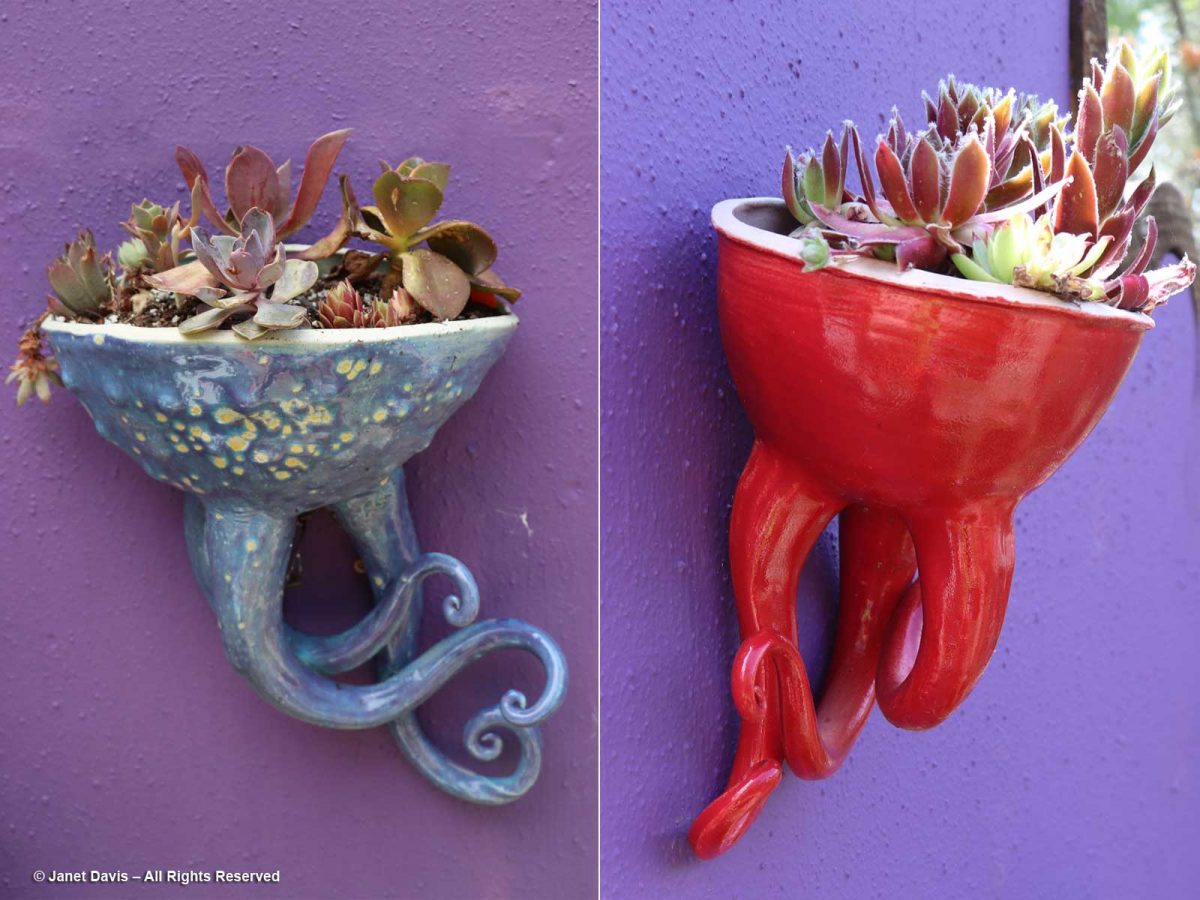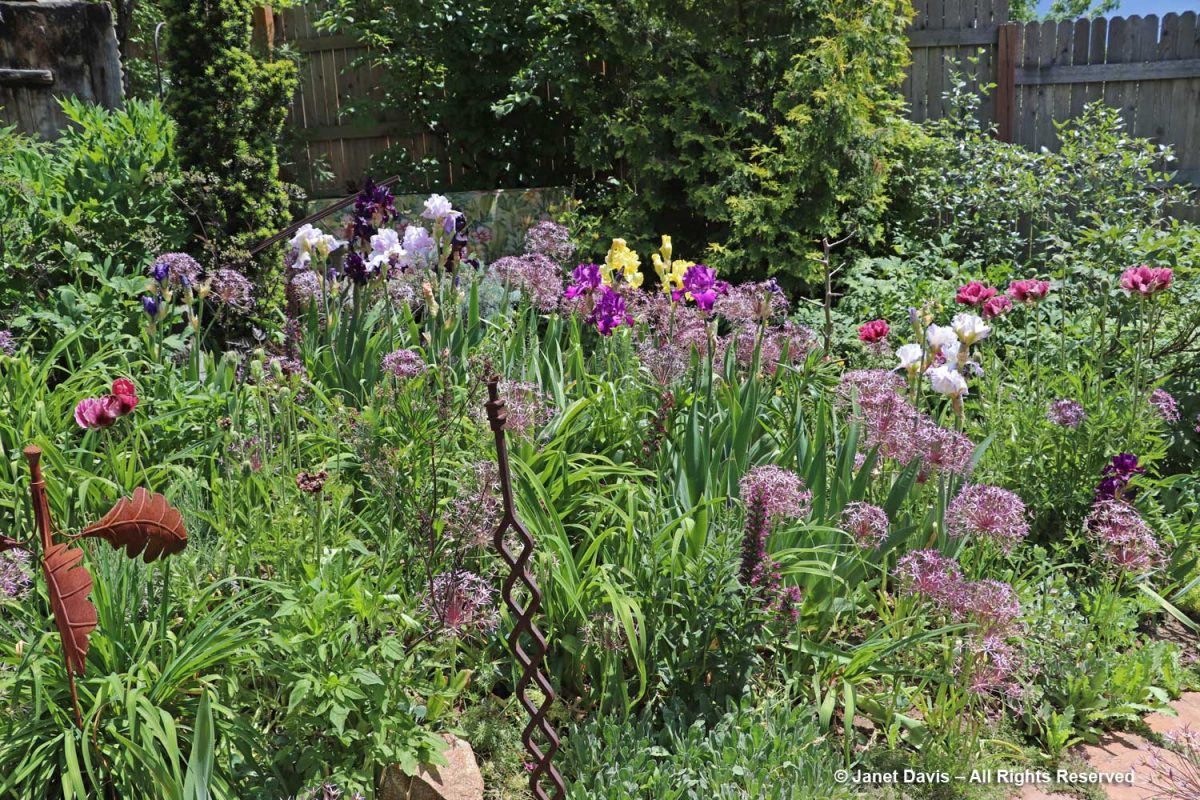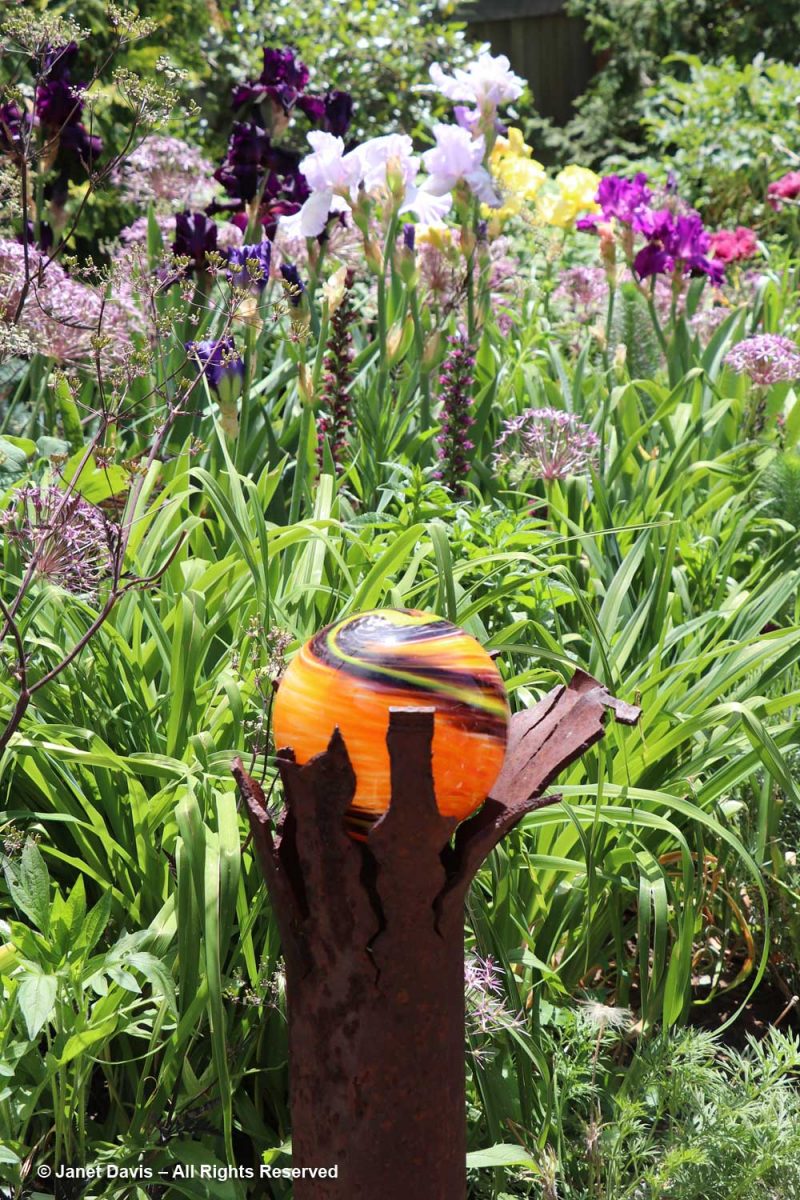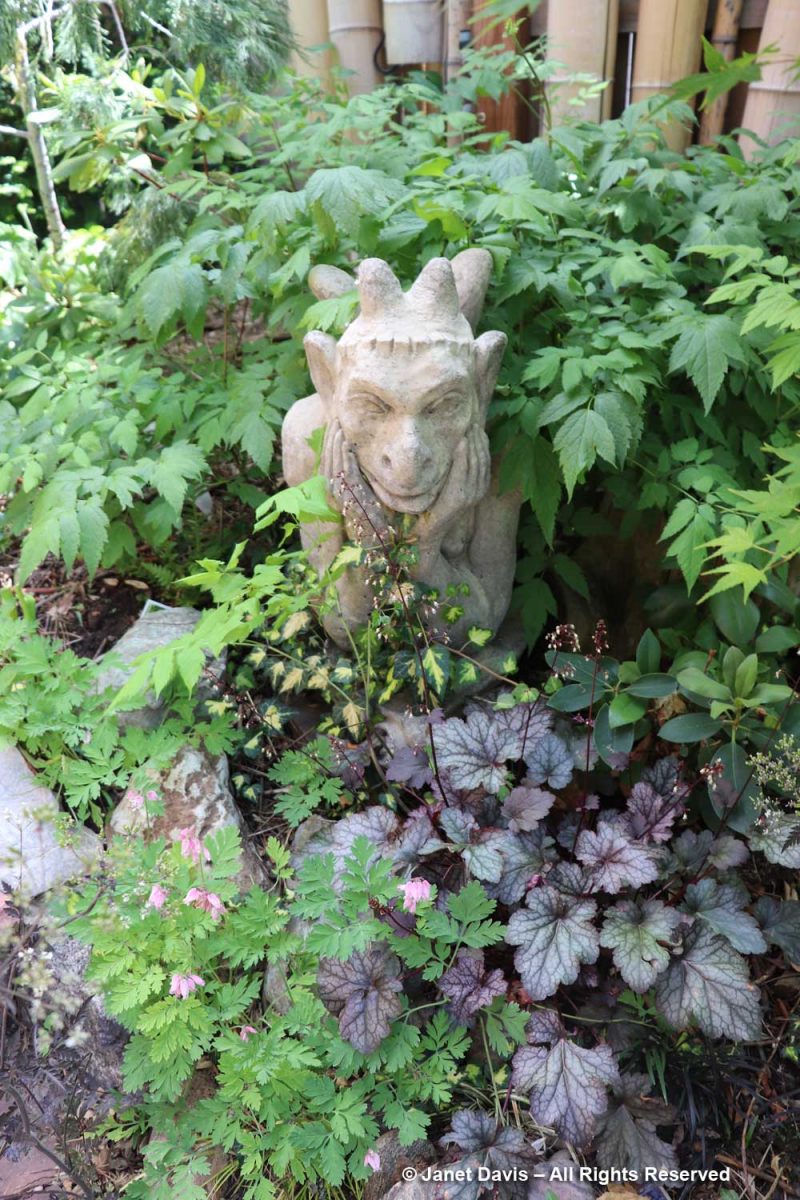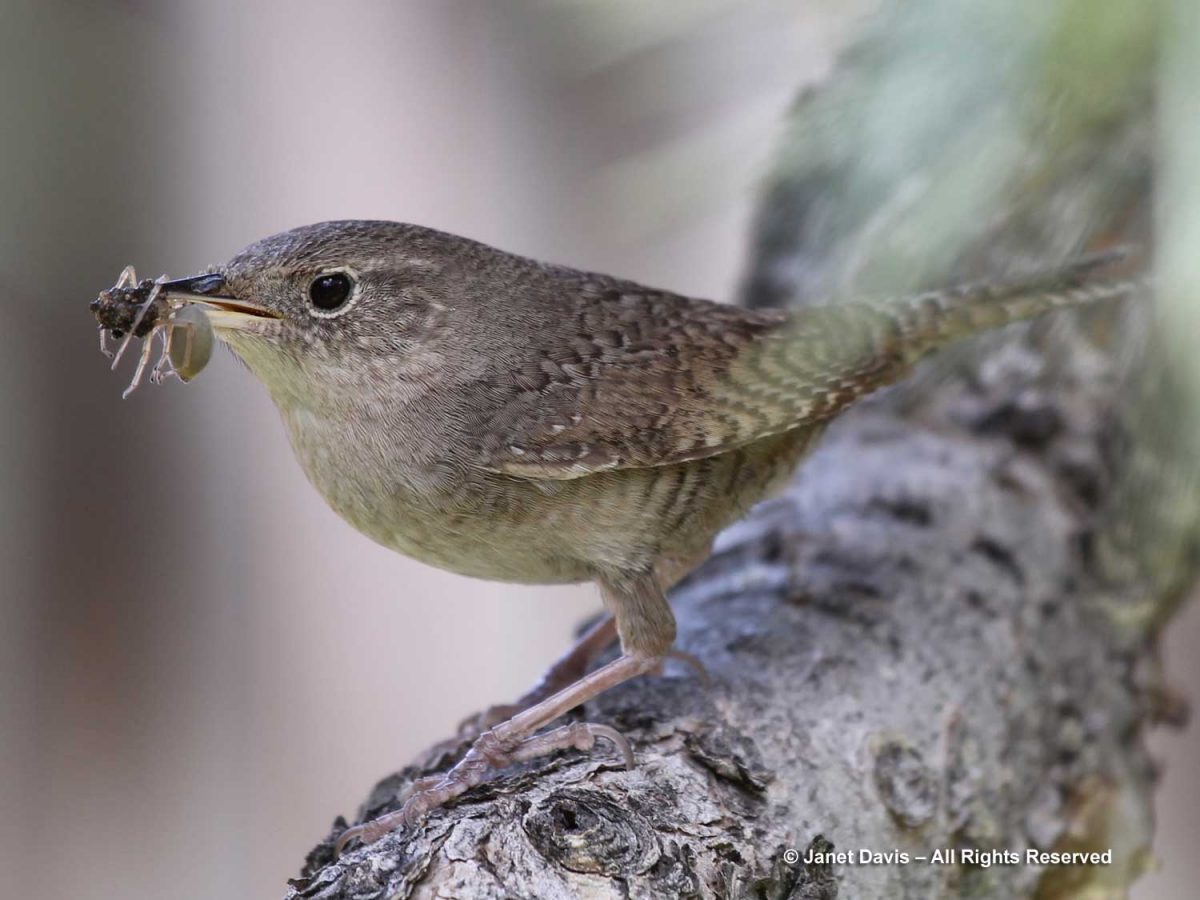Late spring… early summer… it’s flight time for the ‘cranesbills’ – all those lovely perennial geraniums that add that soft, billowy, romantic effect to perennial borders. Over the years, I’ve collected a series of combinations featuring many of these valuable perennials. Perhaps you might find some inspiration in those that follow – the bees will certainly appreciate it!
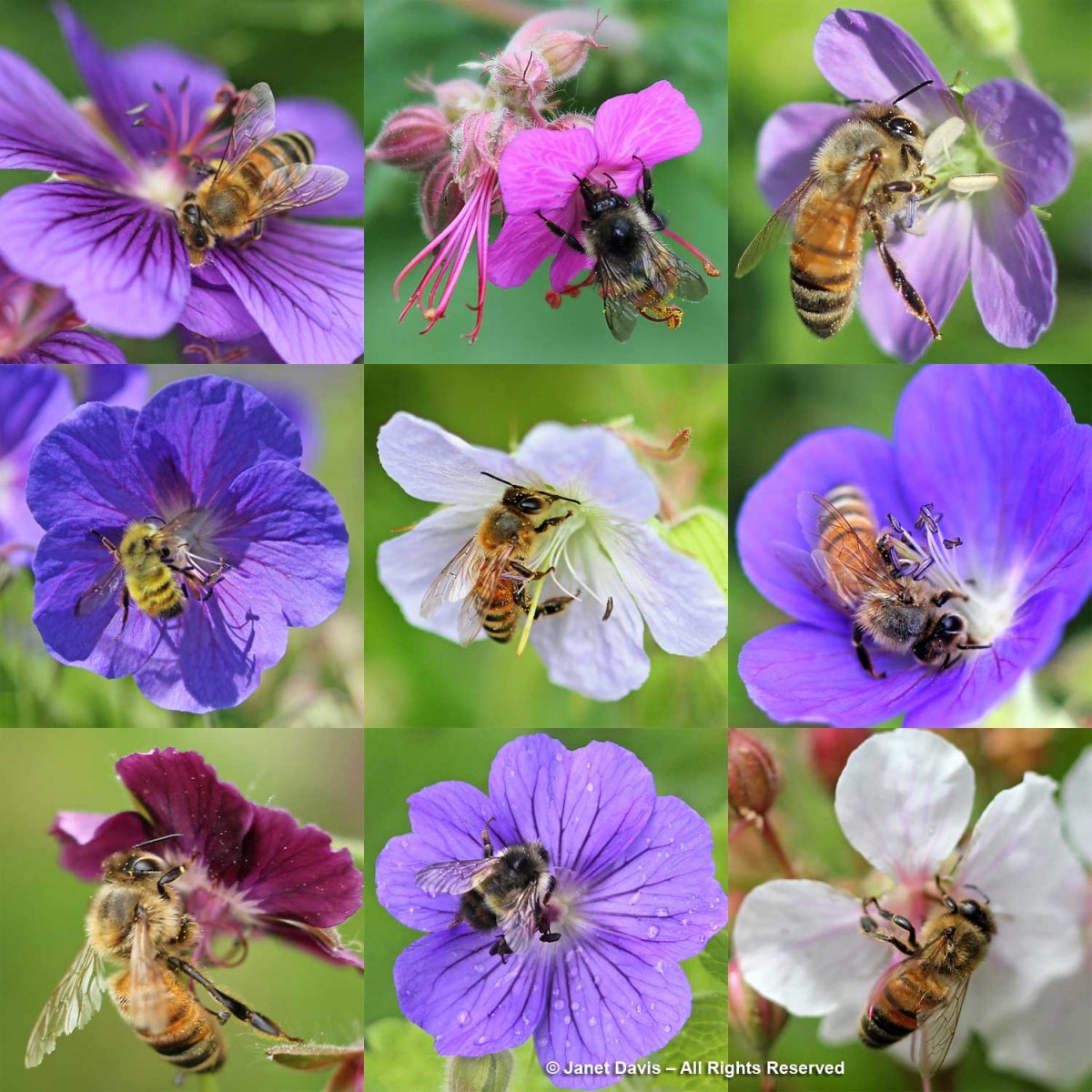
Our North American native spotted or wild geranium (Geranium maculatum) gets its name because of the spots on its leaves. Here it is with native golden Alexanders (Zizia aurea) at the Toronto Botanical Garden.
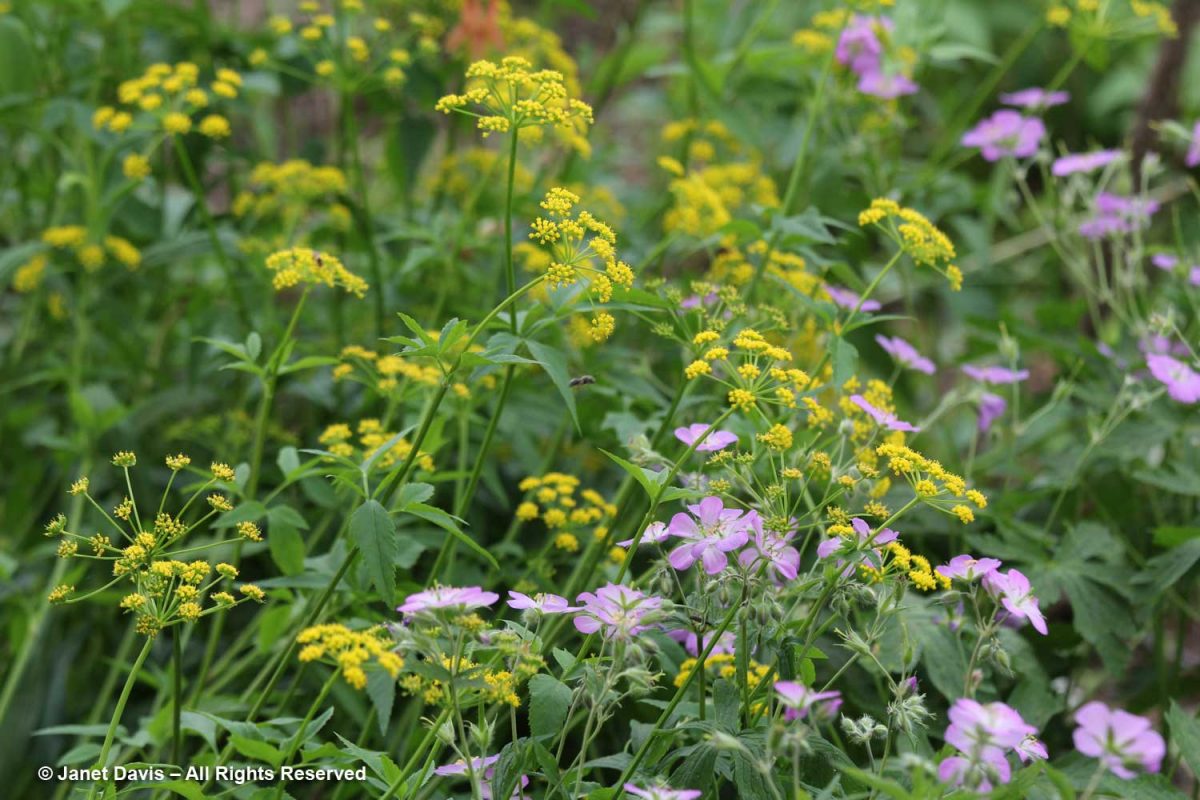
Here is G. maculatum with Welsh poppy (Papaver cambricum) at VanDusen Botanical Garden in Vancouver.
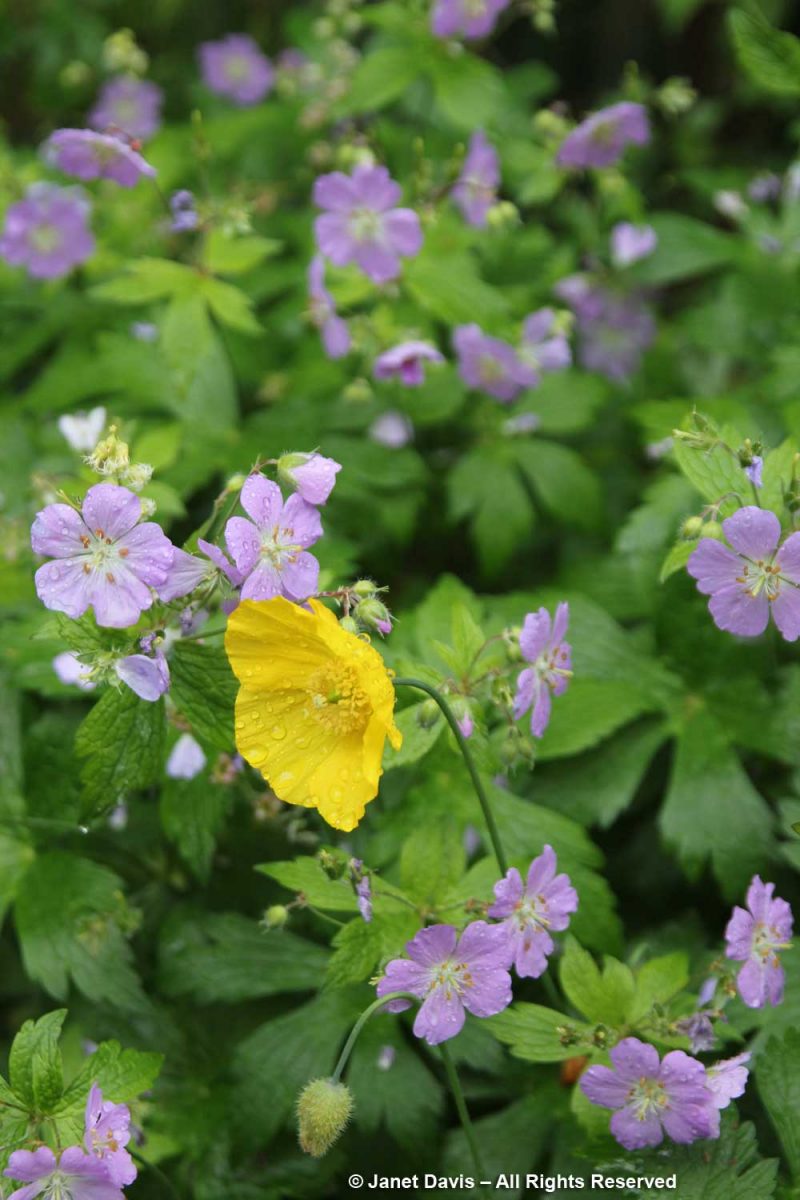
In my own garden, below, I grew Geranium maculatum under Solomon’s seal (Polygonatum biflorum). I must check to see if it’s still there, or if it’s been swamped by the aggressive Solomon’s seals.
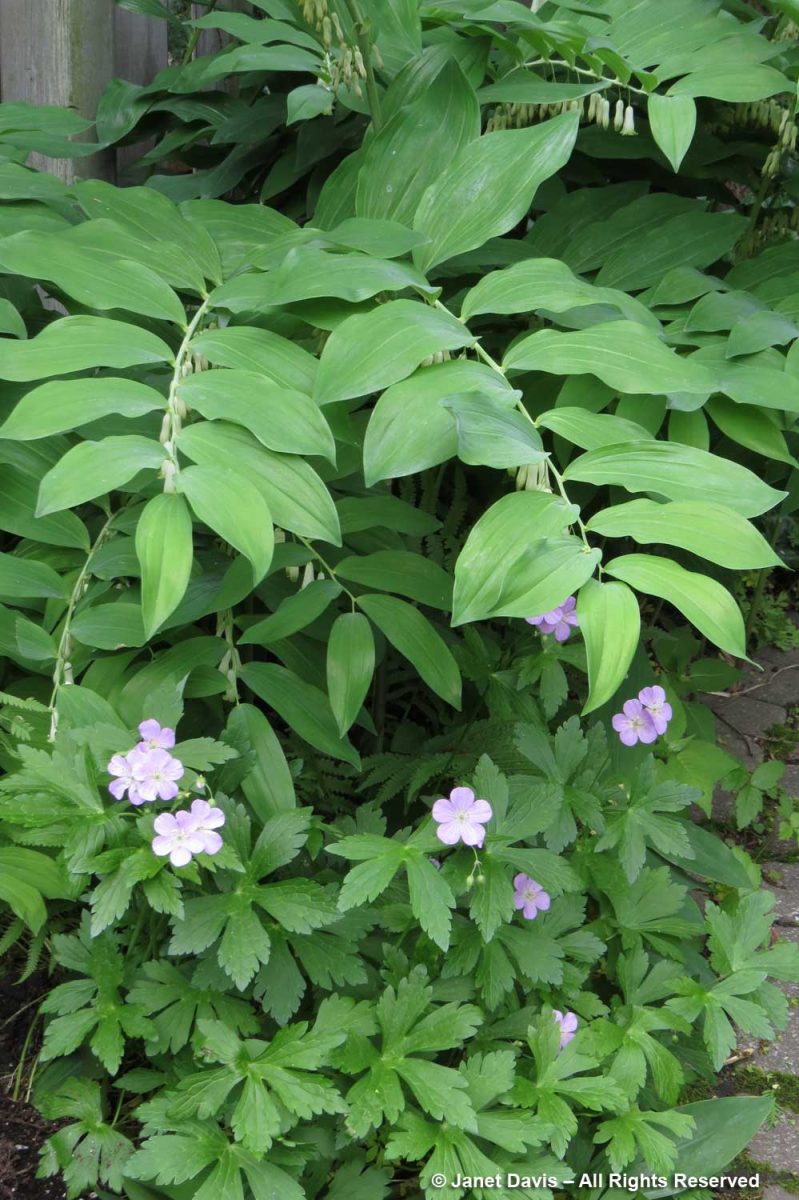
G. maculatum looked lovely amidst hostas at Chanticleer Garden outside Philadelphia.
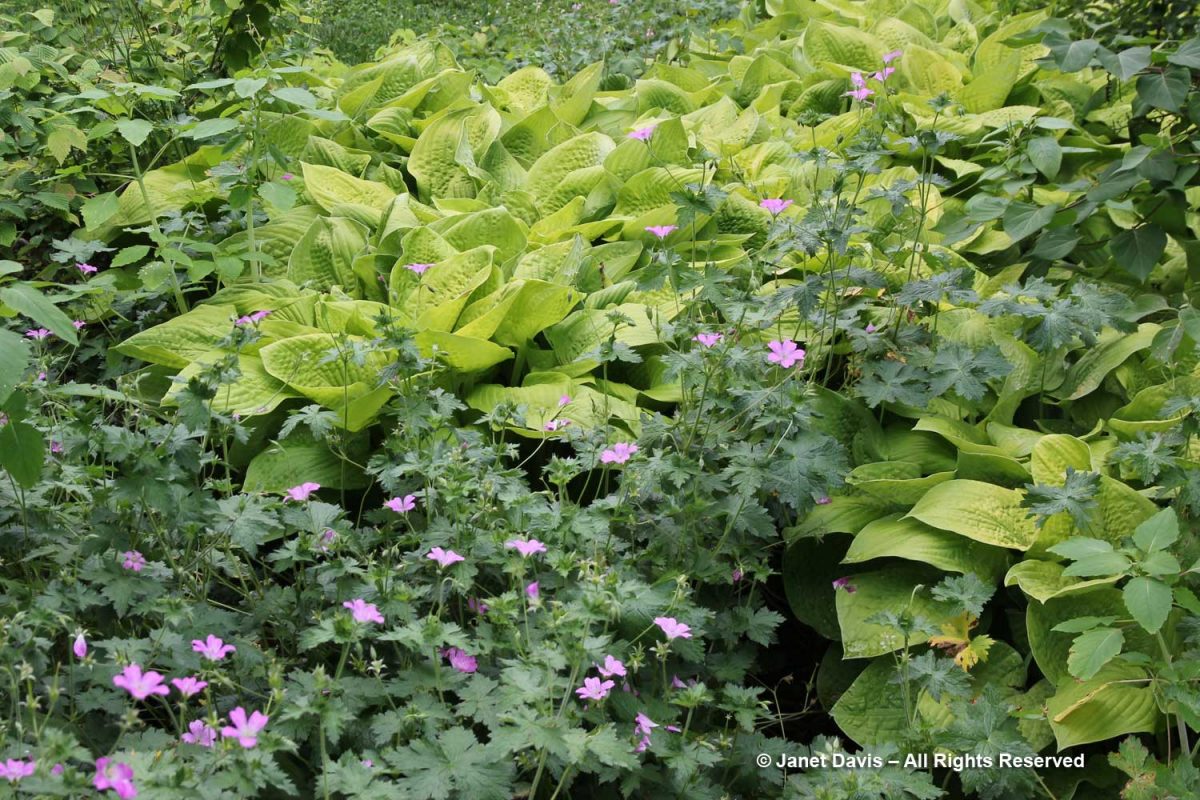
I just saw this combination at the Toronto Botanical Garden a few weeks ago: Spanish bluebells (Hyacinthoides hispanica ‘Excelsior’) with bigroot geranium (G. macrorrhizum ‘Czakor’).
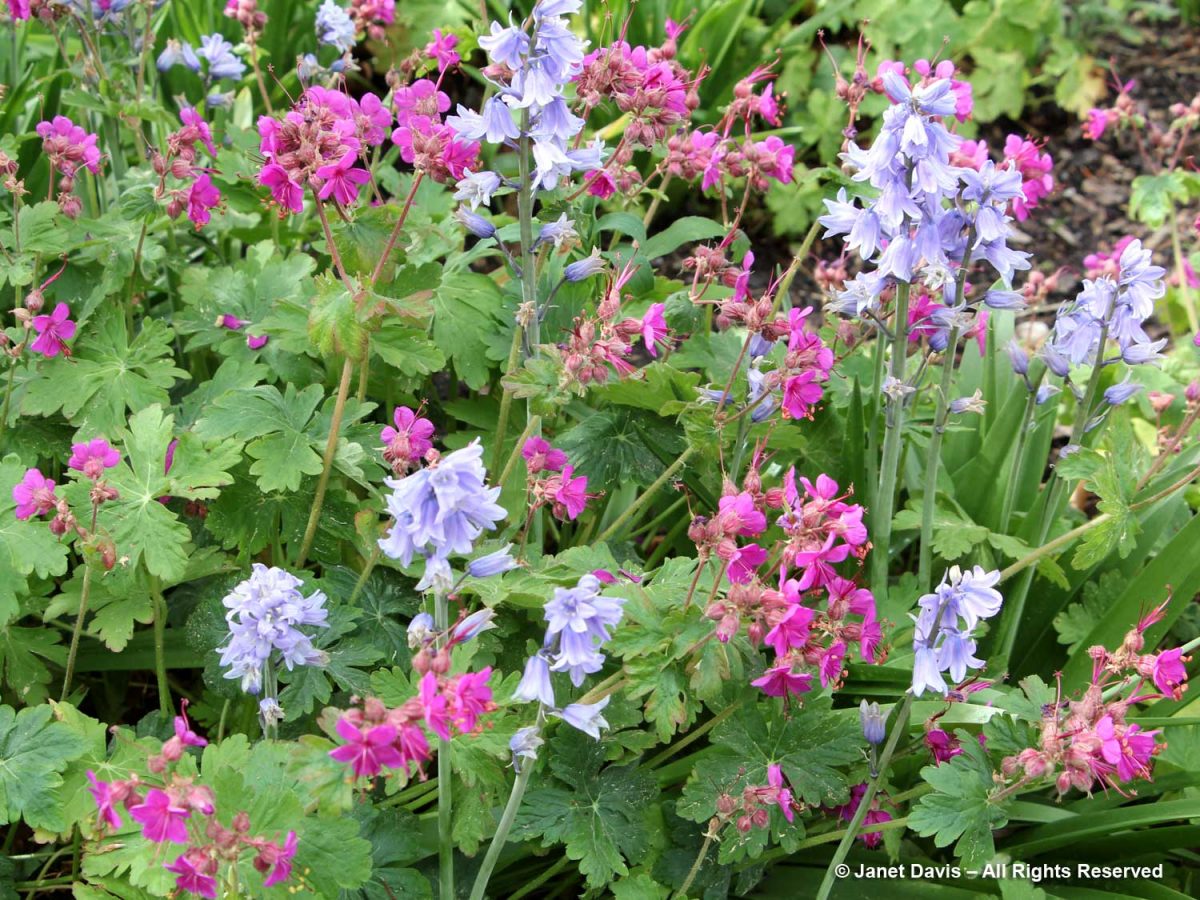
Also at the TBG, here is the variegated form of bigroot geranium (G. macrorrhizum ‘Variegatum’) with catmint (Nepeta racemosa ‘Walker’s Low’).
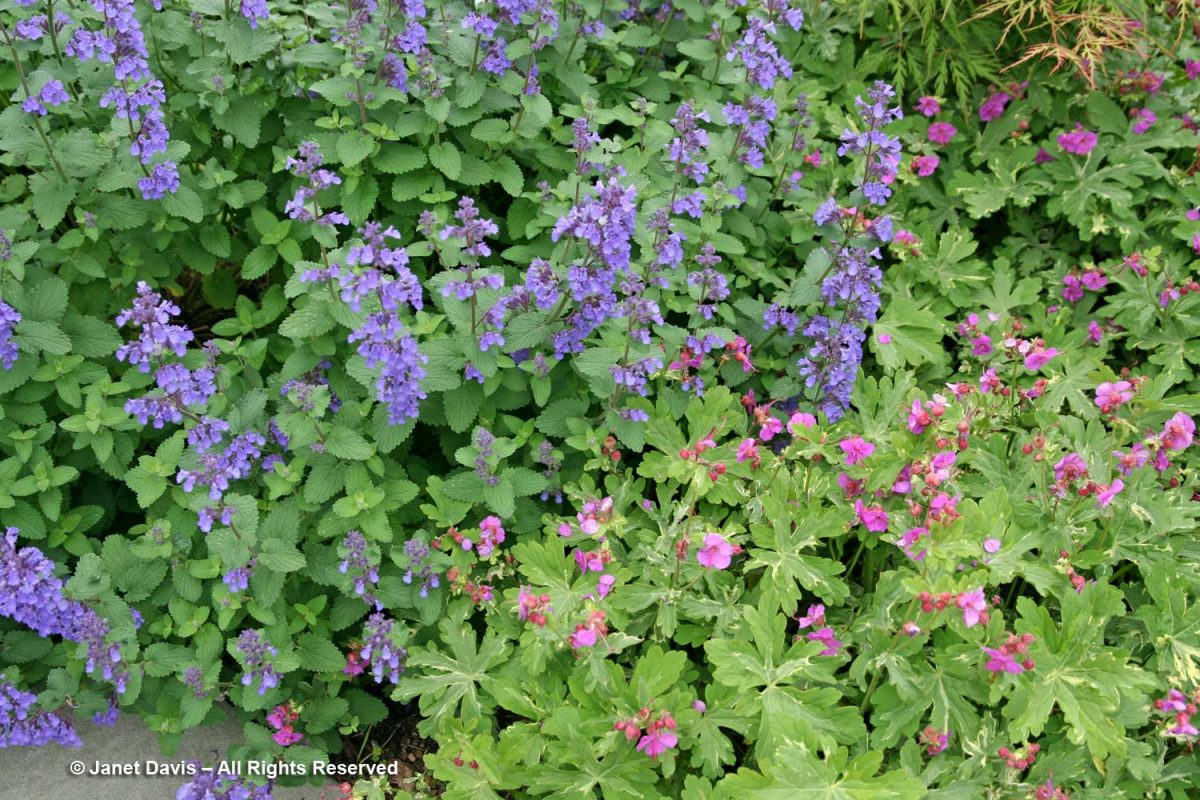
Bloody cranesbill (Geranium sanguineum) is a popular, early-flowering cranesbill with magenta blossoms. Here it is with Phlox carolina at the Toronto Botanical Garden.
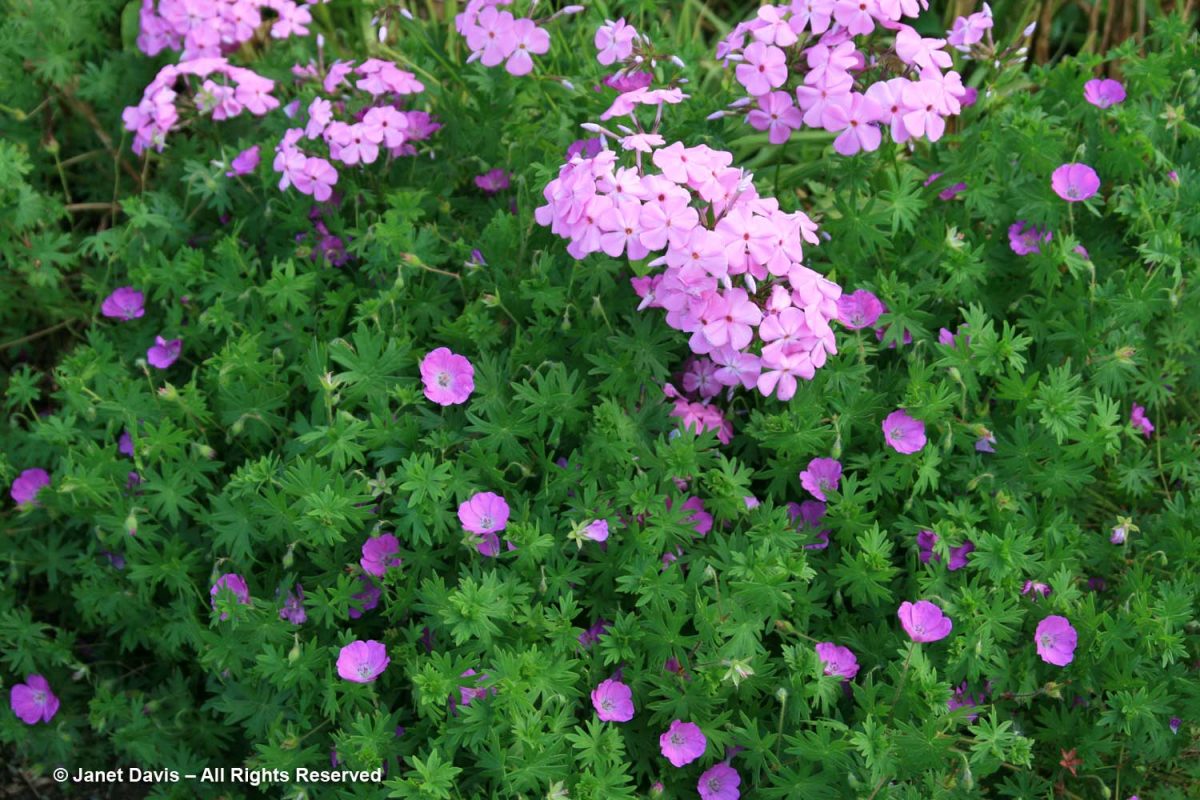
It makes an attractive, front-of-border mound, below, along with lady’s mantle (Alchemilla mollis).
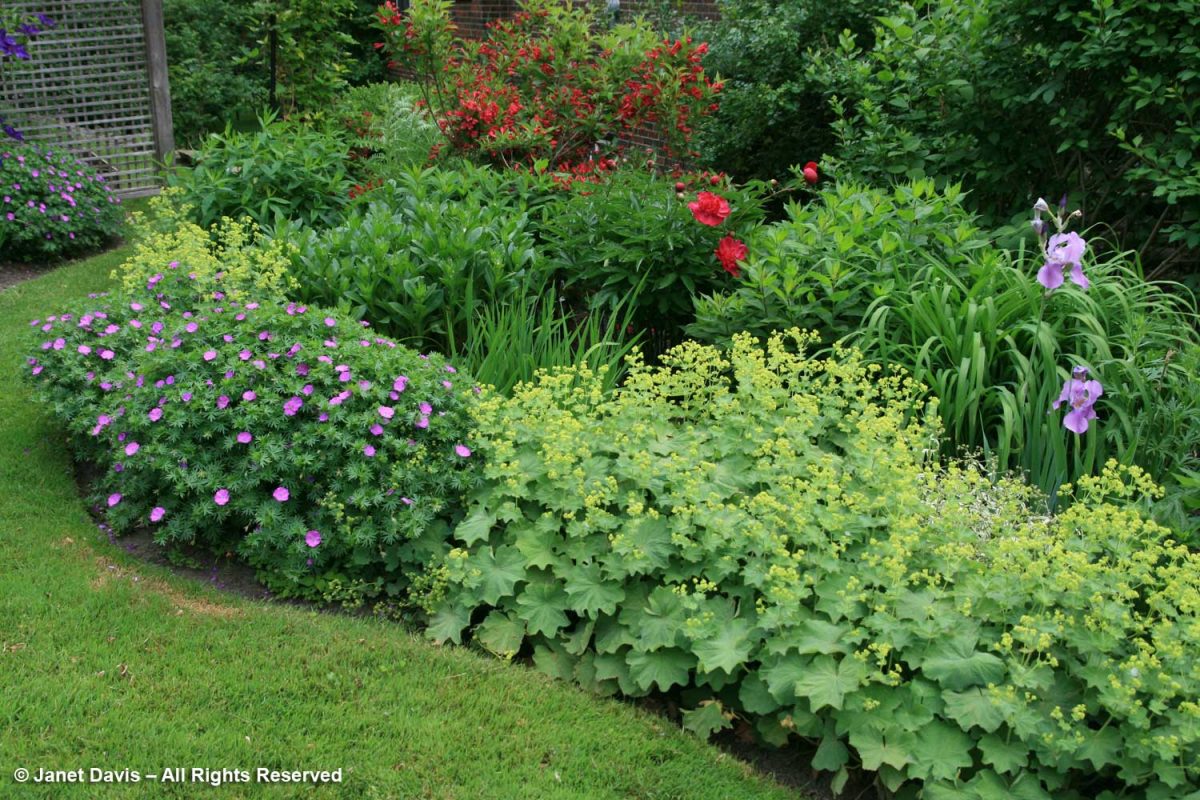
This was an interesting monochromatic combination, of bloody cranesbill with Dianthus ‘Oakington Hybrid’.
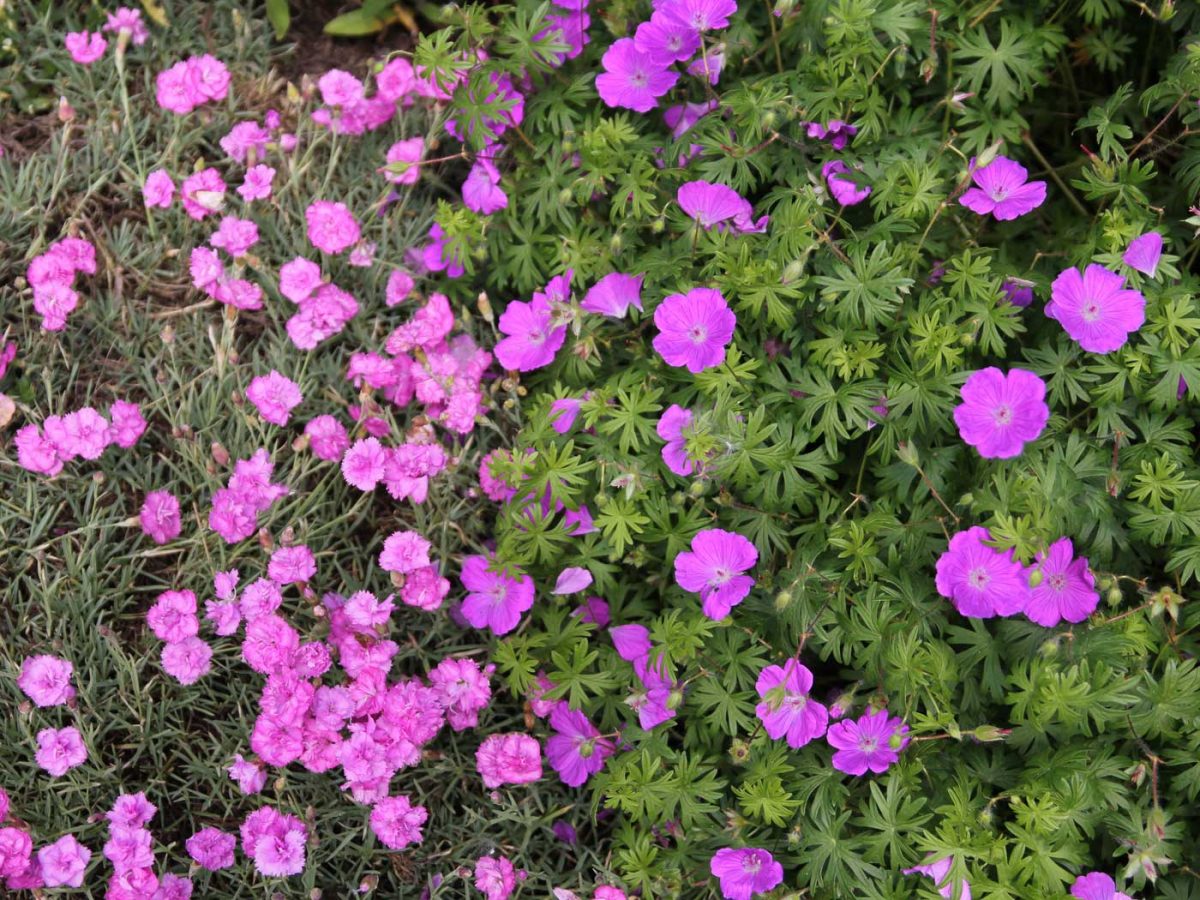
I thought this was a pretty June border on a garden tour: bloody cranesbill with Siberian iris and bearded iris.
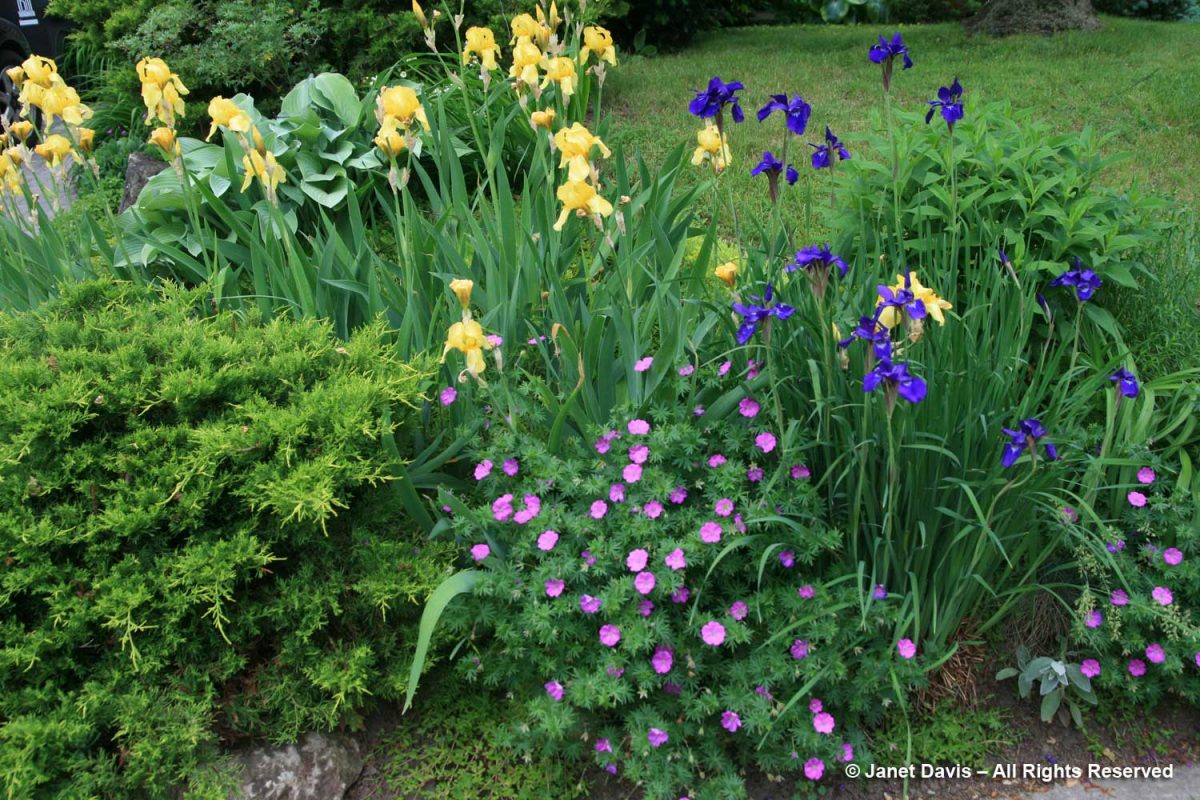
I believe the cranesbill below is Geranium sanguineum ‘Max Frei’, partnering with Veronica ‘Glory’ at the Toronto Botanical Garden.
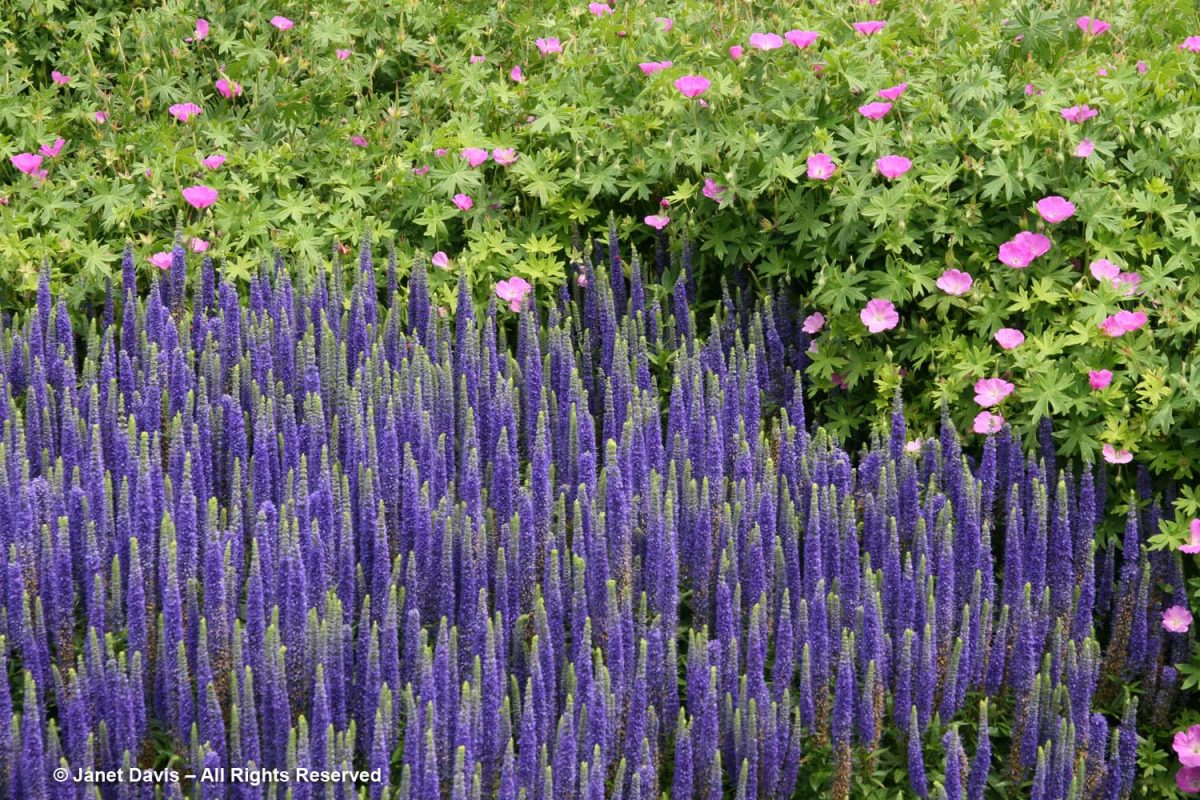
There’s a pale-pink form of bloody cranesbill, G. sanguineum var. striatum (formerly G. lancastriense), that makes a very pretty partner to late forget-me-nots.
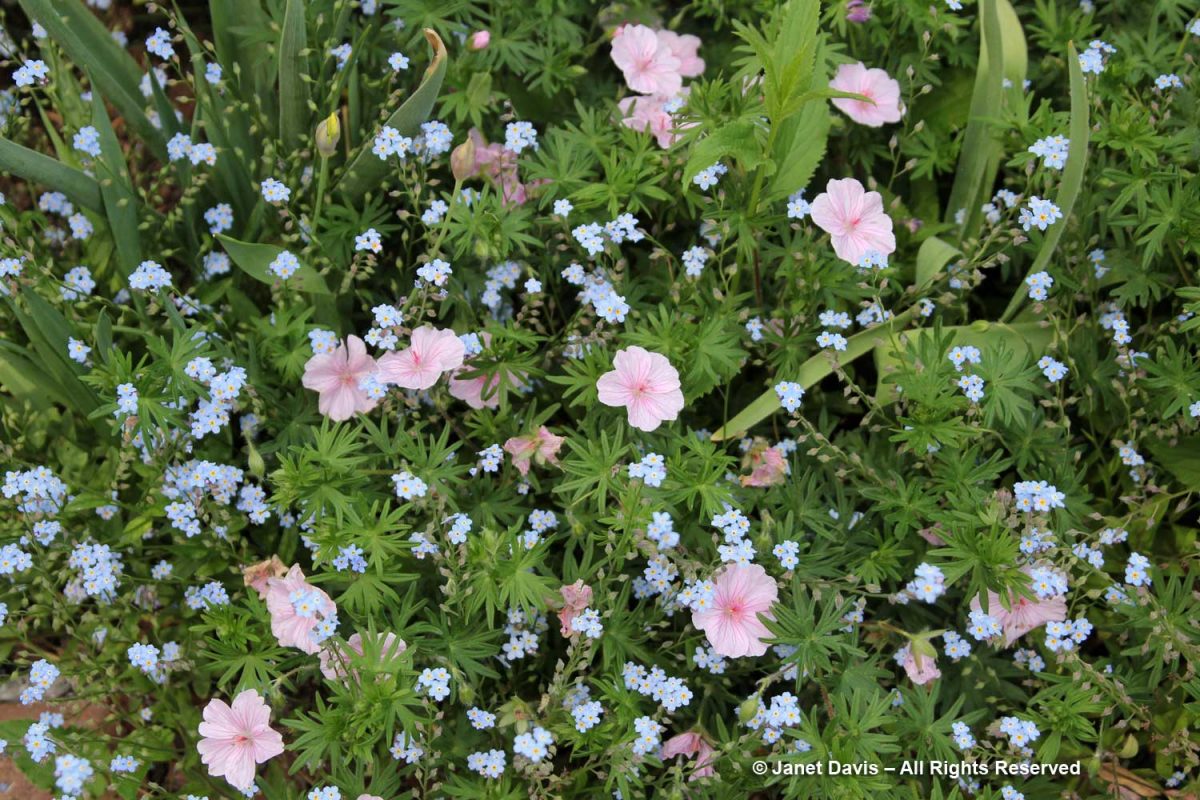
Peonies offer a vast palette of possibilities as cranesbill companions, including the spectacular Itoh Hybrid intersectional peonies (herbaceous-shrub crosses). Below is ‘Cora Louise’ with Geranium’ Brookside at the Toronto Botanical Garden.
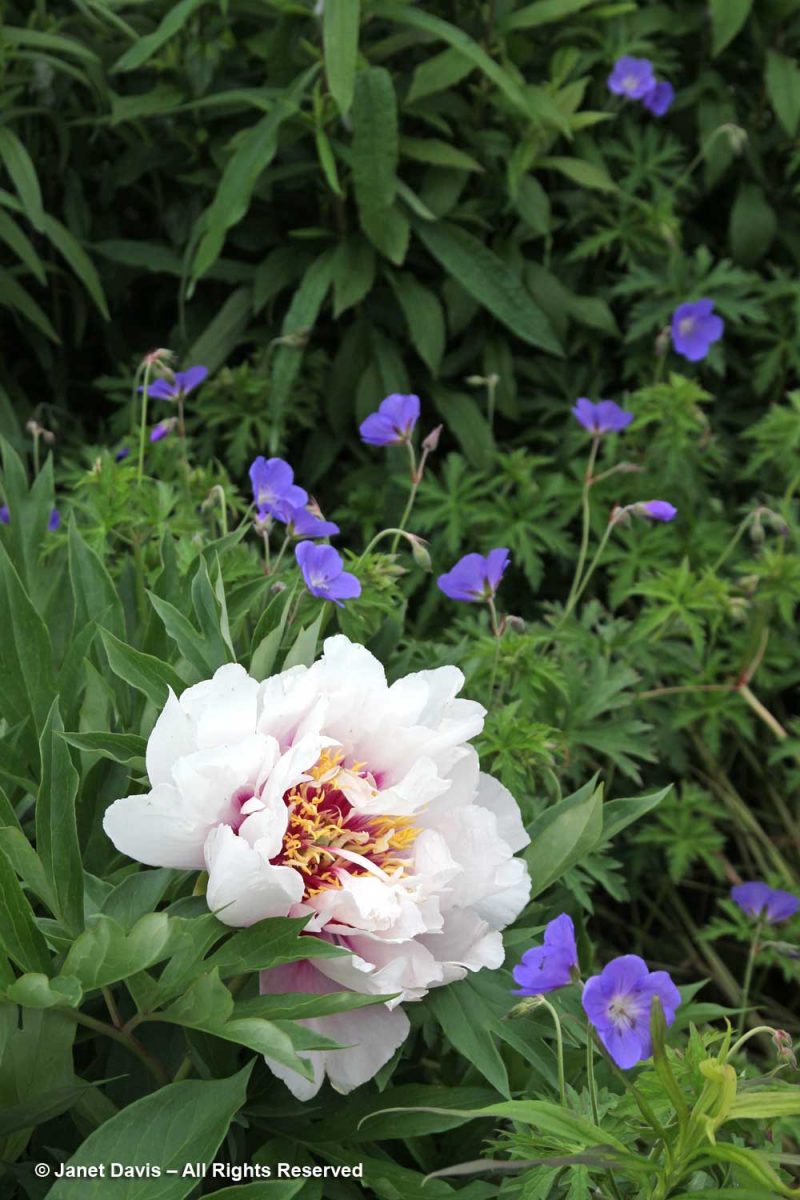
Here’s lovely ‘Brookside’ (G. clarkei x G.pratense) with Sicilian honey lily (Allium siculum)….
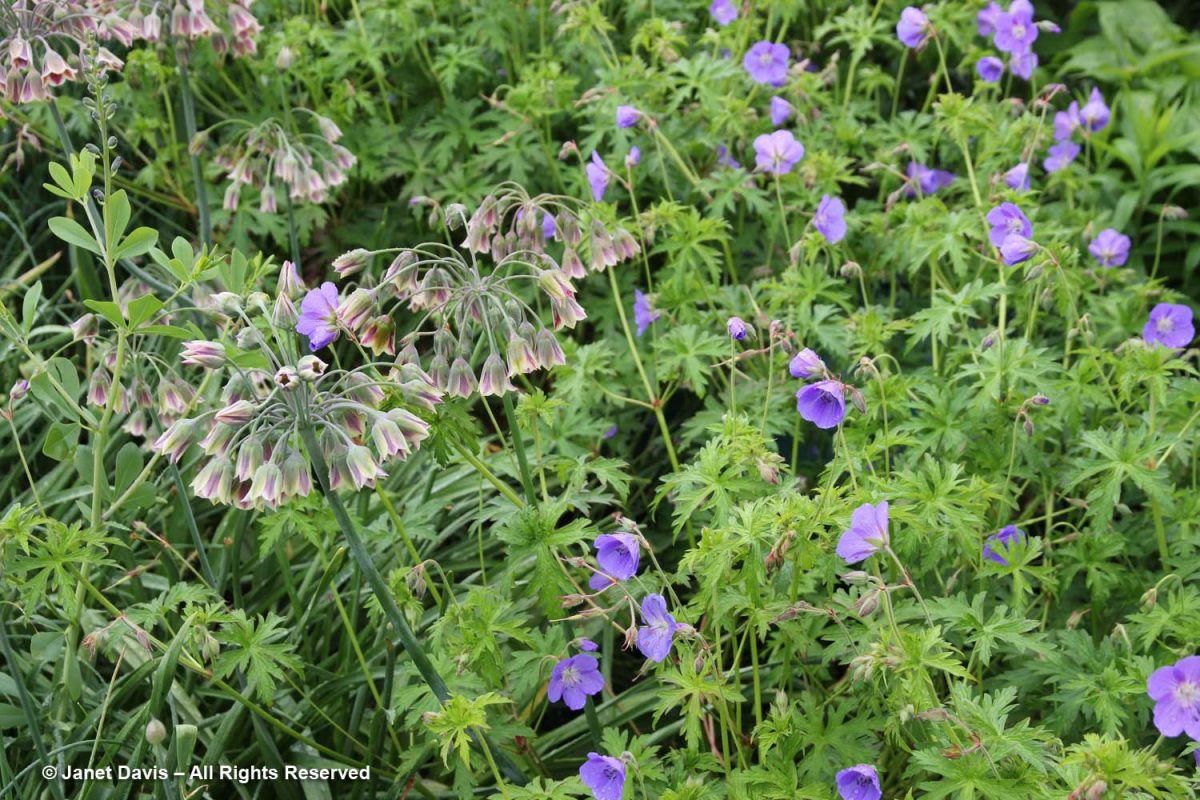
….. and with Campanula ‘Sarastro’…..
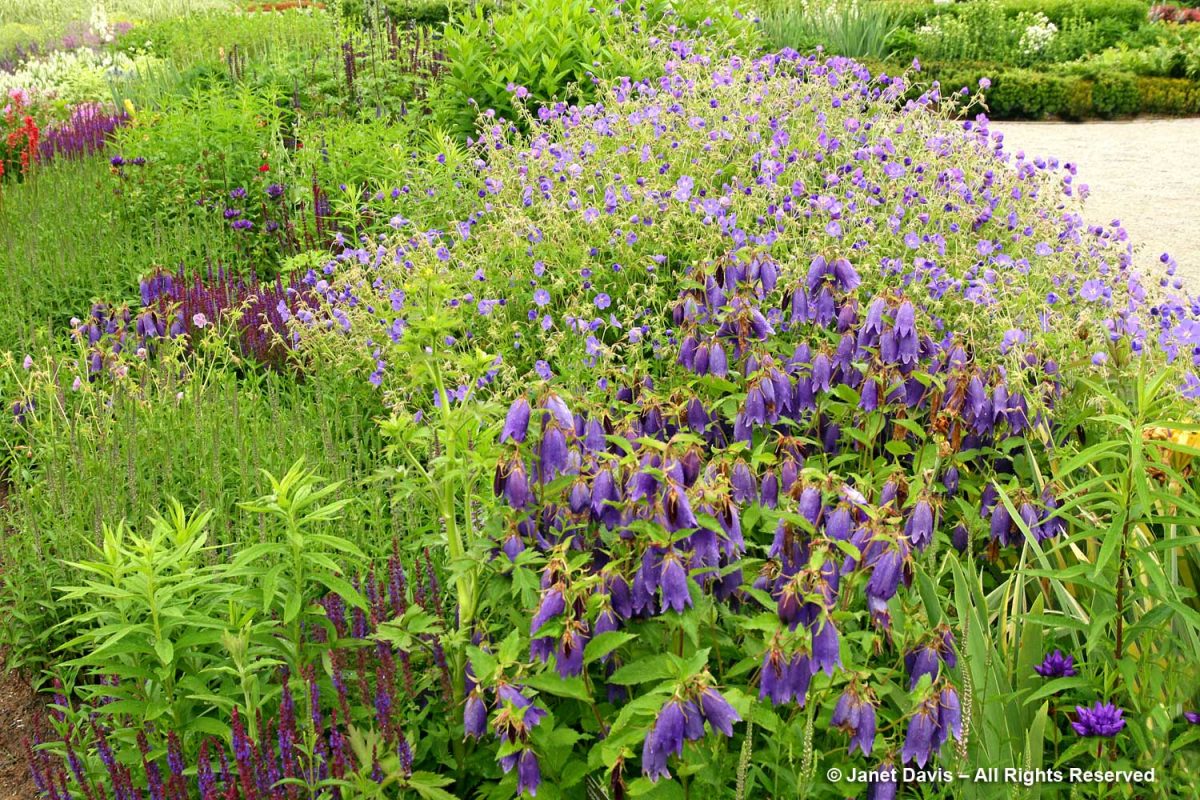
….. and Veronica longifolia ‘Eveline’ and Achillea tomentosa ‘Moonlight’ at the Toronto Botanical Garden.
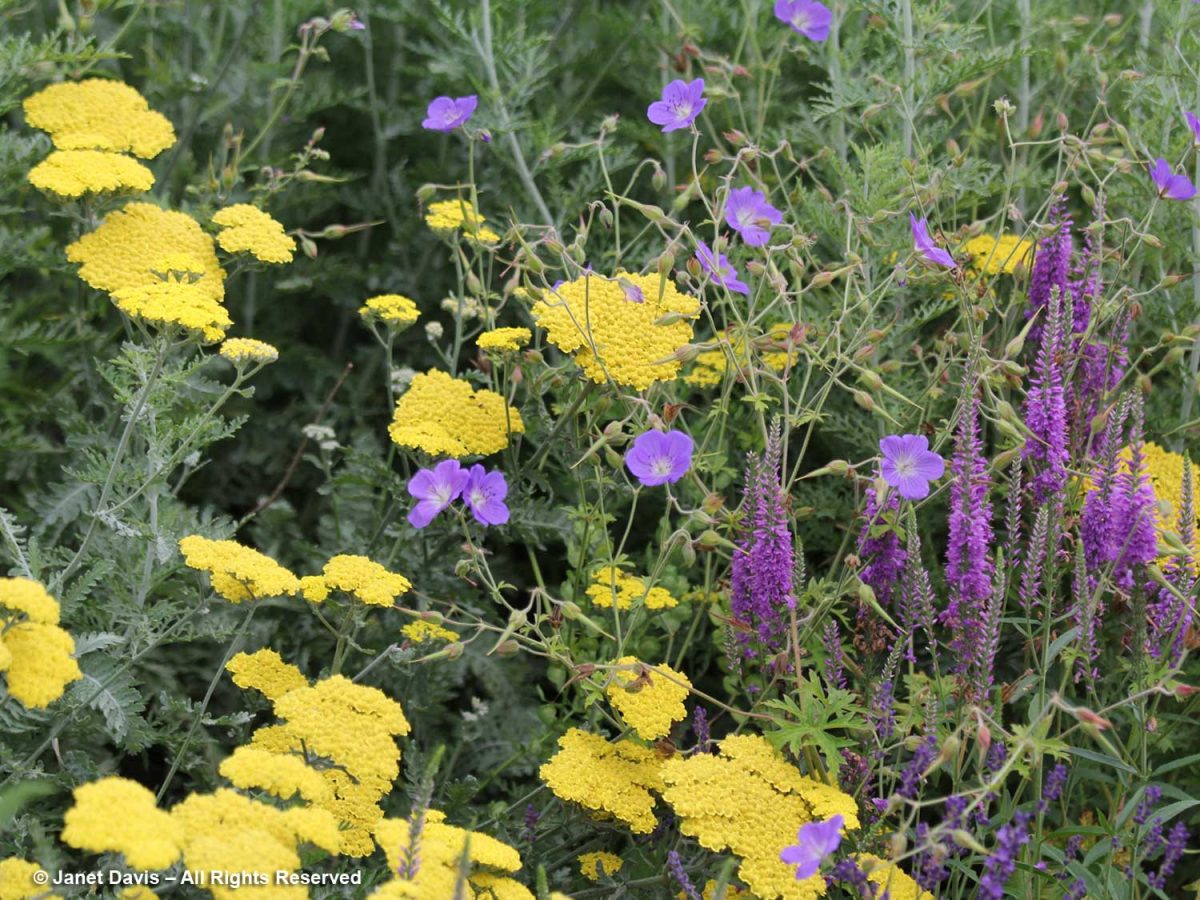
Here is ‘Brookside’ clambering around the wine-red flowers of Knautia macedonica, also at the TBG.
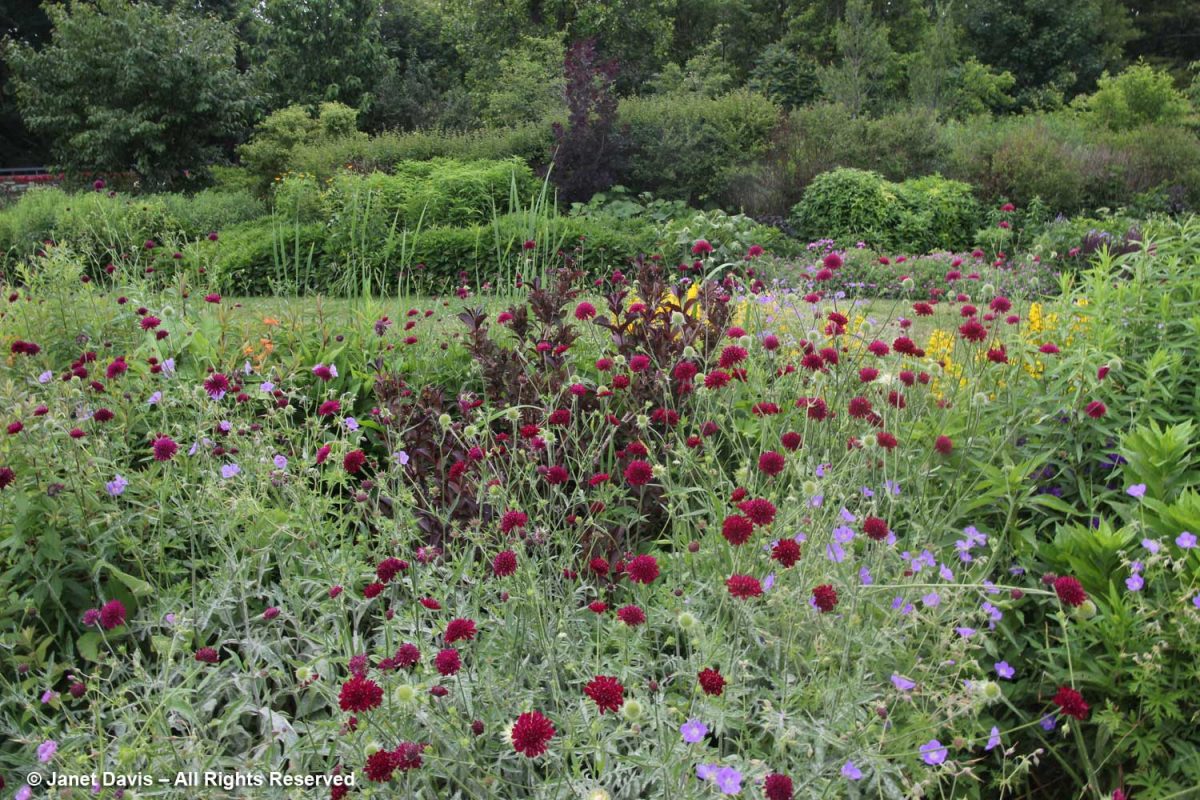
Geranium Rozanne® (‘Gerwat’) is a similar-looking cranesbill, but a cross between G. himalayense x G. wallachinianum ‘Buxton’s Variety’. Very popular and long-flowering, it was the Perennial Plant Association’s 2008 Plant of the Year. Here it is with the yellow Itoh peony hybrid ‘Sequestered Sunshine’….
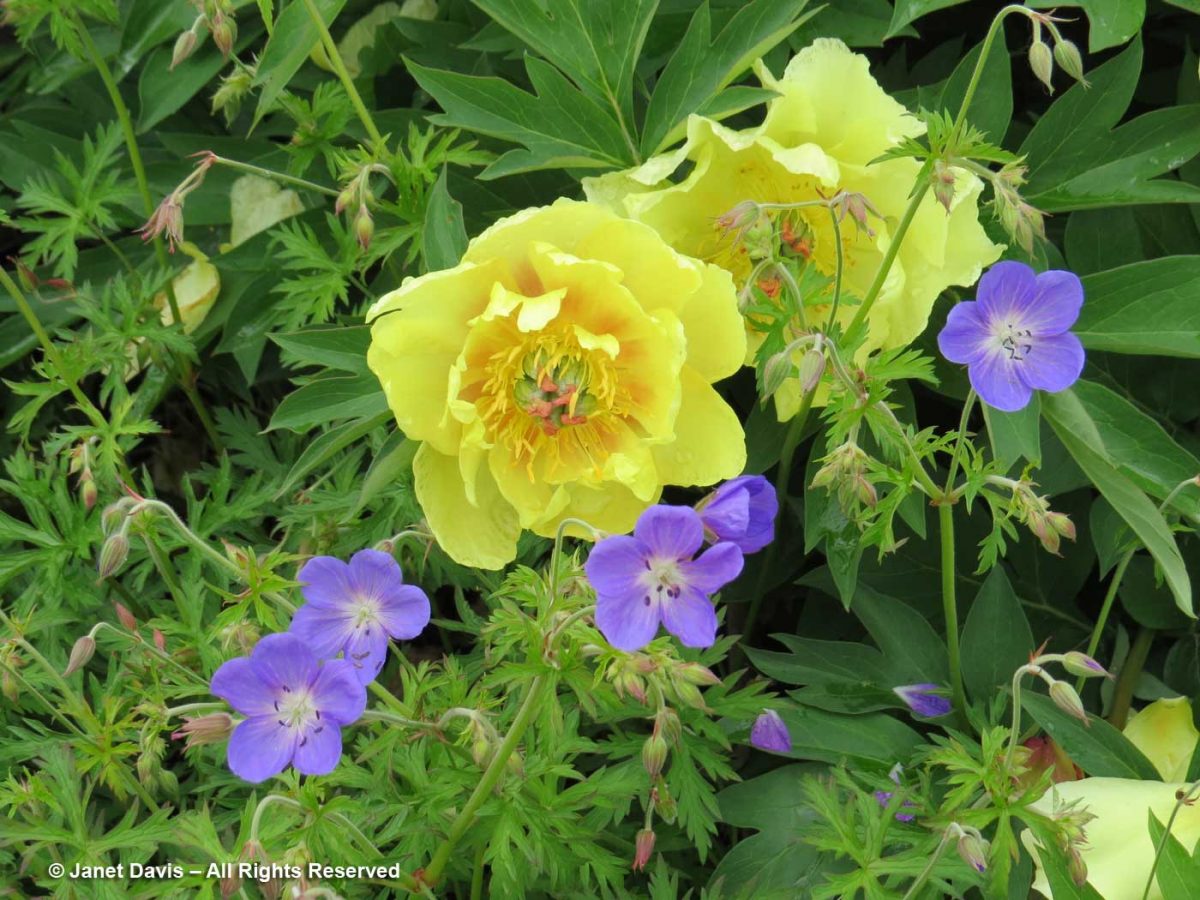
….. and billowing atop lady’s mantle (Alchemilla mollis).
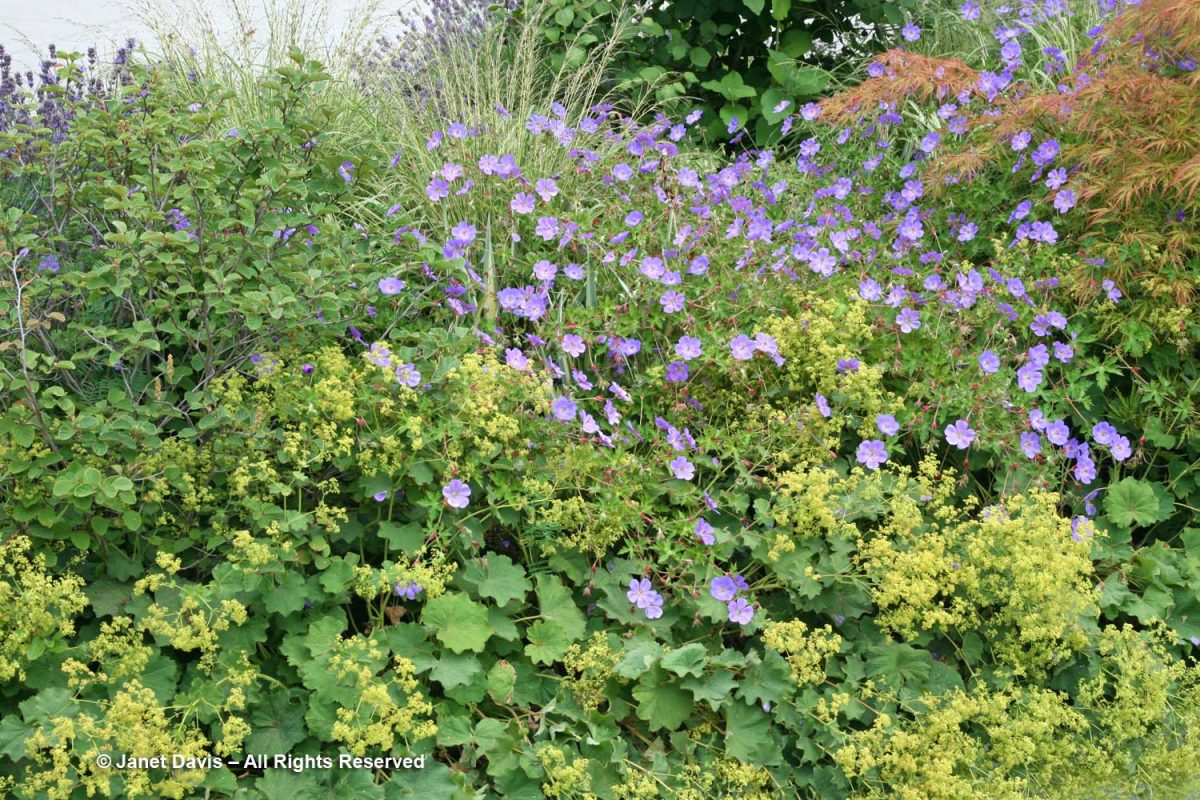
Rozanne adds a little lavender ‘zing’ to this green vignette of Molinia caerulea ‘Variegata’ and the striped leaves of Iris pallida ‘Variegata’.
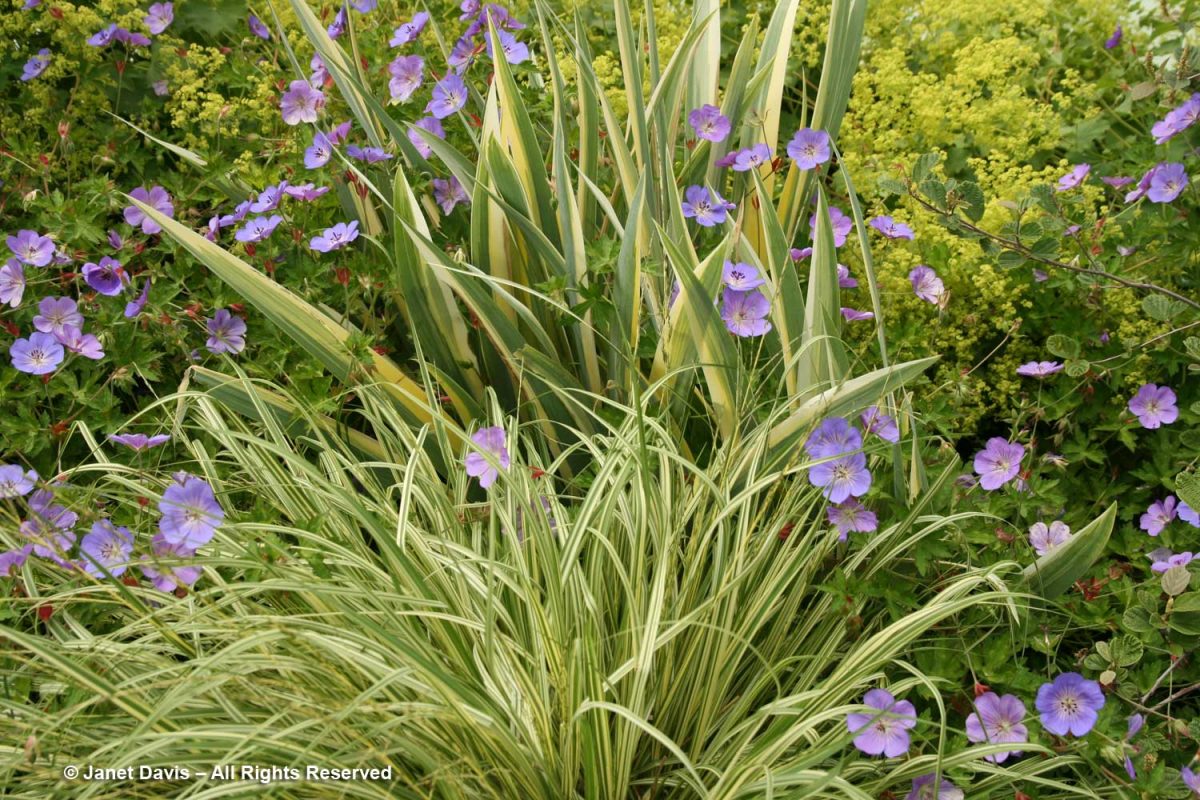
Flowering shrubs such as hydrangea can be enhanced by an underplanting of many varieties of cranesbill, like the unidentified one below.
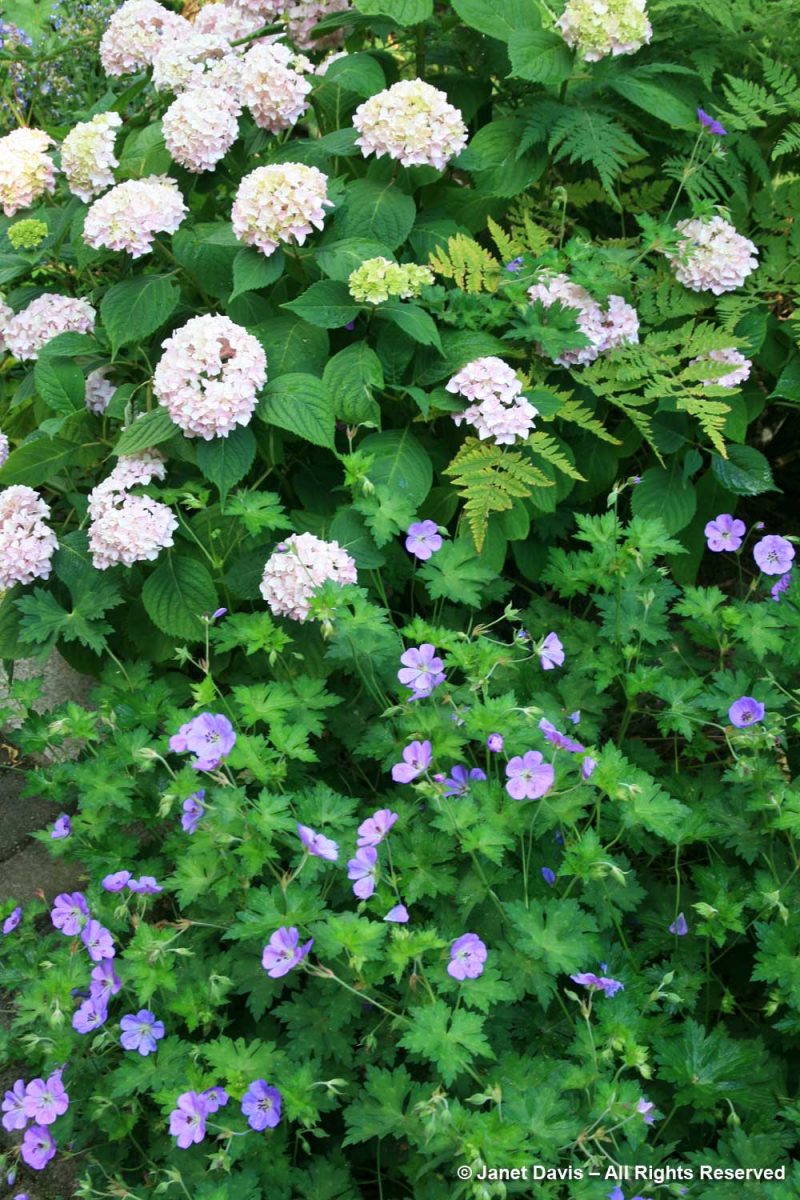
The pale-pink flowers of French cranesbill (Geranium endressii) add a delicate note to Japanese painted fern (Athyrium niponicum var. pictum).
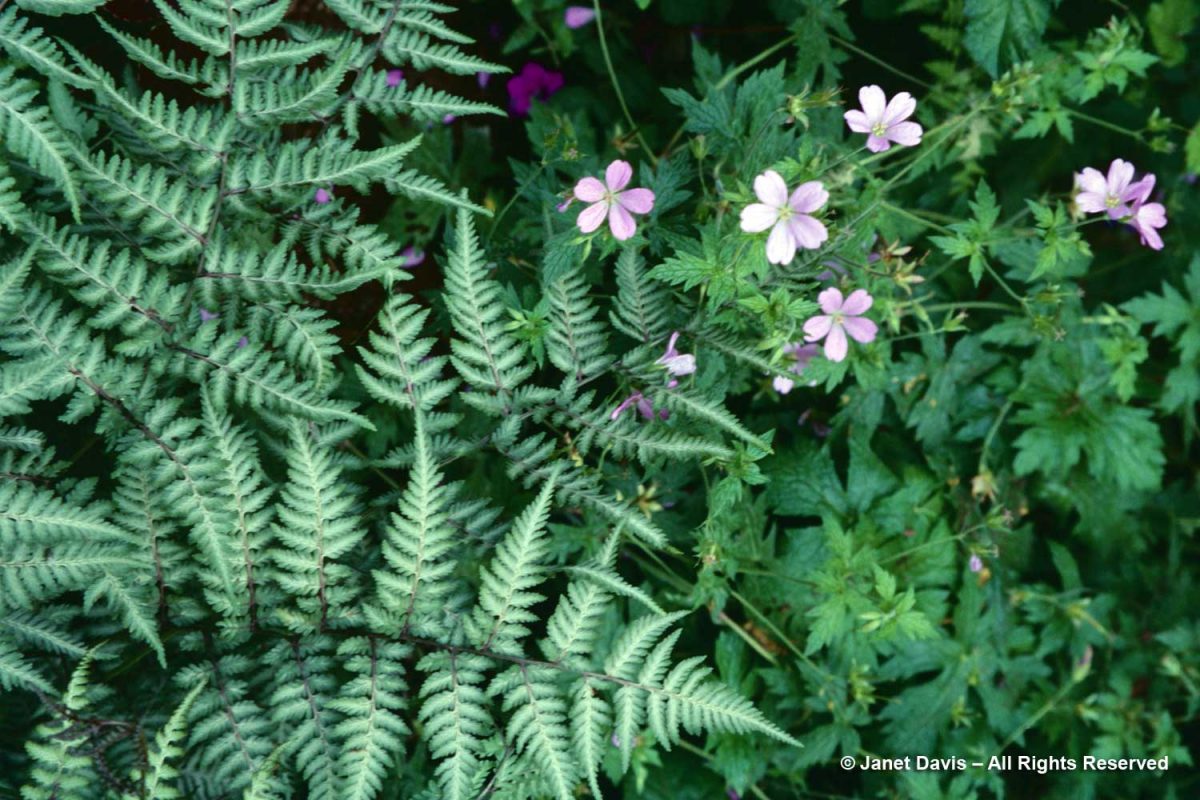
Magenta Armenian cranesbill (G. psilostemon) is rather fleeting in bloom, but looks lovely with Bowman’s root (Porteranthus trifoliatus, syn. Gillenia), below, at the TBG.
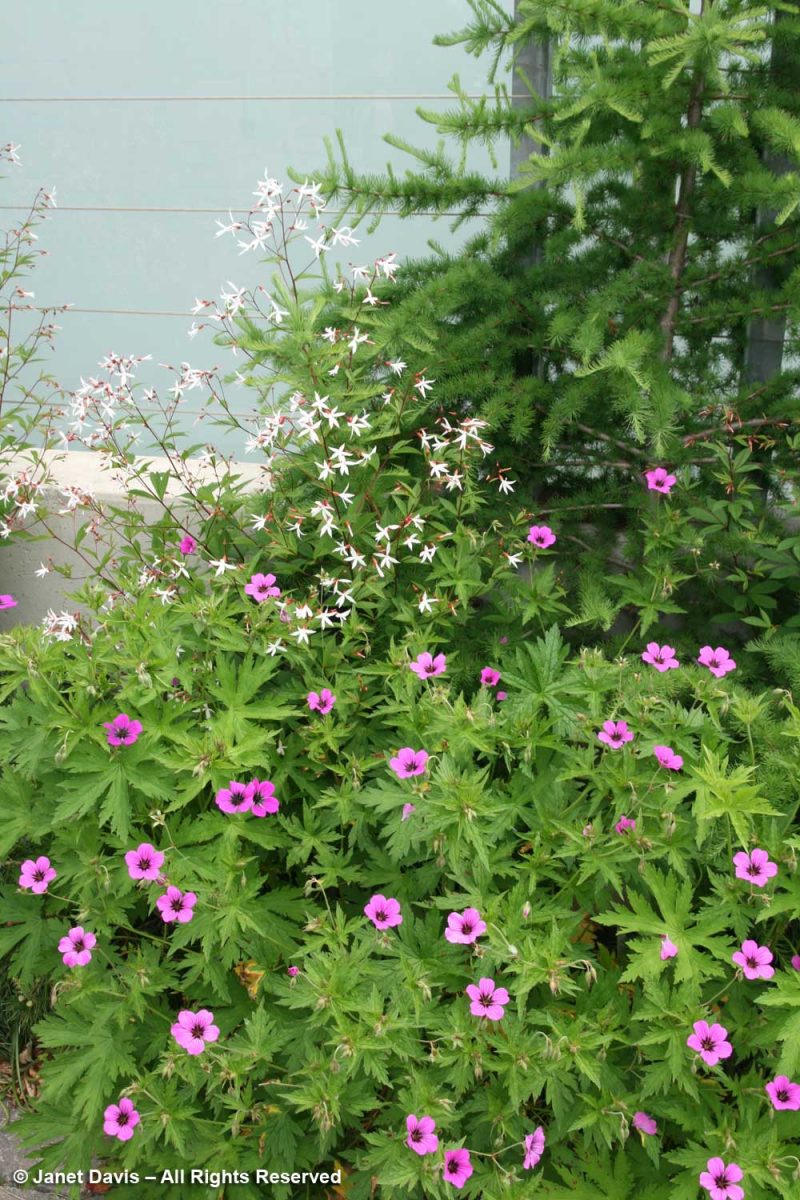
Just around the corner, it was used with tufted hair grass (Deschampsia cespitosa) in a lush design.
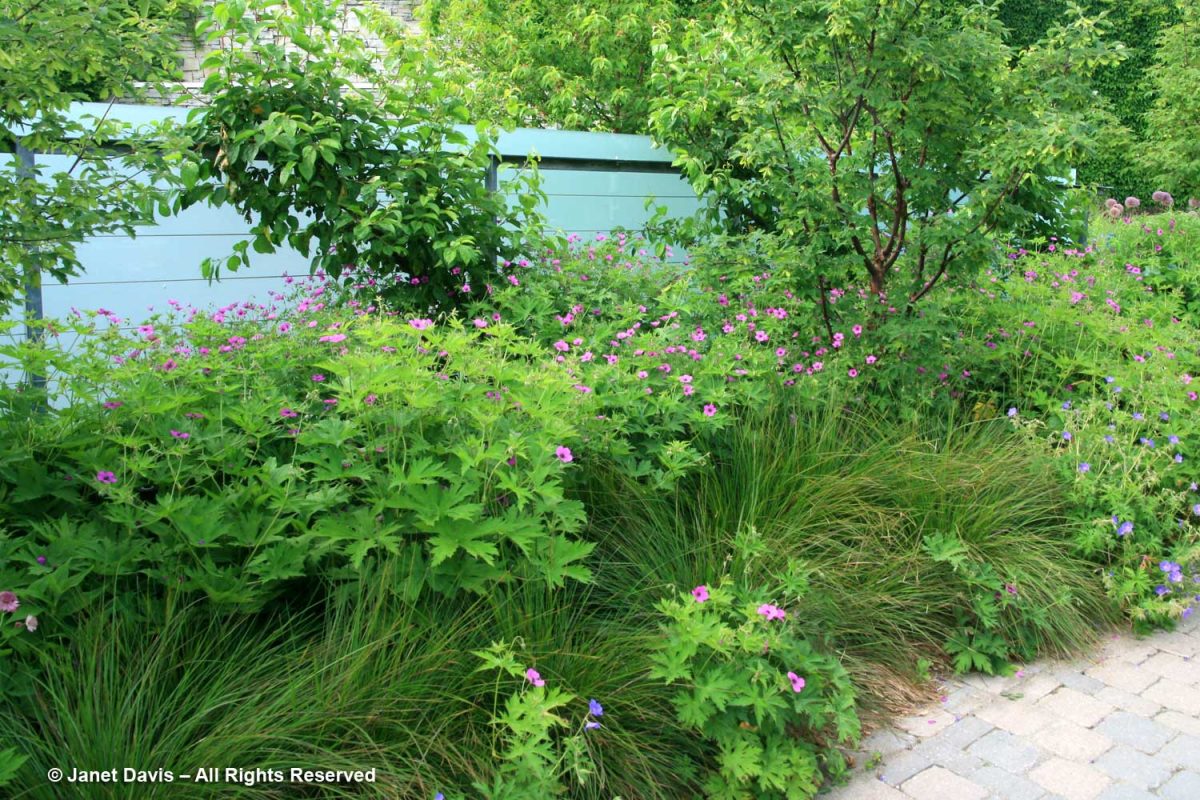
At wonderful Chanticleer Garden near Philadelphia (have you read my 2-part blog on this favourite garden?), I found G.psilostemon looking spectacular with chartreuse meadowsweet (Filipendula ulmaria ‘Aurea’).
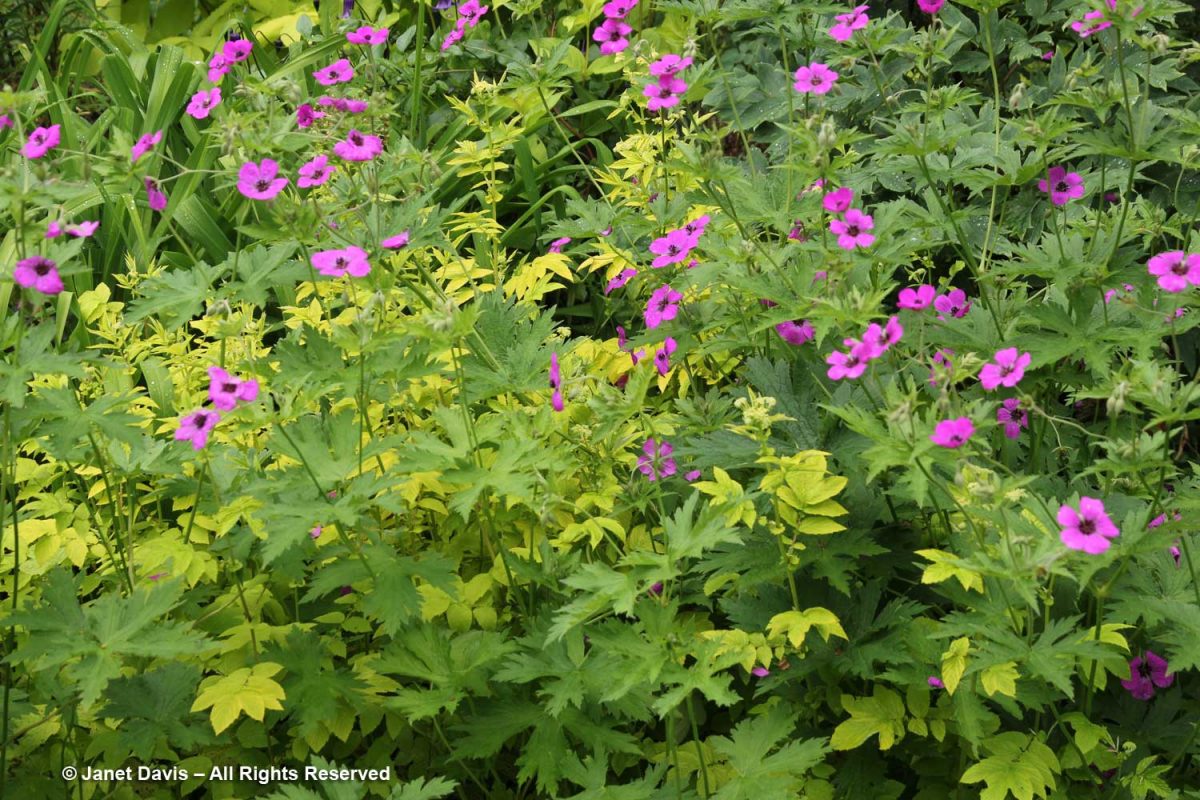
Out at Vancouver’s VanDusen Botanical Gardens one spring (another favourite garden I’ve blogged about), I was taken with this vignette featuring the hybrid Geranium ‘Brempat’ with Allium cristophii and dark Heuchera ‘Crimson Curls’.
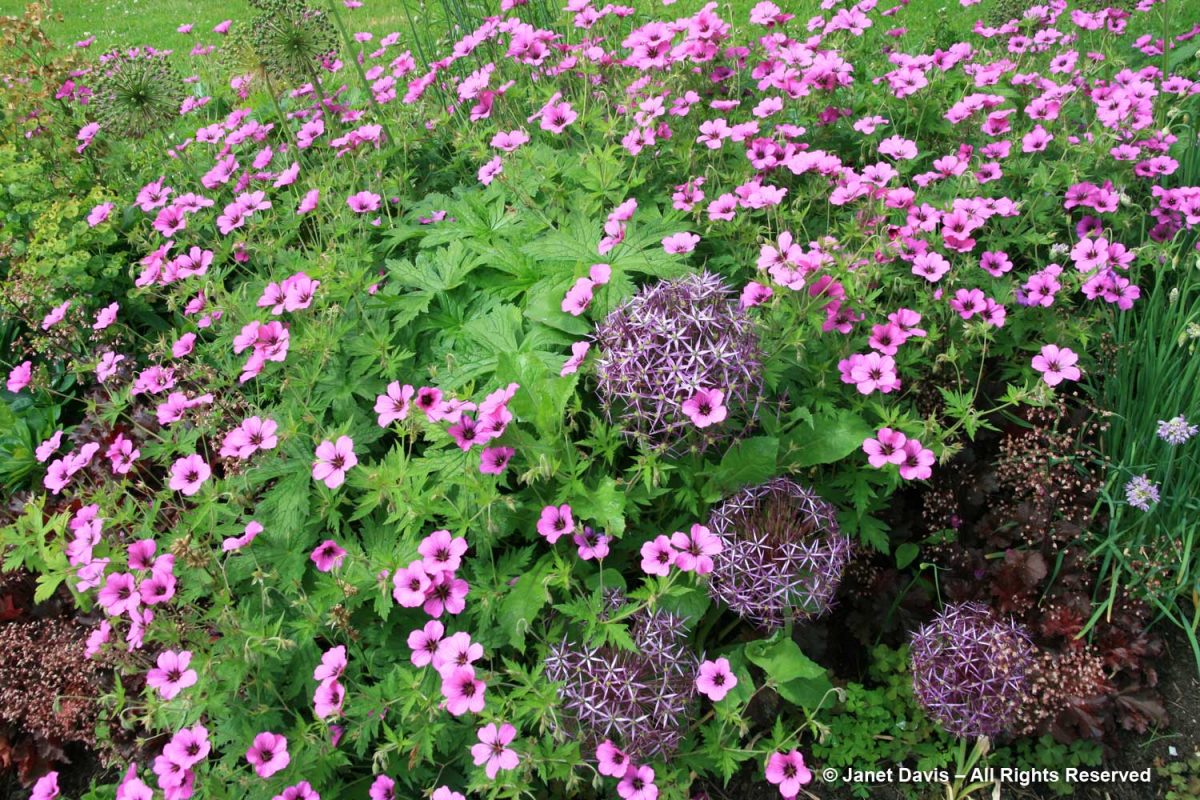
Nearby at VanDusen was the dark-coloured mourning widow cranesbill Geranium phaeum ‘Samobor’ emerging in a chartreuse sea of Bowles’ golden grass (Millium effusum ‘Aureum’).
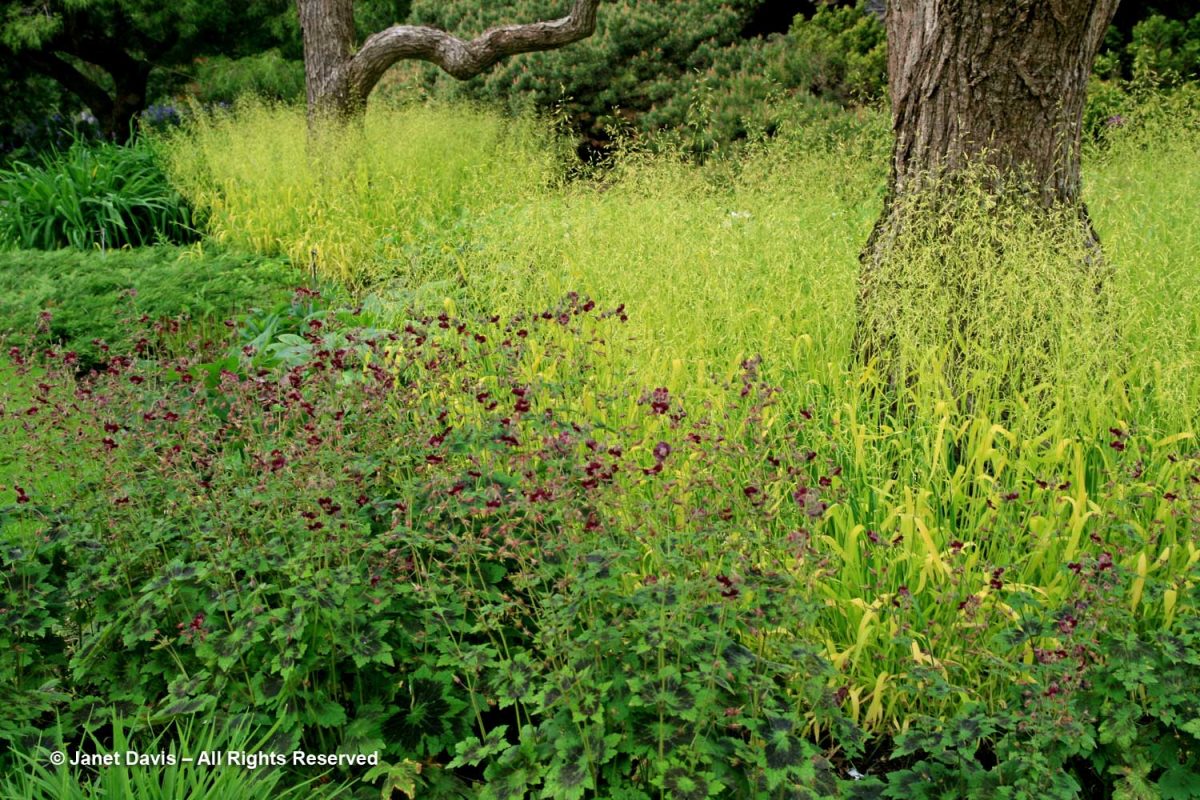
The delicate-looking but vigorous mourning widow geranium has a white form (Geranium phaeum ‘Album’) that Piet Oudolf uses in his designs, including with Baptisia ‘Purple Smoke’ in the entry border at the Toronto Botanical Garden. (I’ve also written a 2-part blog about Piet’s design for this border.)
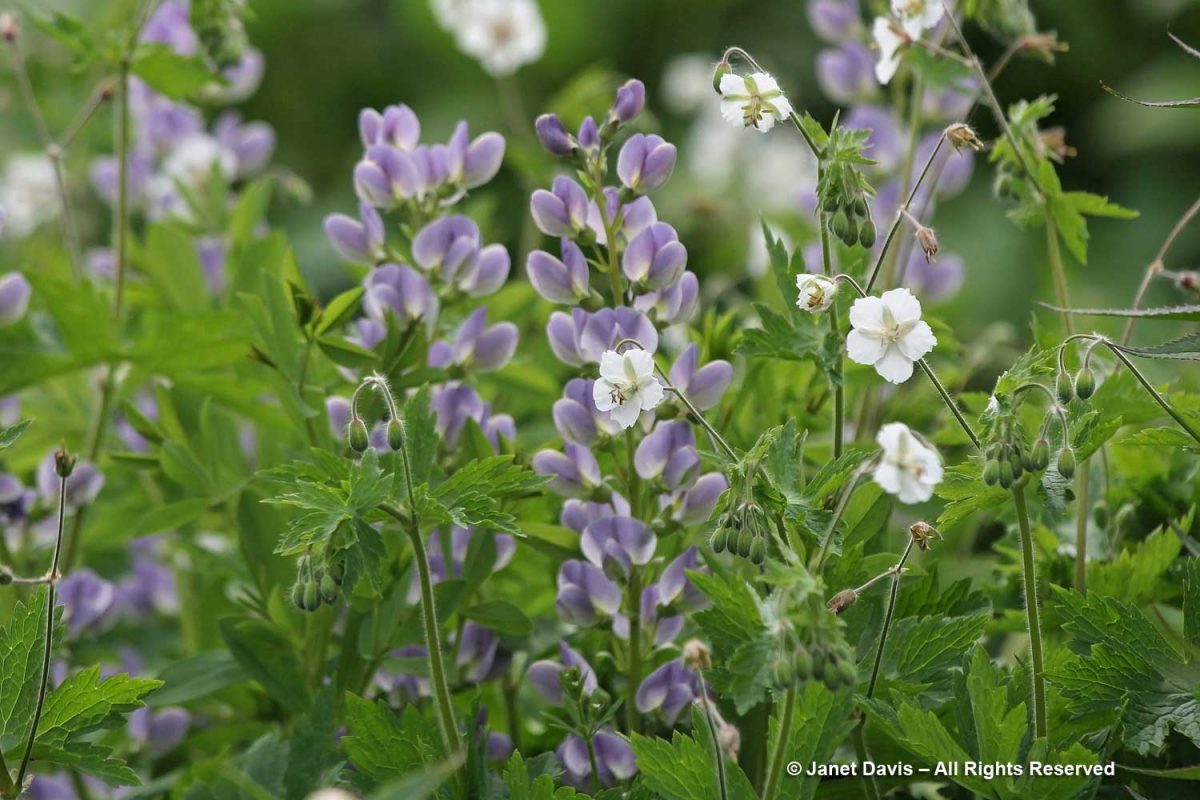
I also loved the way he interplanted Paeonia ‘Bowl of Beauty‘ just coming into flower with the white-flowered mourning widow.
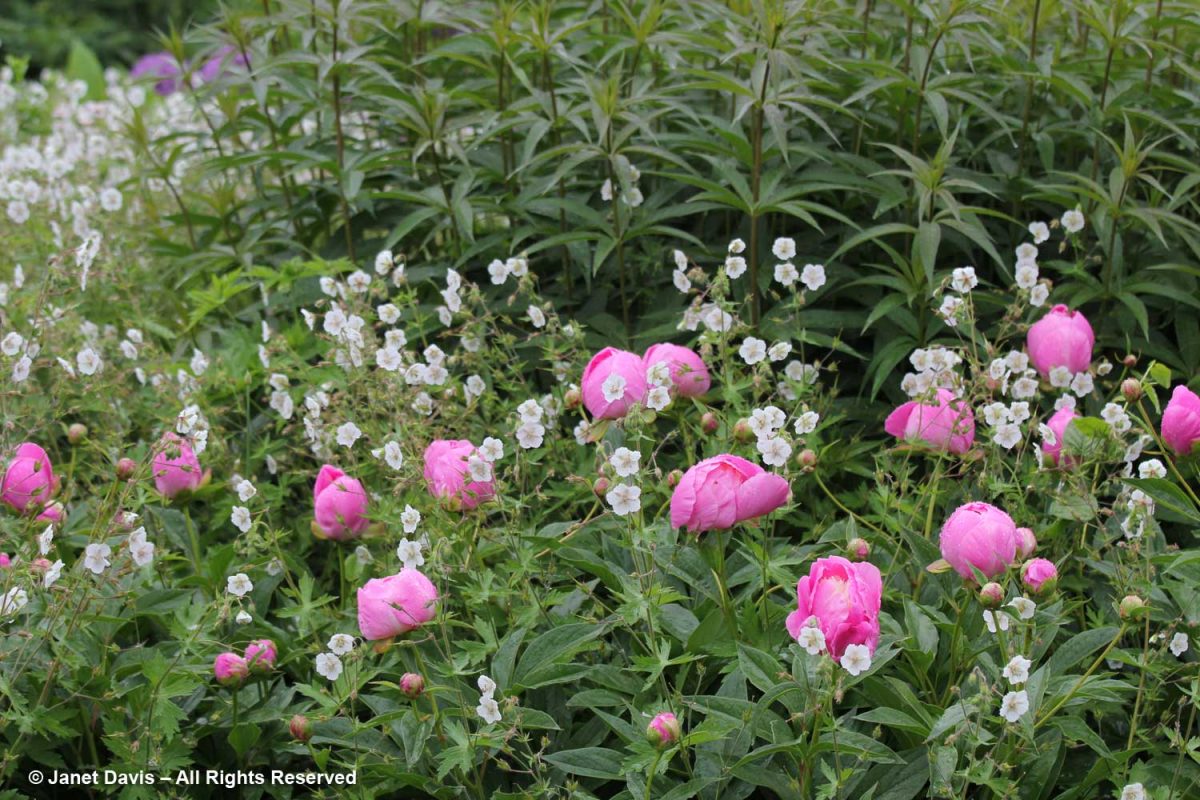
This delicate, monochromatic combination, also in the Oudolf–designed entry border at the TBG features Geranium x oxonianum ‘Rose Claire’ with Astrantia ‘Roma’.
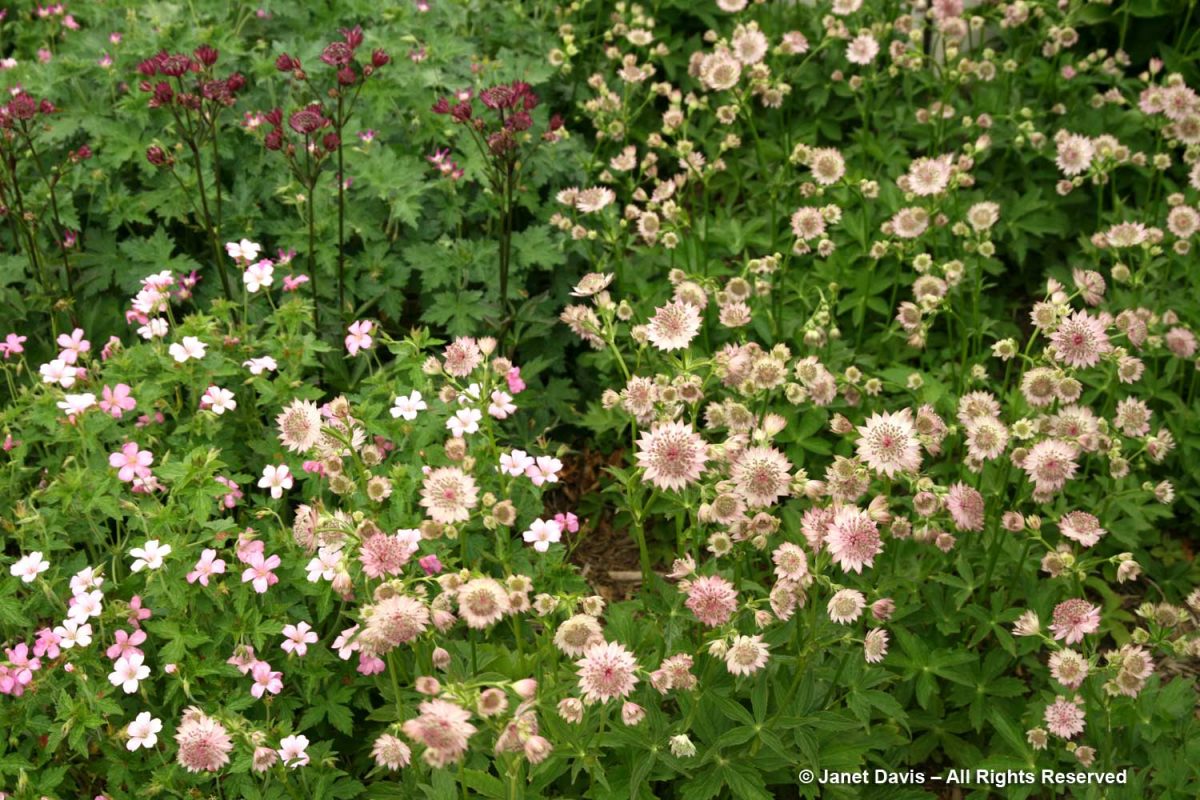
Hostas and cranesbills always look good together, as demonstrated by Geranium x cantabrigiense ‘Biokovo’, below.
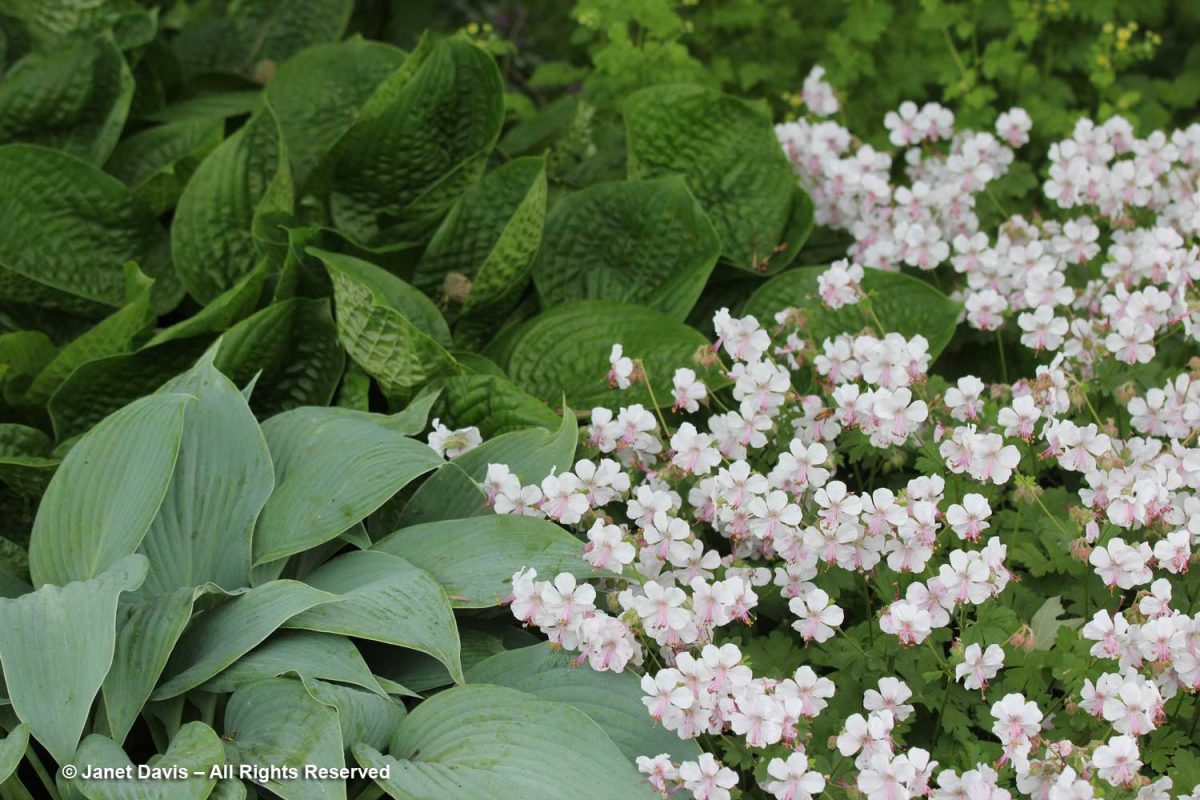
Geranium clarkei ‘Kashmir Purple’ makes an interesting contrast to the tiny white flowers of flowring sea kale (Crambe cordifolia).
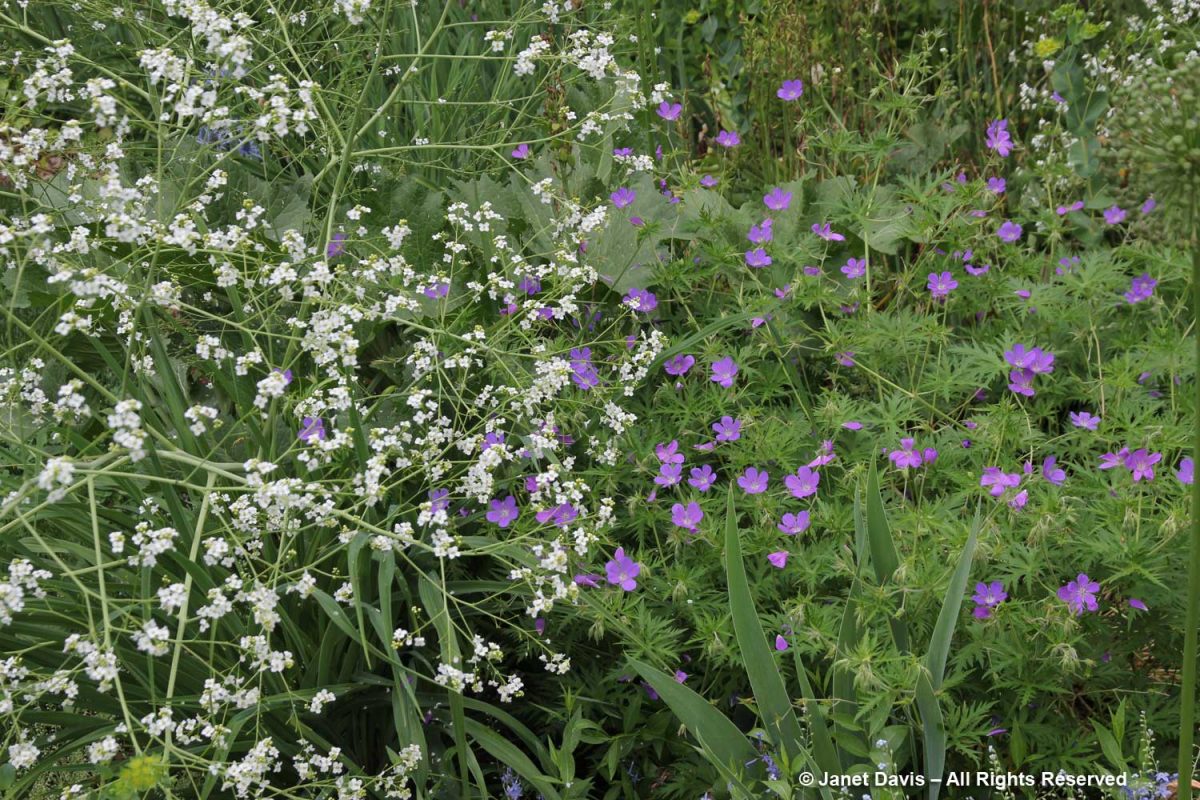
Geranium ‘Johnson’s Blue’ is an old-fashioned hybrid, a cross between G. himalayense and G. pratense. Doesn’t it look spectacular with the purple bellflowers (Campanula latifolia var. macrantha) and meadow sage (Salvia nemorosa) flanking the rose garden at Vancouver’s VanDusen Botanical Garden below?
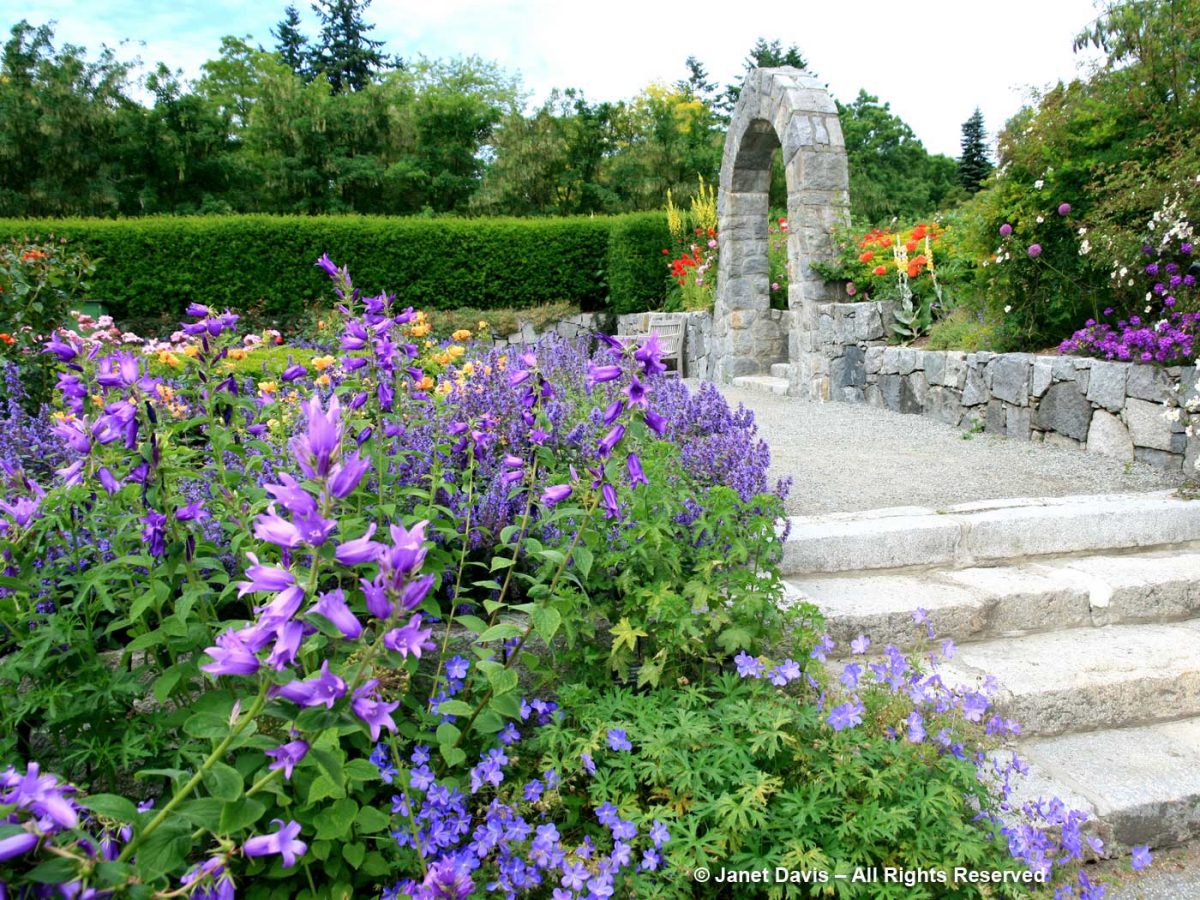
Purple always works with chartreuse, and G. Johnson’s Blue’ is the perfect companion to Heuchera ‘Lime Rickey’.
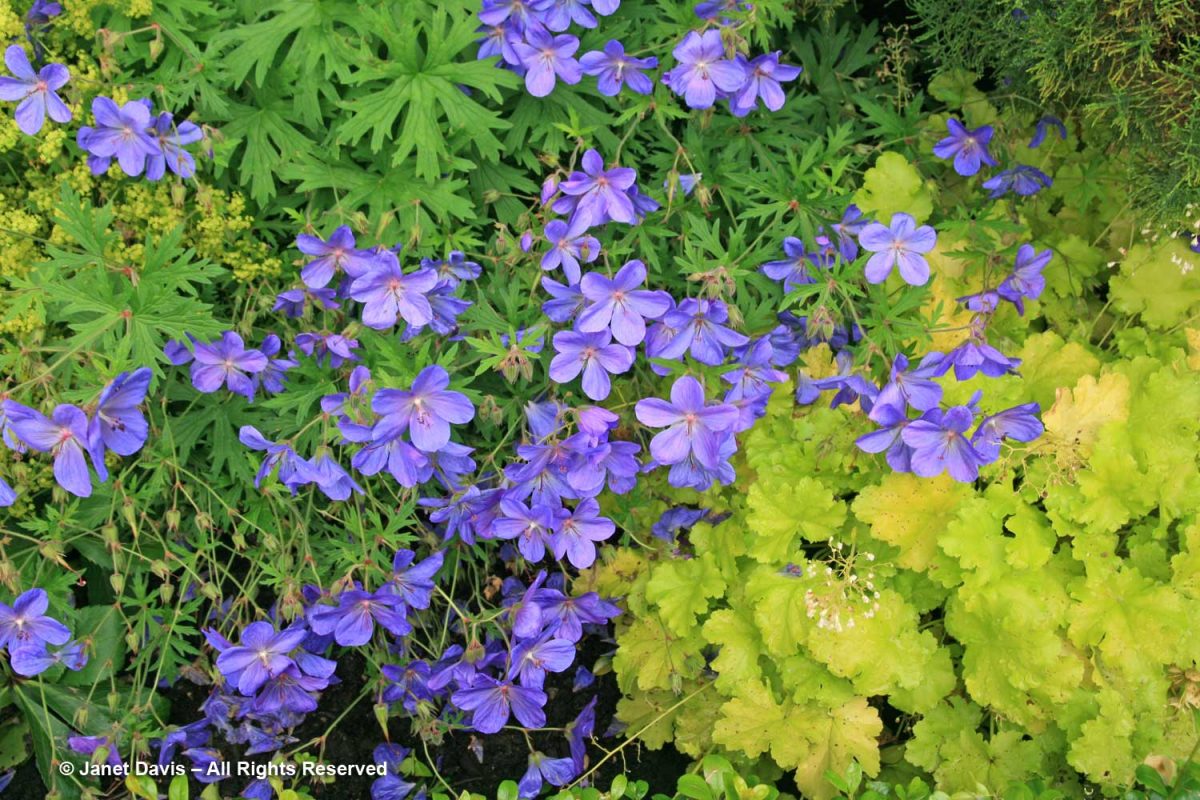
Toronto’s Spadina House is my favourite cottage garden in the world, with a mass of artful flowers tumbling around expansive vegetable gardens. Meadow cranesbill (Geranium pratense) is much-used in the garden, as with lanceleaf coreposis (C. lanceolata), below….
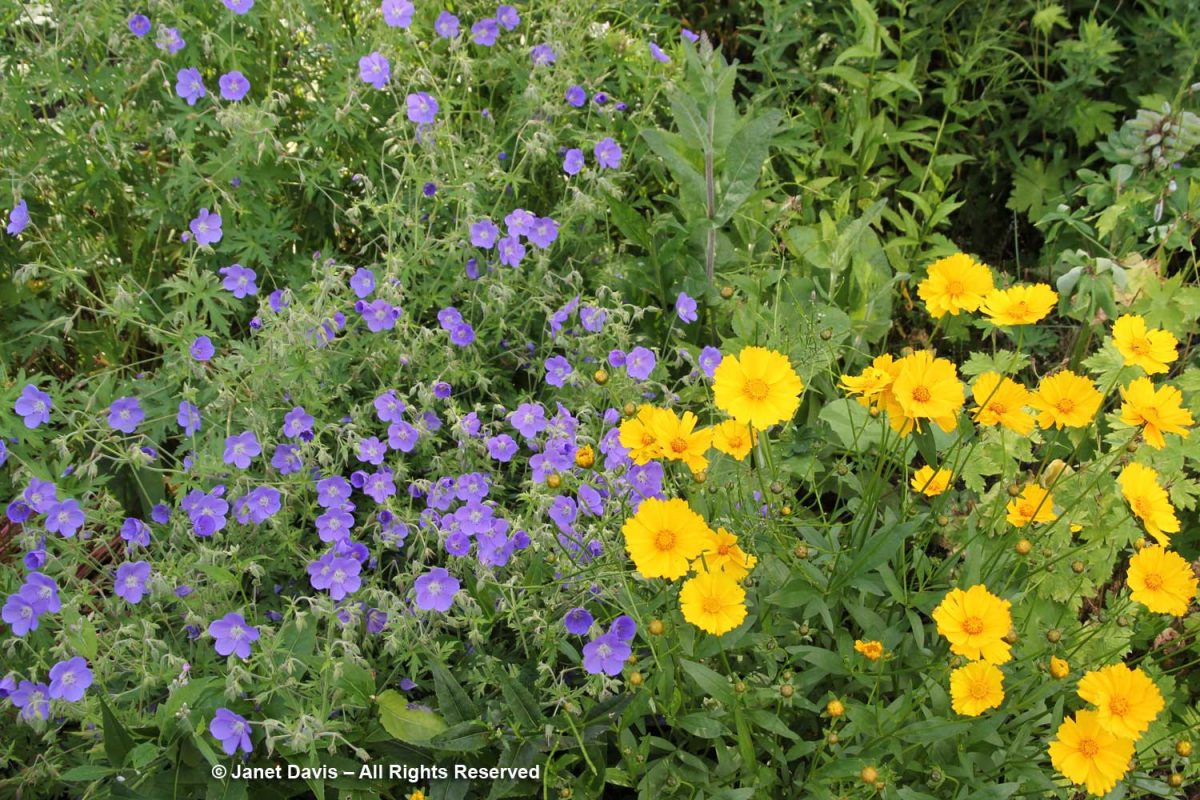
….. and foxgloves (Digitalis purpurea)….
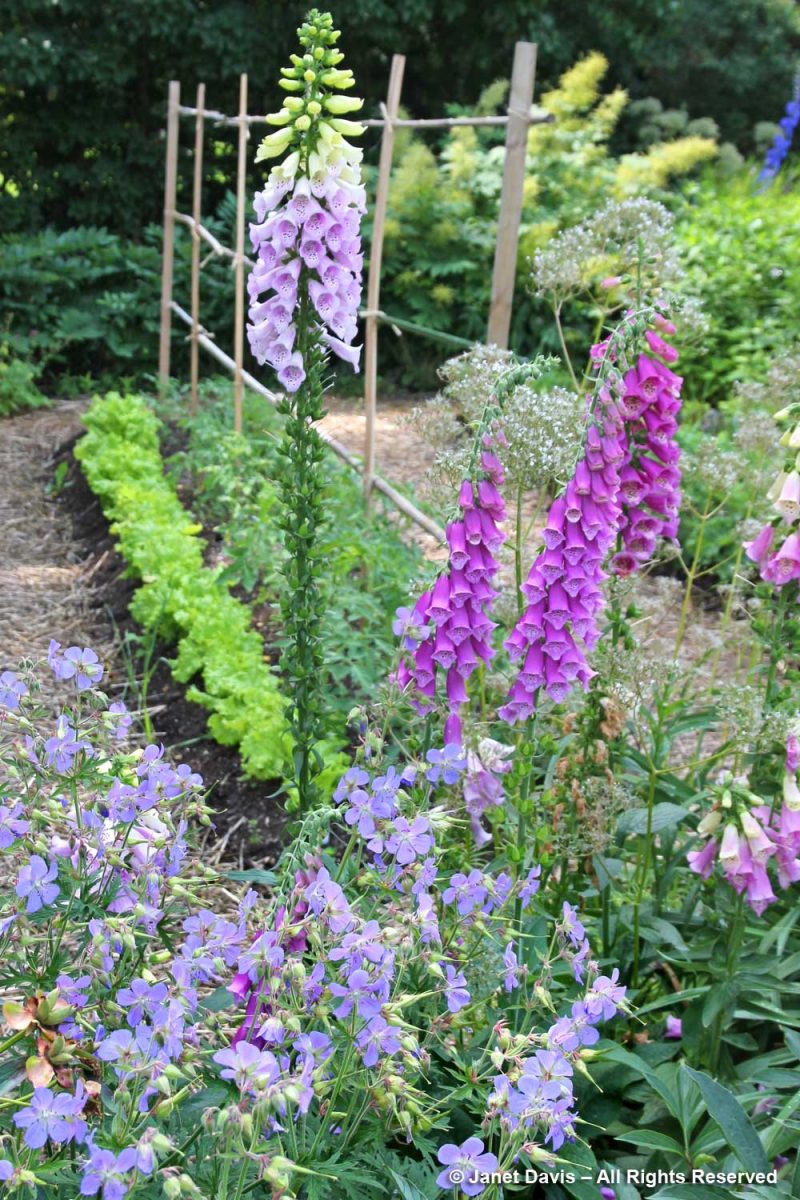
….. and small yellow foxglove (D. lutea).
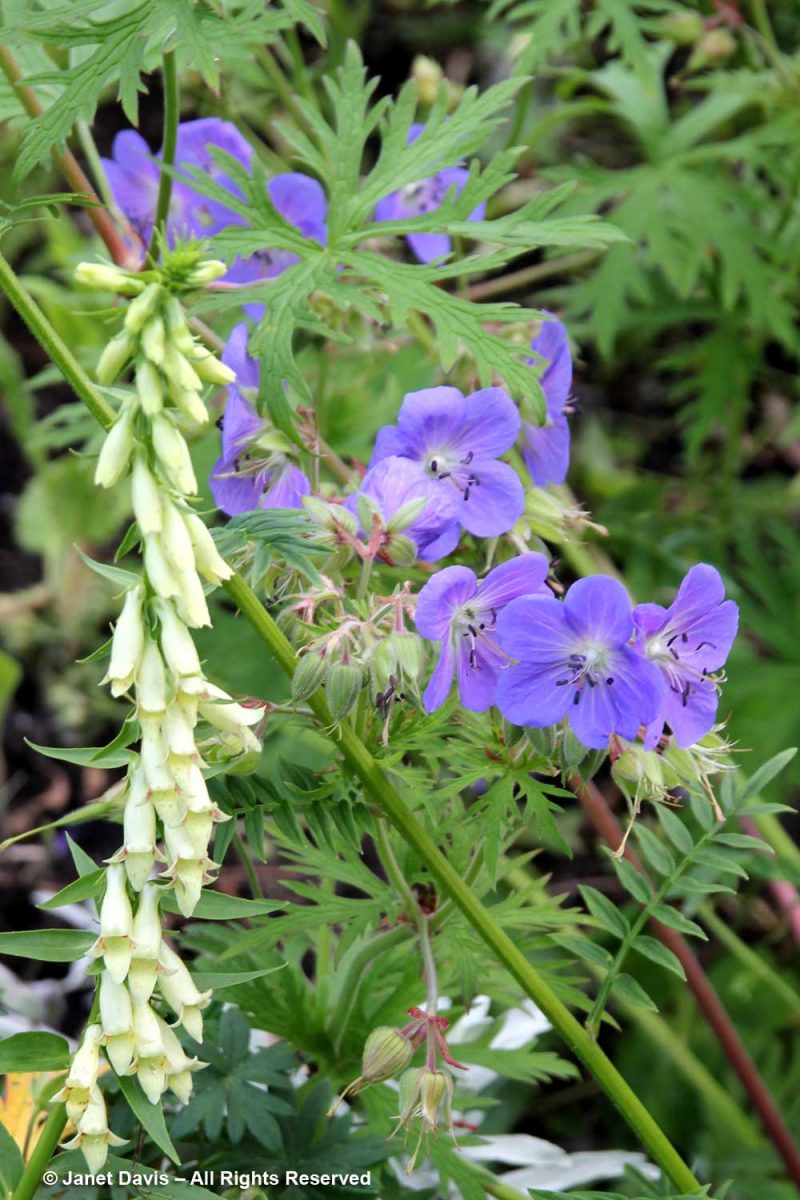
I also found it growing in the fabulous Denver garden of plantsman Panayoti Kelaidis and his partner Jan Fahs. This romantic planting of roses, gas plant (Dictamnus albus var. purpureus) and G. pratense is actually Jan’s domain! (And, of course, I wrote a blog about PK and Jan’s garden.)
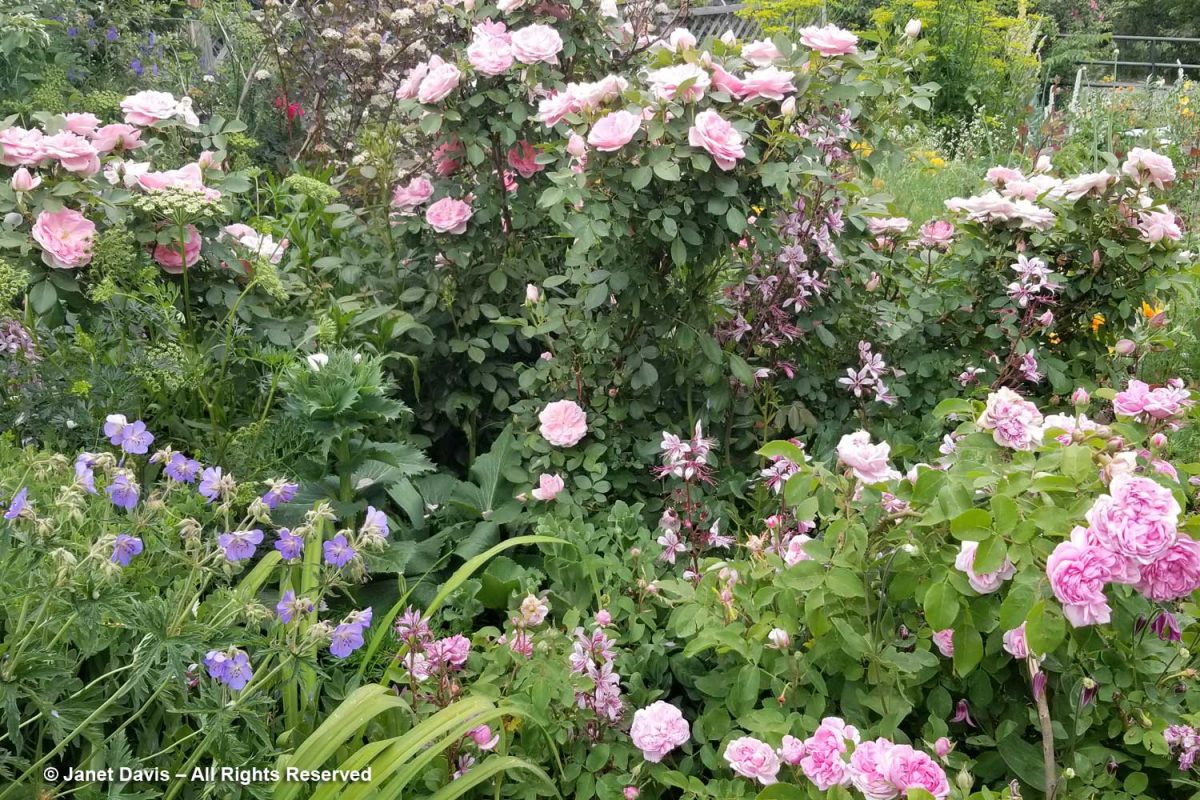
When I was having dinner at the spectacular Deep Cove Chalet restaurant in Victoria, B.C. one spring, I was enchanted by this unusual and richly-coloured combination: G. pratense with peach alstroemeria, yellow Phlomis russeliana and pink spirea.
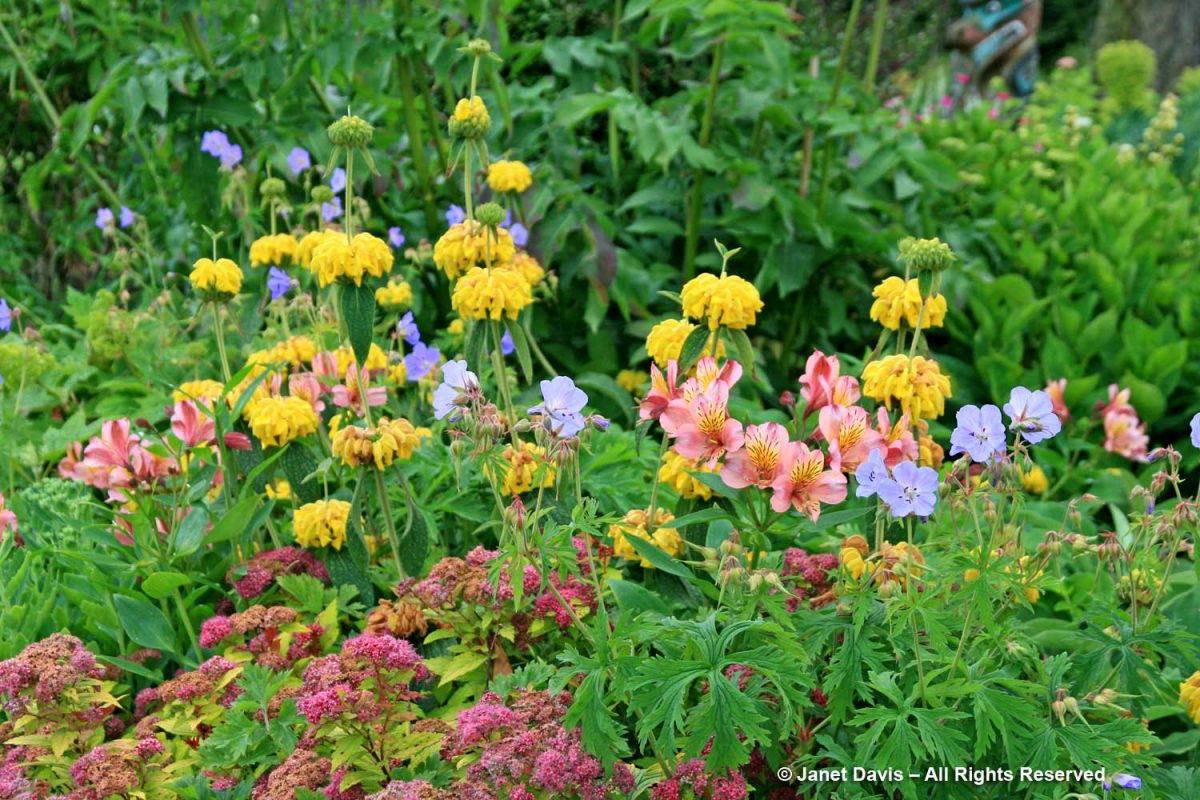
Though most cranesbills flower from late spring into early-mid-summer, there are a few species that hit their stride in late summer and continue blooming well into fall. I saw one of them one August at the Piet Oudolf-designed Lurie Garden in Chicago (another fantastic garden from my blog). For my final homage to the versatile cranesbills, meet pink-flowered Japanese cranesbill (G. soboliferum) with lilac prairie petunia (Ruellia humilis).
